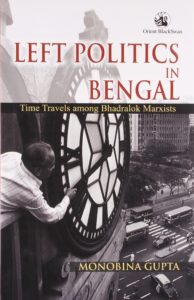ARCHIVE
The Singur-Nandigram-Lalgarh Journey
At 7.30 a.m. on 18 December 2006, Mamata Banerjee heard of the murder of sixteen-year-old Tapasi Malik, an activist in the Singur agitation. At that time, the Trinamool leader was on an indefinite fast protesting coercive land acquisition in Singur. The agitation against handing over 1,000 acres of fertile multi-crop land to the Tatas for their Nano factory, where they would build the cheapest car in India, was spreading like wildfire.
‘I am writing this from the podium where I have been on fast. Here I learnt at 7.30 on the morning of the 18th that Tapasi Malik, who till yesterday was on fast with the rest of the protestors in Singur, has been raped and murdered earlier this morning at five. […] I spoke to Tapasi’s brother from the podium. I was told that despite the presence of the family, the police had rushed the body to hospital. Immediately, I urged Trinamool MP Mukul Roy, leader of the Opposition Partha Chatterjee, and Amitabha Bhattacharya to leave for the spot so that the police and CPI-M cannot brush the incident under the carpet,’ Mamata wrote.
Terror was stalking Singur. Activists were being intimidated and thrashed; some, like Rajkumar Bhulu and Tapasi Malik, were killed. Tapasi’s murder stunned the people of West Bengal, giving the Singur agitation a razor-sharp edge. Civil society members, intellectuals, artistes, political activists of all stripes and NGO activists all joined in.
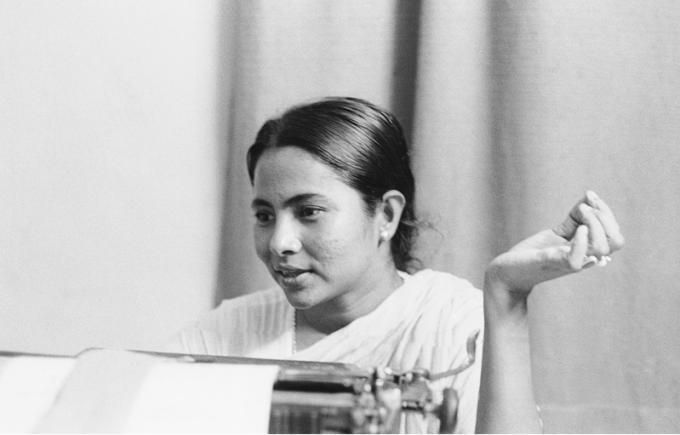
Mamata Banerjee became the general secretary of the Indian Youth Congress in 1984, also the year where she defeated veteran Somnath Chatterjee to become one of the youngest parliamentarians of the country.
Mamata demanded a CBI inquiry into the murder. She finally had her way, but not before the CPI-M had launched a smear campaign, accusing Tapasi’s father of raping her. A look at the CPI-M’s rhetoric during this period may help us understand the dynamics of the Singur upsurge—a phenomenon that marked the beginning of Mamata’s ascendance in West Bengal politics.
Within three years of her Singur struggle, Mamata found an acceptance among all sections and classes of people that far exceeded her own expectation. She was finally the ‘real’ face of a political alternative. The more the CPI-M railed against the Trinamool Congress, the more people perceived Mamata as their deliverer from an arrogant ruling coalition. To understand her swift and dramatic transition from an erratic leader to a people’s person who could transcend barriers of class, culture and politics, we must revisit those three crucial years, 2006 to 2009.
By then, their backs to the wall on the Singur issue, the communists were lashing out. Much of the rhetoric—its lack of gender sensitivity for instance—would have been only too familiar to Mamata. Here is an example of the party’s vocabulary following Tapasi’s murder, from an article in the CPI-M mouthpiece People’s Democracy:
The Central Bureau of Investigation (CBI) probing the case now believes that the young woman’s father and brother might have had something to do with her murder.
Tapasi’s death had been utilized shamelessly and to the hilt by the Naxalites, the SUCI initially, then followed up by the Trinamul Congress, the Pradesh Congress, and the BJP, to try to embarrass the CPI(M) and the Bengal Left Front government.
B. Prasant, author of the article, went on to say: ‘In all probability, the duo [Tapasi’s father Monoranjan and brother Surajit] will be subjected to sophisticated probing techniques, such as narco-analysis, brain-mapping and DNA testing. The blood samples taken from the murder site apparently do not match the samples of blood collected from Monoranjan and Surajit. The father-and-son may also be subjected to a “lie-detector” or “polygraph” test. The CBI has no doubt that young Tapasi Malik was killed in planned manner and that the story runs much deeper than what appearances would tell.’
Within three years of her Singur struggle, Mamata found an acceptance among all sections and classes of people that far exceeded her own expectation. She was finally the ‘real’ face of a political alternative. The more the CPI-M railed against the Trinamool Congress, the more people perceived Mamata as their deliverer from an arrogant ruling coalition. To understand her swift and dramatic transition from an erratic leader to a people’s person who could transcend barriers of class, culture and politics, we must revisit those three crucial years, 2006 to 2009.
A month later, the CBI arrested Suhrid Datta, secretary of the CPI-M Zonal Committee in Singur, and Debu Malik, a CPI-M supporter, in connection with Tapasi’s rape and murder. In 2008, the Chandannagar sub-divisional court sentenced both Suhrid and Debu to life imprisonment. Next year, the Calcutta High Court released Suhrid on bail, and jubilant CPI-M supporters organized a victory rally to celebrate their leader’s release.
Mamata’s Resurrection
West Bengal entered a new phase of its political history in 2006. The catalysts were Singur, Nandigram and, later, Lalgarh. Mamata stood at the threshold of a momentous phase of politics.
These developments impacted the quality of Mamata’s politics, moulding and transforming it. Her political plans had not involved becoming the nerve centre of movements of the calibre of Singur and Nandigram, with such far-reaching political and economic implications. But an unforeseen turn of events led her to this unfamiliar arena of peasants’ struggles, a quintessential feature of communist politics, a preserve of the Left. A qualitative shift marked Mamata’s transition from a theatrical activist to a figure around whom leaders, intellectuals, activists and artistes rallied. Even the well heeled, so far suspicious of her subaltern and unpolished ways, now began to view her with interest, if not admiration.
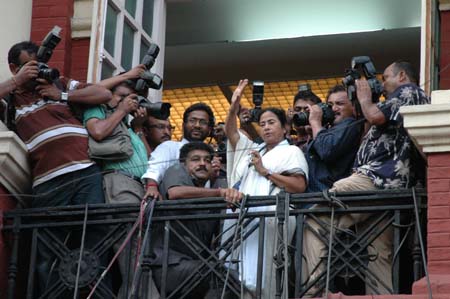
Mamata Banerjee’s first day at the Writers’ Building. Photo Credits: AITC Official.
The exit of the Tatas from Singur provoked political and economic pundits to pronounce Mamata’s doom. They said she’d be perceived as driving industrialization out of a state that was economically stagnant and in desperate need of industries. However, Mamata continued to gain electoral ground. The middle classes, dismayed though they were over the collapse of the Nano project and the exit of the Tatas, voted for the Trinamool Congress in the municipal elections. Even the middle-class Salt Lake area went the Mamata way. Clearly, anger against the Left exceeded innate reservations of class, politics and culture that in the past had weighed Mamata Banerjee down.
Today, most commentators, at least at the national level, believe that the continuum of movements—beginning with Singur, gaining ground at Nandigram, and then flowing into the tribal upsurge at Lalgarh—had their genesis in the Trinamool Congress and Mamata Banerjee. Without a doubt, Mamata—who had been virtually written off until then—was the most effective beneficiary of the movements. The pertinent question though is: did the movements ‘make’ Mamata Banerjee? Or did she ‘make’ them?
The CPI-M rhetoric is that these struggles are part of a Trinamool-Maoist conspiracy to derail industrialization and destabilize the progressive, secular, democratic (the Left Front’s three pet words) government.
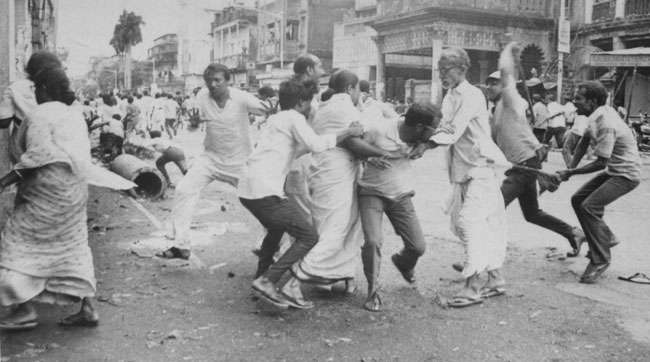
Mamata Bannerjee was attacked in 1990 by communist party goons. Photo Credits: AITC Official
But to return to our examination of the significance of these events in Mamata’s political life. There have been many catalytic agents in Mamata’s career: 1984, the victory against Somnath Chatterjee; 1990, the Hazra junction attack; 1998, founding the Trinamool; 1999, her appointment as railway minister. Like Singur and Nandigram, each one of these developments had been a marker of radical change in Mamata’s career. She defeated the veteran CPI-M MP when she was only twenty-nine years old and in the first lap of her political journey. The attack at Hazra junction on 16 August 1990 stamped her with the image of a bleeding victim, an incredibly brave woman, battling almost single-handedly, even if in vain, the CPI-M’s indomitable organization and state machinery. Mamata’s appointment as minister of railways marked her presence in West Bengal in a significantly different fashion, not just as the CPI-M’s aggressive combatant, but also as West Bengal’s ‘very own’ railway minister.
A qualitative shift marked Mamata’s transition from a theatrical activist to a figure around whom leaders, intellectuals, activists and artistes rallied. Even the well heeled, so far suspicious of her subaltern and unpolished ways, now began to view her with interest, if not admiration.
But the significance of Singur-Nandigram—coming as it did in the wake of the Left Front’s stunning electoral victory in 2006 and the Trinamool’s utter rout—was of another magnitude altogether. Between 2006 and 2009, the peasant movements changed all that, reinventing the Trinamool Congress, resurrecting and re-energizing its leader. All of a sudden, Mamata, went from being the chastened Opposition leader to becoming the most formidable contestant for power that the Left had ever tackled. Singur-Nandigram recast the image of the Trinamool, lending it the political content it sorely lacked. Crucially, the Trinamool breached the Left’s political territory, representing itself as a party of peasants and the underclass. As events unfolded, the party acquired a fundamentally new image, almost as if it had morphed into a new political entity.
In the past, Mamata Banerjee’s popularity had stemmed from her aura: her lower-middle-class background, her humble residence in a run-down area of Kolkata and her deliberate shunning of accoutrements of privilege. The Trinamool Congress leader seemed to stand out in her sheer ordinariness. But none of this helped her break through to the Left-leaning bhadralok activists, artistes and intellectuals. Not long ago, comments like ‘you do not entrust the maid with the keys to your house’ could commonly be heard in Kolkata. The radical, anti-establishment character of the bhadralok has always coexisted with a deep social and political conservatism. So even those sections of the bhadralok that were anti-CPI-M did not automatically accept Mamata.

Mamata Banerjee being sworn in as West Bengal’s Chief Minister for the second time. Photo Credit: AITC Official.
For all of these reasons, 2006 was a watershed in Mamata Banerjee’s political career. Armed with her breakthrough experience of popular political movements, the Trinamool president could now negotiate political business with the CPI-M from a position of strength. She was no longer an inconsequential, muddle-headed adversary.
The change in the political barometer was evident, and Mamata was now pulling off one electoral coup after another. Even her rhetoric was more than just emotional outbursts now. Many argue that, during this period, she acquired the political language and the idiom of the Left. For instance, her slogan ‘Maa, Maati, Manush’ was essentially born out of the struggles in Singur and Nandigram, each word drawing attention to a different aspect of the emotional-political charge of those movements: ‘Maa’ synonymous with Bengal, which to Mamata, was always supreme; ‘Maati’ standing for ‘land’ not just in an economic sense, but as something people are wedded to, around which their lives revolve; ‘Manush’ referring to humanity, to humanism, which Mamata believes to be her only political ideology in the face of brutal state repression and killing.
Peasant struggles, Mamata well knew, were what had given Left politics in West Bengal its unique identity. In Andoloner Katha, a collection of essays, Mamata seems to have imbibed—if not outright appropriated—the Left’s polemics on liberalization and the need for an alternative trajectory of development. She writes: ‘In the name of development, unethical and unprincipled professional politicians-turned-businessmen are out to sell the country’s education, civilization, culture and economy.’ Again: ‘Truly, the development of twenty people is today the primary objective of politicians. Why should they think of the concerns of millions of people? They have to think of just those twenty inordinately wealthy people. […] They call it industrialization, but it is actually a narrative of destruction.’
All of a sudden, Mamata, went from being the chastened Opposition leader to becoming the most formidable contestant for power that the Left had ever tackled. Singur-Nandigram recast the image of the Trinamool, lending it the political content it sorely lacked. Crucially, the Trinamool breached the Left’s political territory, representing itself as a party of peasants and the underclass.
Suddenly, Mamata’s party of ’non-intellectuals’ started drawing to its fold a large number of Left-wing academics, intellectuals, artistes. A section of the Left-oriented disenchanted voters began to seriously consider the Trinamool Congress as a viable electoral alternative. Many, however, still held out in the early days of turbulence. ‘More than Nandigram, Singur made a qualitative difference to the party,’ says a senior Trinamool Congress leader, adding: ‘It was the first in the series of movements that changed the political landscape.’
But Nandigram and Singur were certainly not the first time that Mamata had led agitations or mobilized huge crowds. If anything, fasts and dharnas were her most tested forms of agitation. For instance, human rights activists speak of her twenty-four-day dharna at Dharamtala against deaths in police custody. So what lent the Singur movement its special quality? In Mamata’s words: ‘I have agitated in the past; I have seen huge gatherings on the Brigade Parade Ground on
21 July as well as on other occasions. There would be a sea of people, but just on that one day. But never before have I seen a constant stream of people for so many days. Do remember, this place is really far and not easily accessible. It is difficult to reach the spot and stay here.’
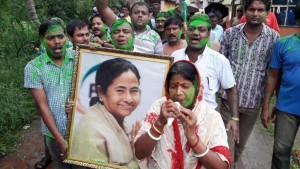
Mamata Banerjee’s image being carried at a protest march in Singur. Photo Credit: AITC Official.
It’s true that Mamata gained immeasurably from these agitations then. But she did not ‘make’ them. Though Singur and Nandigram—even Lalgarh—are often tied to the Trinamool Congress, the reality is somewhat different. The roots of these resistances were scattered, not concentrated in one single individual or party. To the CPI-M, the diverse people in the movements were simply ‘outsiders’ (interestingly a term which was also used recently by Libyan President Col. Gaddafi against protesters demanding liberty in Libya). The CPI-M either failed to or refused to recognize the unusual character of these movements. Before we go on, it is important to outline the broad contours of the Singur-Nandigram movements to understand the context for the re-emergence of Mamata.
Storming the Communist Bastion
In the initial stages of the Singur movement, the Trinamool Congress’s contribution was confined to the active role played by Rabindranath Bhattacharya, the party’s local MLA. ‘It was everybody’s movement. The Singur Krishi Jami Raksha Committee [SKJRC] was heading the agitation, which included the SUCI and various factions of Marxist-Leninist parties,’ Pradip Banerjee, who headed the SKJRC for a while, told me.
In the words of singer-songwriter Kabir Suman, who was elected to Parliament on a Trinamool ticket in the 2009 general elections, ‘The huge setback the Left suffered since 2006 was not due to any particular political party or leadership. The credit goes to the people of Bengal and the role of grambanglar jhanta (the broomstick of rural Bengal).’
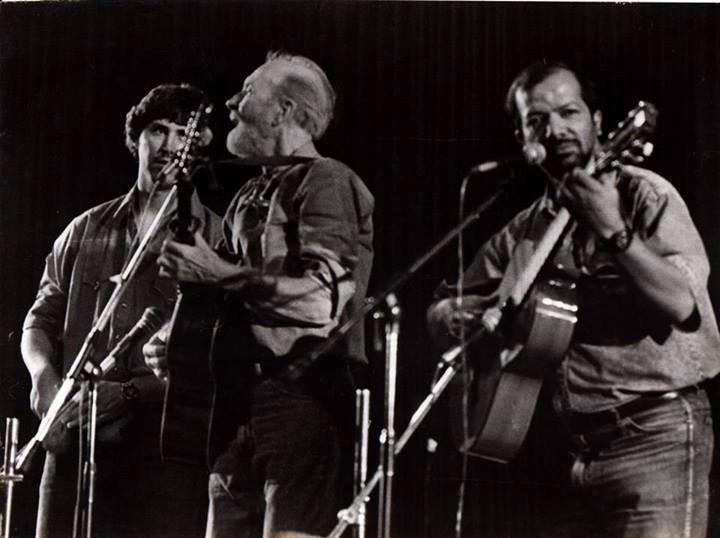
Kabir Suman (Right) performing with Pete Seeger.
Leaders of political parties as well as members of non-political organizations started arriving at Singur following a gherao of the district magistrate and the block division officer on 25 September 2006. The protesters wanted to prevent ‘fake’ claimants from picking up the compensation cheques for the land acquired in the area. ‘Leaders and individuals—Mamata Banerjee, Saugata Roy, Asim Chatterjee, Barnali Mukherjee, Naba Datta—started arriving at the site of the dharna,’ Pradip Banerjee recounts. The police mounted a brutal attack, arresting over seventy women, including a two-and-a-half-year-old girl. Historian Kunal Chattopadhyay wrote: ‘A little after midnight, a blackout was created, and under the cover of darkness, a huge police force, according to the victims well lubricated with alcohol, attacked and brutally beat up the protestors, men, women and children. Ms. Banerjee was also manhandled, and her sari torn. She was then bundled off to Kolkata by force, and had to be admitted to a hospital.’ This attack escalated the tempo of the agitation. Mamata was emerging as the political and electoral symbol of the agitation. But even then, the SKJRC, the nerve centre of the movement and a platform of diverse non-partisan groups and individuals, enjoyed a great deal of autonomy in decision making.
In the initial stages of the Singur movement, the Trinamool Congress’s contribution was confined to the active role played by Rabindranath Bhattacharya, the party’s local MLA. ‘It was everybody’s movement. The Singur Krishi Jami Raksha Committee [SKJRC] was heading the agitation, which included the SUCI and various factions of Marxist-Leninist parties,’ Pradip Banerjee, who headed the SKJRC for a while, told me.
In the words of singer-songwriter Kabir Suman, who was elected to Parliament on a Trinamool ticket in the 2009 general elections, ‘The huge setback the Left suffered since 2006 was not due to any particular political party or leadership. The credit goes to the people of Bengal and the role of grambanglar jhanta (the broomstick of rural Bengal).’
‘All parties were invited—Subrata Mukherjee, then a Congress leader, Anuradha Talwar and Swapan Ganguly of the Paschim Banga Khet Mazdoor Samiti, Saifuddin Chowdhury and Samir Putatunda of the Party for Democratic Socialism,’ says Pradip Banerjee. After police attacked and arrested delegates on their way to Singur to attend an open convention, the range of participants widened. ‘We then approached the Congress, the breakaway Forward Bloc, Janata Dal (Secular), and Samajwadi Party to join the movement,’ adds Banerjee. Mamata began her fast on 4 December 2006, on a podium near Kolkata’s Metro Channel, in protest against the police action.
In Nishaaner Naam Tapasi Malik, his recently published best-selling book, Kabir Suman traces the beginning of his journey with Mamata as a participant in the Singur movement: ‘Mamata Banerjee had begun her fast. Abhash Munshi from the Mazdoor Kranti Parishad, Bijoy Upadhyay, president of the Samajwadi Party’s West Bengal unit, and radical activist Barnali Upadhyay had also joined her.’ Suman was then working with the current affairs programme at Tara News channel. ‘On the TV monitor, I saw CPI-M leaders addressing the media. A CPI-M leader cracked a joke about Mamata Banerjee getting hurt in the police attack at Singur. In full camera glare he said, “Why does she get hurt on her chest so much?” He kept repeating the ugly comment. I made up my mind, deciding to go to the spot where Mamata was fasting, to show my solidarity with her.’
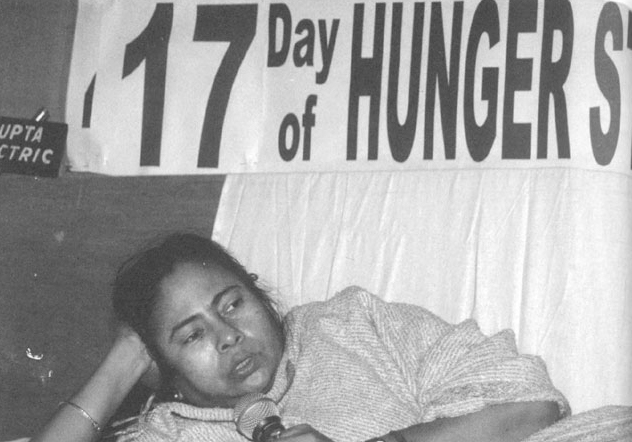
Mamata Banerjee on a Hunger Strike. Photo Credit: AITC Official.
Suman describes his first face-to-face encounter with Mamata thus: ‘This was the first time I saw Mamata from close quarters and spoke with her. Exhausted from fasting, she was lying down, wrapped in a blanket. She tried to get up on seeing me and would not heed my protests. We had a brief conversation. She spoke in a low but spirited tone. I told her, “I have come here in solidarity. I am concerned about your health.” Folding her hands in gratitude, she said, “Please do not worry. I will continue my fast.”’
But Bengal’s intellectuals and artistes were still hesitant about sharing a podium with Mamata. ‘How many artistes and intellectuals had gone to the fasting site?’ asks Suman. Mahasweta Devi was one of the first ones to visit her and express solidarity. ‘For a long time, I have noticed the “keep-away-from Mamata” attitude. I really cannot claim that I myself was totally free from it. Truthfully, I did not like her alliance with the BJP; I could not accept its continuation even after the massacre of Muslims in Gujarat by Hindu fascists,’ is Suman’s candid confession. Rather than shun the sceptics, Mamata waited her turn, which arrived at the end of the Singur-Nandigram-Lalgarh journey. Finally, she seemed to have whittled down the reservations of the large group of intellectuals and artistes. They were now firmly by her side.
[Kabir] Suman was then working with the current affairs programme at Tara News channel. ‘On the TV monitor, I saw CPI-M leaders addressing the media. A CPI-M leader cracked a joke about Mamata Banerjee getting hurt in the police attack at Singur. In full camera glare he said, “Why does she get hurt on her chest so much?” He kept repeating the ugly comment. I made up my mind, deciding to go to the spot where Mamata was fasting, to show my solidarity with her.’
The initial activity around land acquisition in Singur didn’t breach the barrier totally. In fact, after a point, the noise died down. Then in 2007, Nandigram erupted when police opened fire on protestors there. The long saga of the pitched battle in Nandigram seemed to re-infuse energy across the rest of the state. By 2008, Singur was on the boil again, and in the long run it would be Singur that would tip the scales politically in the state. In August 2008, dramatic scenes unfolded along the Durgapur Expressway. Different political parties and organizations set up twenty-one camps on the side of the road. Earlier, in 2006, Mamata had gone on a twenty-six-day hunger strike, demanding that the state government return 400 acres of land to the peasants of Singur. The finale to the tussle over the Nano project in Singur had begun.
‘Leaders, workers and, above all, people are staying here through day and night. […] People are bringing a handful of rice and dal for all the satyagrahis. MLA Rabinbabu is supervising the cooking of khichri. As soon as dawn breaks, the volunteers get down to work, cleaning the area. A total of twenty-one camps: the first one supervised by Mukul [Mukul Roy] and the twenty-first by Bani Sinha Roy.’ This was Mamata’s description of those days.
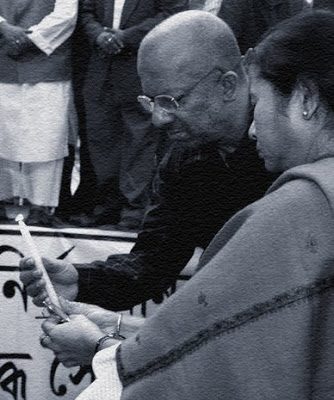
Kabir Suman and Mamata Banerjee.
The movement had its own brand of ‘Mamata aesthetics’ as she sat with an easel on the podium and applied her paintbrushes to canvas. Some people sang Rabindrasangeet and others sang songs of the revolutionary IPTA composer Salil Chowdhury. Meanwhile, hectic negotiations were under way inside Raj Bhavan. Upon Mamata’s request, Governor Gopalkrishna Gandhi, the mediator, was trying to find a face-saver for the Left Front government; a last-minute unravelling of the hopelessly tangled plot of Singur. But the intractable deadlock remained in place as firmly. Finally, the Tatas packed up and left. The Nano, supposed to have been a feather in the CPI-M government’s worn-out crown, lay in tatters.
‘The CPI-M transferred the entire blame for the situation to the Opposition. According to them, Mamata Banerjee had prevented West Bengal’s industrialization. To me, that explanation is not acceptable,’ says Abhirup Sarkar, an economist at Kolkata’s Indian Statistical Institute. Sarkar is close to Mamata and was at one point rumoured to be in the running for the post of finance minister in the Trinamool government. Though Sarkar did not accept her offer to contest the polls, he continues to be an advisor to Mamata. He points to data from the manufacturing sector to shore up his arguments: ‘West Bengal’s industrial decline had started from the 1980s. In this period, the state’s contribution to the all-India manufacturing sector was a little less than 13 per cent. In 2009, that figure stood at a little above 2 per cent. In the 1980s, only four states— Maharashtra and Gujarat (the industrially advanced), and Punjab and Haryana (the agriculturally prosperous)—were ahead of us. Now the entire south and Himachal Pradesh have overtaken us; soon Rajasthan will too. Industrial decline was an ongoing process. It did not suddenly dip because the Singur project could not take off.’
The initial activity around land acquisition in Singur didn’t breach the barrier totally. In fact, after a point, the noise died down. Then in 2007, Nandigram erupted when police opened fire on protestors there. The long saga of the pitched battle in Nandigram seemed to re-infuse energy across the rest of the state. By 2008, Singur was on the boil again, and in the long run it would be Singur that would tip the scales politically in the state.
So does he give no credence to the argument that Mamata forcefully stalled the Nano project? ‘When Mamata Banerjee began her opposition she had no political support. In 2006, she could not have stopped the Singur project forcefully, simply because she hardly had any political power then. In fact, things worked the other way: the Singur movement made Mamata Banerjee powerful,’ Sarkar suggests. Many have argued that the West Bengal government could have neutralized the resistance had it drawn up a better compensation deal. Perhaps––but even that would not have worked if the government had gone ahead and terrorized people, hoping to bully them into submission. Sarkar draws an interesting parallel between the experiences of peasants in Singur and Mexico City.
In 2002, a proposal was mooted to build a second airport outside Mexico City. Land belonging to peasants had to be acquired. There was resistance to the project. The compensation that was initially offered fell far below expectations, and to add salt to injury, the police beat up and arrested resistance leaders. Eventually, popular discontent forced the government to offer a huge compensation amount. But the peasants refused. ‘The lesson from here and Singur is that we are dealing with human beings, not robots,’ Sarkar says. He argues that the resistance in Singur met with a similar aggressive, violent response from the government. ‘At first they beat up people, raped women and then they offered more money. Why should [the people] take it?’
He describes the experience of working on a project in Singur as being straight out of a film. ‘I went to Singur with a couple of economists doing a project in the area. During our work—just like in Bengali films—two men came on a motorbike, followed by three chamchas and started heckling us.’ The men, from the CPI-M cadre, were suspicious of ’outsiders’ and obstructed their work. This intimidation of perceived outsiders is characteristic of the CPI-M’s politics, its constant distrust of those who are not its own. Sarkar’s comparison to scenes like this in popular Bengali cinema is quite apt. In many a popular film, the damsel in distress or the hero is attacked by hooligans who work for the villain—often a rich landowner or member of the bourgeoisie, and sometimes of an unnamed ‘party’!
The Singur saga played out over two years—from 2006 (when a confident Left Front government acquired the land) to 2008 (when the Tatas finally left). And when the Singur crisis seemed to have reached a point of stasis, Nandigram exploded, an explosion that revitalized the final stages of the Singur movement as well.
In 2002, a proposal was mooted to build a second airport outside Mexico City. Land belonging to peasants had to be acquired. There was resistance to the project. The compensation that was initially offered fell far below expectations, and to add salt to injury, the police beat up and arrested resistance leaders. Eventually, popular discontent forced the government to offer a huge compensation amount. But the peasants refused. ‘The lesson from here and Singur is that we are dealing with human beings, not robots,’ Sarkar says. He argues that the resistance in Singur met with a similar aggressive, violent response from the government. ‘At first they beat up people, raped women and then they offered more money. Why should [the people] take it?’
In 2006, Chief Minister Buddhadeb Bhattacharjee handed over 14,000 acres of land in Nandigram to Indonesia’s Salim Group of industries to set up a chemical hub. Like in Singur, the CPI-M looked the other way while resentment simmered and a Bhumi Uchchhed Pratirodh Committee (Committee against Eviction from Land) was set up. For almost a year, people were left to speculate in the dark, uncertain and apprehensive about the ramifications of the decision. The government operated with a total lack of transparency and made no attempt to initiate a democratic dialogue on the process of acquisition. Despite arm-twisting by Lakshman Seth, CPI-M’s powerful MP in the area, the peasants threw their weight behind the forces of resistance. They drove CPI-M workers out of Nandigram, until then a party stronghold. The violence that CPI-M workers unleashed against the protesters is by now well known. The best known of these incidents occurred on 14 March 2007, when the police—among them a section of CPI-M workers masquerading as policemen—brutally attacked peasants, unintentionally ‘creating’ a mass movement.
Singur and Nandigram shared many similarities, among them the diversity of the participants in these struggles. Mamata did not personally intervene in the initial stages of the agitations. Trinamool Congress MLA Shubhendhu Adhikari was at the forefront of the Nandigram movement alongside activists from many other organizations and parties. The presence of activists from various factions of Marxist-Leninist parties gave the CPI-M fodder for its ‘Mamata-Maoist nexus’ campaign, which reached its height in the wake of the Lalgarh crisis.
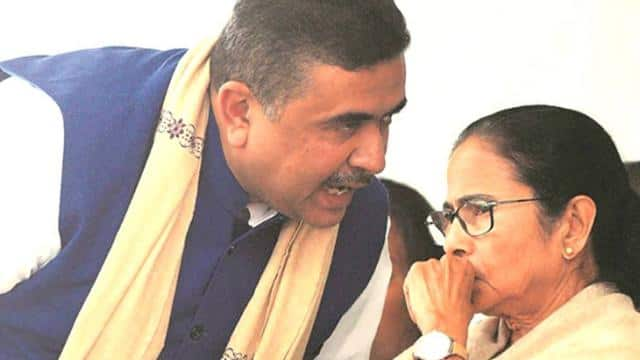
Suvendu Adhikari, once a close aide of Banerjee, is now a member of the BJP. Photo Credits: PTI.
Nandigram fortified Mamata Banerjee’s image. Her colleagues and fellow activists from those days recall 14 March 2007 with special clarity. At Mamata’s Kalighat residence, everybody was on their mobile phone. News of a savage attack by CPI-M cadres and policemen in Nandigram had thrown them into a tizzy. Mamata was talking to journalists. She had decided to go to Nandigram. On her way, she spoke to leaders of the Congress and the BJP, including L.K. Advani. But nobody seemed to have a clue about how to rein the CPI-M in. Kabir Suman, who was travelling in a car with Mamata then, writes:
I notice the Congress is not paying that much heed. Where is the prime minister? He must know what is happening here. Why can he not call up Buddhadeb Bhattacharjee and ask him to stop the rape and murder? Then, does everyone want such chaos to continue in West Bengal?
At Mecheda, the CPI-M stopped our convoy. Mamata’s car was right in front. Sitting right behind her, I could see what kind of lewd gestures the party cadres were making at Mamata… In that crowd there were boys, men—both young and old—and women too. I cannot believe that such terrible, ugly comments can be made targeting a woman. Mamata sat furious. After continuing like this for a long time, the cadres moved away.
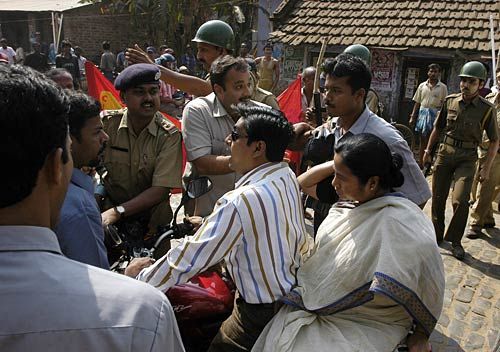
Mamata Banerjee riding pillion to visit violence affected people in Tamluk, Nandigram.
In the evening, Mamata reached Tamluk hospital, where the wounded had been brought. Some grievously injured, some dying. Mamata was by the side of a woman with a bullet in her lower stomach. As cameras zeroed in on the scene, Mamata pulled up the media. Subrata Mukherjee arrived at the hospital fighting attacks on his car by CPI-M workers. Mamata, despite repeated warnings of danger, was determined to go to Nandigram that very night. She was stalled finally by a barricade set up by a massive CPI-M contingent. It took a great deal of persuasion to get Mamata to turn back. The one quality that impressed and widened Mamata’s circle of friends, supporters and colleagues was her courage and fearlessness. Some of them say that her years of life-threatening combat with the CPI-M had left her virtually without fear of death. For Abhirup Sarkar, Mamata’s persona is a combination of three ‘sha-s’. ‘I would describe Mamata Banerjee’s personality as a sum total of Bengali shahas (courage), shatata (honesty) and sharalya (simplicity),’ he says.
Mamata did not personally intervene in the initial stages of the agitations. Trinamool Congress MLA Shubhendhu Adhikari was at the forefront of the Nandigram movement alongside activists from many other organizations and parties. The presence of activists from various factions of Marxist-Leninist parties gave the CPI-M fodder for its ‘Mamata-Maoist nexus’ campaign, which reached its height in the wake of the Lalgarh crisis.
Nandigram fortified Mamata Banerjee’s image. Her colleagues and fellow activists from those days recall 14 March 2007 with special clarity. At Mamata’s Kalighat residence, everybody was on their mobile phone. News of a savage attack by CPI-M cadres and policemen in Nandigram had thrown them into a tizzy. Mamata was talking to journalists. She had decided to go to Nandigram.
The Singur and Nandigram movements worked at many levels. Primarily, they sparked an ‘audacity of hope,’ says Sujato Bhadra, playing on Barack Obama’s famous phrase. ‘Mamata Banerjee has become a symbol of change,’ he told me. ‘Paribartan’, a word that had fallen out of Bengal’s political dictionary, was now on everybody’s lips. Amid the churnings, Mamata gained some unexpected allies, many of them from the Leftist political stream. Sections of the Marxist-Leninist factions in the state were one such group. Their intrinsic suspicion of Mamata broke down when they saw her grit and involvement in Singur, Nandigram and, later, Lalgarh. Mamata’s association with Marxist-Leninist parties, inconceivable even a few years ago, firmed up during 2006-09. Some, like Purnendu Bose and Dola Sen, who formally joined the Trinamool Congress, are now among her closest political aides. Others, like Pradip Banerjee, did not join Mamata’s party, but did actively campaign for her in the assembly elections. But the political Left wasn’t the only force that took a sudden interest in Mamata, as we shall see in the next chapter.
Mamata and the Maoists
Following the epic confrontations in Singur and Nandigram, a third rebellion gathered force in the tribal districts of rural Bengal, for long repressed by an uncaring establishment and an indifferent state.
In Lalgarh, in the West Medinipur district of West Bengal, the tribal people began agitating in the winter of 2008. It was an exemplary struggle—democratic and diverse—till the Maoists wrested control of the movement and the joint Central and state forces occupied the region known as Jangalmahal. In the initial stages, like in Singur and Nandigram, many different organizations and political parties gathered and functioned democratically under the Pulishi Santrash Birodhi Janasadharaner Committee (People’s Committee against Police Atrocities). Later, the Maoists hijacked the movement, stifling it before the resisting tribals could achieve some of their basic demands.

A mass meeting of the PCPA at Lalgarh. Photo Credits: Democratic Students Union, Facebook.
The genesis of the Lalgarh resistance was a bomb blast on 2 November 2008, targeting a high-profile Central and state delegation, including Chief Minister Buddhadeb Bhattacharjee. They narrowly escaped with their lives from the blast set up by Maoists in Shalboni. In spite of extensive reconnaissance before the delegation’s arrival, the police had failed to detect the long wire that set off the ambush. To make up for this major lapse, the police began a massive hunt for the culprits, with savage reprisals on the tribals. But inhabitants of this region had long been familiar with police brutality. And from about 2000, the Maoists too were gaining influence in the poverty-ridden areas of Jangalmahal, including the three most backward districts, Purulia, Medinipur and Bankura.
The success of the peasant movements in Singur and Nandigram inspired the restless tribals of Lalgarh to teach the uncaring government a lesson. Mamata Banerjee became part of the upsurge much later. In fact, she was allowed to join a rally of the People’s Committee against Police Atrocities (PCPA) on condition that she would not carry a Trinamool Congress banner.
In Andoloner Katha, Mamata recounts her memory of Lalgarh as she had seen it in 1992 when she was criss-crossing West Bengal, trying to revive the Congress through her interactions with people. She began her month-long journey from Belpahari in West Medinipur on 12 January, coinciding with Vivekananda’s birthday. ‘I got news of the desperate plight of the adivasis—nine out of twelve months a year, they cannot get rice. I decided to visit an adivasi village. Without informing anyone, I hitched a ride with a local boy on his scooter and reached Jeb, an adivasi village. With us, some friends in the media also reached the spot,’ she writes.
The success of the peasant movements in Singur and Nandigram inspired the restless tribals of Lalgarh to teach the uncaring government a lesson. Mamata Banerjee became part of the upsurge much later. In fact, she was allowed to join a rally of the People’s Committee against Police Atrocities (PCPA) on condition that she would not carry a Trinamool Congress banner.
In Andoloner Katha, Mamata recounts her memory of Lalgarh as she had seen it in 1992 when she was criss-crossing West Bengal, trying to revive the Congress through her interactions with people. She began her month-long journey from Belpahari in West Medinipur on 12 January, coinciding with Vivekananda’s birthday. ‘I got news of the desperate plight of the adivasis—nine out of twelve months a year, they cannot get rice. I decided to visit an adivasi village… ” In the village she met women who, she claims, cooked a broth of red ants with roots of trees for food.
In the village she met women who, she claims, cooked a broth of red ants with roots of trees for food. ‘I not only raised the plight of the adivasis at public meetings, but also brought it to the notice of the government so that justice could be done. Sections of the media also put out the news. But the suffering of the adivasis still continues,’ Mamata says in the book. Mahasweta Devi remembers Mamata as a co-fighter in her battle against the Left Front government on behalf of the de-notified tribes. ‘She helped me when I filed a case against the state government,’ the author-activist told me.
Mamata’s association with the Lalgarh movement sharpened the Left’s accusation that the Trinamool was colluding with the Maoists, an allegation that went back to the days of the Nandigram agitation. While in Lalgarh, the Maoists did have a dominant presence even before they took over the movement lock, stock and barrel, in Nandigram the Trinamool-Maoist nexus might have been just a flight of CPI-M fancy. Without going into the intricacies of a movement as complex and diverse as Lalgarh—at least when it first started—various sections branded the PCPA as a Maoist front and its leader Chhatradhar Mahato as a Maoist agent. Mamata’s meeting with Mahato was touted as incontrovertible proof of a Trinamool-Maoist nexus, as was Mahato’s membership of the Trinamool in his younger days. By the same logic, film actors, authors, poets and artistes who had gone to Lalgarh and spoken to Mahato were said to be helping the Maoist cause.
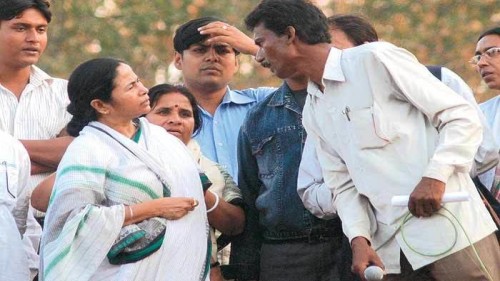
Mamata Banerjee with Chhatradhar Mahato (Right). Photo Credits: Alechtron.
In all that noise, no one bothered to question the clear disconnect between the politics of the Maoists and the Trinamool Congress. The media too seemed content to club all anti-Left agitators as Maoists of one sort or another. It is important here to make a distinction between the democratic politics of the various Marxist-Leninist parties, which played a crucial role in the Singur and Nandigram agitations, and the project of violent overthrow of the Indian state as espoused by the Maoists. Some people from the Marxist-Leninist parties who had worked closely with Mamata in Singur and Nandigram even switched loyalties to align firmly with the Trinamool.
‘One afternoon Mamata telephoned me. She seemed agitated. She told me, “I don’t know, Kabir-da, in this situation created by the CPI-M, how long we can practise democracy in this state. I will take one more chance, then I will take up arms,”’ Kabir Suman says in his book, adding: ‘Considering the situation from all aspects, my mental state was also similar. How can I take up arms at my age? Yet I felt, to hell with everything. What is the point of living like this?’
The CPI-M pounced on this section of Suman’s book, splashing it across its party organ, Ganashakti, and pointing to it as a confirmation of their theory of Trinamool-Maoist nexus. If you care to read till the end of the page, however, you find this: ‘I concede that, given the state of my mind, Mamata’s suggestion of taking up arms touched a chord in me. At that point, I did believe Mamata was my comrade, one of us. […] I do agree there was certain romanticism in that thought. But can you fight a battle without any romanticism?’
‘One afternoon Mamata telephoned me. She seemed agitated. She told me, “I don’t know, Kabir-da, in this situation created by the CPI-M, how long we can practise democracy in this state. I will take one more chance, then I will take up arms,’” Kabir Suman says in his book… The CPI-M pounced on this section of Suman’s book, splashing it across its party organ, Ganashakti, and pointing to it as a confirmation of their theory of Trinamool-Maoist nexus.
Battling the establishment, particularly through armed insurrection, has always carried with it a certain aura of romance, the dangerous bravura of staring death in the face. Che Guevara, now heavily marketed the world over by multinational companies, would undoubtedly be the face of this romantic, ruthless battle. The first armed uprising of the Naxals in India was indeed imbued with this spirit of adventure, romance, even innocence. Suman, who wears his empathy with the Maoists on his sleeve, was referring to this spirit of romance. All that Suman’s quote suggests is that taking up arms against the CPI-M’s armed militia was a fleeting, impulsive thought that crossed both Suman’s and Mamata’s mind in a situation that seemed to have become desperate, tinged with a sense of poetry rather than a desire for programmatic political violence.
Did Mamata plot with the Maoists to subvert the law and order situation in West Bengal in order to dislodge the already tottering Left Front government? Highly unlikely. Was there a convergence of the Maoists’ and Trinamool’s political objectives? To an extent, yes. All three movements—Singur, Nandigram and Lalgarh—were born outside the pale of formal party structures. Their diversity accommodated groups that may not have been in agreement about strategies of protest and resistance.
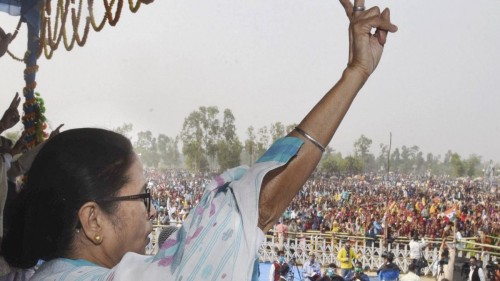
Mamata Banerjee at a rally in Nandigram, from where she contested the 2021 State Assembly elections, in January 2021. Photo Credits: PTI.
The discussion of West Bengal’s culture of competitive violence shared by armed workers belonging to both CPI-M and the Trinamool Congress camps should not be conflated to the thesis that the Trinamool Congress was working in perfect tandem with the Maoists to realize their political project. The questions that seem relevant are: Do the Trinamool workers on the ground, and across districts, keep their distance from the Maoists? Or do the Trinamool workers and Maoists exchange arms and fortify each other against the Left Front government?
Interestingly, Mamata too has accused the CPI-M of being in league with the Maoists, a somewhat fantastic charge. The dominance of violence in West Bengal’s political culture makes it possible that the Trinamool fought the comrades with arms. The escalation of violence in the aftermath of CPI-M’s crushing defeat in 2009 and the Trinamool Congress’s recent electoral victories are just a couple of the many corroborating evidences. In a culture where knives and bullets are wielded freely to claim political ground, to square up with political opposition in day-to-day life, the Trinamool need not enter into a pact with the Maoists. Arms are easily available and acquired here.
The discussion of West Bengal’s culture of competitive violence shared by armed workers belonging to both CPI-M and the Trinamool Congress camps should not be conflated to the thesis that the Trinamool Congress was working in perfect tandem with the Maoists to realize their political project. The questions that seem relevant are: Do the Trinamool workers on the ground, and across districts, keep their distance from the Maoists? Or do the Trinamool workers and Maoists exchange arms and fortify each other against the Left Front government? …
The dominance of violence in West Bengal’s political culture makes it possible that the Trinamool fought the comrades [the CPI-M] with arms. The escalation of violence in the aftermath of CPI-M’s crushing defeat in 2009 and the Trinamool Congress’s recent electoral victories are just a couple of the many corroborating evidences. In a culture where knives and bullets are wielded freely to claim political ground, to square up with political opposition in day-to-day life, the Trinamool need not enter into a pact with the Maoists. Arms are easily available and acquired here.
The CPI-M did not get much electoral mileage out of its Mamata-Maoist nexus campaign. But it did try hard. After every incident of violence in the state, after every public meeting the Trinamool chief attended, after every speech she delivered, the accusations would resurface. On 9 August 2010, addressing a public meeting in the heart of Lalgarh, Mamata said the manner in which Azad, a top Maoist leader, had been killed was ‘not right’. She demanded that the government investigate the incident. All hell broke loose when the media picked up this speech and the CPI-M pointed to the statement as further vindication of its theories. Interestingly, four
months later, in January 2011, the Supreme Court asked the Central government and the state administration in Andhra Pradesh to explain how exactly Azad had died in the Adilabad forests of Andhra Pradesh, making it clear that the case was far from a simple ‘anti-terrorist’ action by the administration.
As West Bengal’s assembly elections approached, the CPI-M accelerated the thrust of this campaign. Chief Minister Buddhadeb Bhattacharjee responded to Home Minister P. Chidambaram’s request for disbanding the CPI-M’s armed militias (Harmad Vahini) with his own list of camps testifying to the ‘Trinamool-Maoist alliance’. In October 2010, sabotage by suspected Maoists led to the horrifying Gyaneshwari Express accident, claiming 150 lives. In her first reaction to the incident, Mamata pointed a finger at the CPI-M, insinuating that the ruling party could have plotted the sabotage to defame her. The CPI-M retaliated, coming down like a ton of bricks on the ‘absentee’ railway minister, accusing her of ’hobnobbing’ with the Maoists. Umakanta Mahato, a prime Maoist suspect in the Gyaneshwari sabotage, was later killed by the security forces in a gun battle.
As usual, the truth probably lies somewhere in between. It is highly unlikely that Mamata Banerjee would have jeopardized her political prospects by endorsing the brand of politics practised by the Maoists. Electoral democracy is not the way that the Maoists engage with the political class. Even if Mamata, as Opposition leader, had hoped to befriend them in pursuit of the classic ‘my enemy’s enemy is my friend’ approach, the political cost of swinging deals with the Maoists would have been far too dear. She had waited a long time to reach where she is now.
As usual, the truth probably lies somewhere in between. It is highly unlikely that Mamata Banerjee would have jeopardized her political prospects by endorsing the brand of politics practised by the Maoists. Electoral democracy is not the way that the Maoists engage with the political class.
Acquiring arms however has become as common to West Bengal’s political culture as abarodh or blockades on streets, highways and railway tracks on every issue of importance. But how convincing is the CPI-M’s continued attribution of all the ills that have befallen it to the handiwork of Mamata and the Maoists? Not very, for the people did not bite the bait. Mamata won the corporation elections hands down after the horrifying Gyaneshwari Express derailment—the continuation of a political trend that began in the 2008 panchayat elections and culminated in the 2011 assembly elections. The Lalgarh movement ought not to be remembered as a symbol of a Mamata-Maoist alliance, but for what it actually represented: yet another section of Bengali society, long forgotten by the government, rising in protest against the order of things, demanding basic needs that it had long been deprived of.
This excerpt has been carried courtesy the permission of Monobina Gupta. You can buy Didi: A Political Biography here.
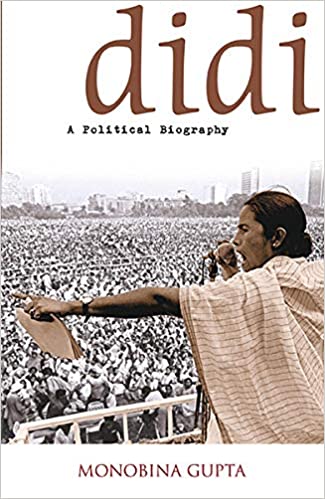
ARCHIVE
The Romance of Power
I
The city was still—the trams, the trees whose leaves were covered with a film of dust, the junctions, Lower Circular and Lansdowne road, the three-storeyed houses on Southern Avenue, the ten-storeyed buildings on Ballygunge Circular Road. Soon the machinery would start working again, not out of any sense of purpose, but like a watch that has been wound daily by someone’s hand. Almost without any choice in the matter, people would embark upon the minute frustrations and satisfactions of their lives. It was at this moment of postponement that the azaan was heard, neither announcing the day nor keeping it a secret.
Amit Chaudhuri, Freedom Song
In Holy Bondage
1977 was an unusual year in Indian politics—not just for the country as a whole but also for West Bengal. The extraordinariness of that ‘magical year’ manifested itself in the ascendancy of a new set of rulers in Delhi and Calcutta, in the beginnings of a political culture that has lived ever since. The political convulsions hit India’s oldest party hard, and one of its most charismatic leader, Indira Gandhi, bit the dust. The Congress prime minister and architect of the infamous Emergency lost the general elections to a coalition of diverse political parties, ranging from Right to Left. The winners laid down a plinth, though somewhat fragile, for multi-party coalition rule, bringing the curtain down on three decades of Congress monopoly over governance at the Centre.
Within a span of three months, Indian political parties put together new power structures that resembled nothing we had seen in the past. In March that year a Janata government headed by Morarji Desai, supported by the CPI-M from outside, took charge of the Central government. Three months down the line the hammer-and-sickle-emblazoned flag of the Communist Party of India (Marxist) was flying high from the seat of power in West Bengal. Trouncing the Congress and its infamous Chief Minister Siddhartha Shankar Ray, a CPI-M-led Left Front government — the state’s new ruling ‘elite’ – embarked on an uninterrupted journey of thirty-three long years, a journey that still continues. The Left Front won 230 seats and a 54 per cent vote share in the 294-member Assembly. The CPI-M on its own ratcheted up a clear majority; what a fall it was for the high and mighty Congress, suddenly finding itself stripped down to 20 seats with a mere 23 per cent vote share.
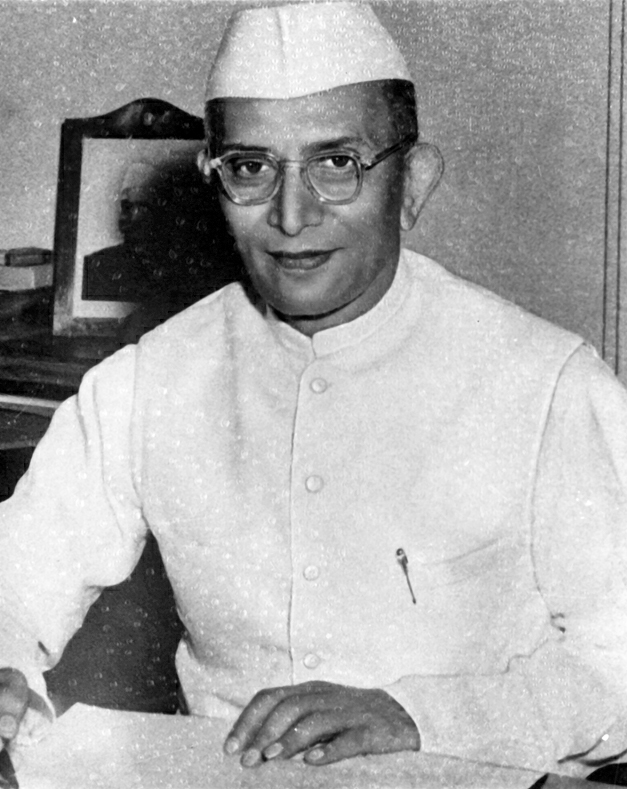
Morarji Desai, who replaced Indira Gandhi as Prime Minister in 1977.
Who would have imagined such a stunning change of political equations? Who would have believed the ‘party of struggle’ would be in the seat of governance for the next three decades; that it would walk a tightrope, balancing contradictions arising out of its past history and present obligations? In the years and decades to come, compulsions of governance would increasingly collide with the politics of militant struggle, in the process making the ‘revolutionary’ party an expert at doublespeak. The compulsions of governance landed the CPI-M in a predicament it would hardly have anticipated. With each passing year in Writers’ Building, the CPI-M found it more and more complex to balance the obligations of governance with its core politics of struggle. The doublespeak became inevitable as the party grappled with contradictory pulls and tried to address the conflicting needs by adopting multi-layered strategies.
But that is a story that would unfold later.
Back in June 1977 it was a moment of relief and euphoria for the victorious Marxists. Not only were their days of being on the run over, it was an hour of ‘sweet revenge,’ when the party could call the shots from West Bengal’s citadel of power. In that moment of glorious victory the CPI-M spoke a language of assurance and promise that eventually disappeared. Chief Minister Jyoti Basu promised to run his government not from Writers’ Building, the imposing red brick building built by British designer Thomas Lyon in 1780, but from run-down villages and dusty small towns scattered through West Bengal.
Back in June 1977 it was a moment of relief and euphoria for the victorious Marxists. Not only were their days of being on the run over, it was an hour of ‘sweet revenge,’ when the party could call the shots from West Bengal’s citadel of power. In that moment of glorious victory the CPI-M spoke a language of assurance and promise that eventually disappeared.
In the flush of victory Jatin Chakraborty, the Left Front government’s public works minister, painted bright scarlet the dome of Calcutta’s iconic Shaheed Minar, rising regally from the grounds of the Maidan. To me and in the perception of the public, the sudden burst of aesthetic defiance was like swishing a red cloth in front of the Congress! The sight of the red dome glinting in Calcutta’s scorching sun did not go down well with the Bengalis. Hissing under their breath each time the gleaming red turret came into their line of vision, they cursed Chakraborty, responsible for sullying one of Calcutta’s prized monuments and creating an eyesore. An incessant lament over the disfigurement and the ‘unaesthetic, propagandist’ souls of the ruling communists!
As the fresh coat of paint began to dry under a merciless Calcutta sun, the Left Front got down to its mammoth and daunting job of governance. The first ten years felt like walking on a bed of hot coals, a legacy left by the Congress.

Writers’ Building, Kolkata. Photo Credit: Matt Stabile, Flickr.
In the collective memory of West Bengal, 1977 was a special year. During the previous five years people had watched in disbelief the frenzy of political violence—the bloody clashes masterminded by the Siddhartha Shankar Ray government. Tens of thousands of CPI-M cadres had lived in the depths of shadows, chased and hounded by the ruling Congress. The relentless terror had groomed the CPI-M well to withstand the assault of the Emergency. When Indira Gandhi trained her guns on her opponents, the Marxists tested by fire, trained in the teeth of violence, were more than equipped to counter the excesses of the Emergency. ‘The intensity of state repression unleashed in the city [Calcutta] between 1970 and 1973 was of such magnitude that, unlike many other parts of India, Calcutta saw little in the year and a half of the Emergency to add to what it already knew about the ways of an authoritarian regime,’ writes political scientist Partha Chatterjee. In West Bengal more than 18,000 people had been rounded up under the Maintenance of Internal Security Act (MISA). Perhaps few other Indian states were then so torn by political violence. When the Left Front won the people’s mandate it inherited a state in tatters, where everything apart from violence seemed to have come to a standstill. Once considered among the best educational institutions in the country, Calcutta University was haemorrhaging. Examination schedules were running late by more than a couple of years. Results were delayed long enough to prevent students from applying to universities outside West Bengal. At Calcutta University’s Department of Ancient History and Archaeology, where I did my post-graduation between 1978 and 1979, students of Law College, next to our department, often spoke of the rough times. ‘This was where a bomb exploded that morning. I had just come in. Chhatra Parishad (Congress’s student wing) activists were on the other side. They hurled a bomb. It was all smoke. Students ran for cover,’ said Parthada, a student of Law College. (Since he was a couple of years older than me I had succumbed to the Bengali tradition of adding a ‘da’ after his name)
Parthada spoke of many similar mornings when lecturers and students fled classes as activists of the Chhatra Parishad and SFI hurled bombs at each other, across the street. In 1978 I found it difficult to imagine the delirium of violence described by him. The street outside my department hummed with normalcy – with its steady stream of traffic, buses and cars honking madly, the rush of chattering students. I often thought Parthada, despite his cut-and-dried, pragmatic Marxism, secretly nurtured the imagination of a storyteller.
In West Bengal more than 18,000 people had been rounded up under the Maintenance of Internal Security Act (MISA). Perhaps few other Indian states were then so torn by political violence. When the Left Front won the people’s mandate it inherited a state in tatters, where everything apart from violence seemed to have come to a standstill.
But repairing the badly damaged system took time. My MA examination in archaeology, scheduled in 1980, was held two years later. The chief minister said the government was doing its best to bring the examination schedule back on track. The backlog was stunningly high. The results almost never came on time. It was not just the education system that was mangled—essential services like electricity supply were in a complete mess. I remember studying by the light of lanterns through much of my school and college days. The Calcutta State Electricity Board, crippled by a chronic shortage of power supply, plunged the city into darkness after the sun went down. Through the day you sweated and grumbled. Generators were yet to become part of household furniture. Summers, always agonising in Calcutta with its heat and humidity, became excruciating with long stretches of power cuts. Fans would suddenly taper off to a halt as we wrestled with Brahmi and Kharoshthi scripts in epigraphy and inscription classes. Calcuttans had to submit themselves to a gruelling regime of rationed power. Each area had its daily chart of power cuts, which turned your fans and lights off at least twice, for a minimum of a couple of hours. Often unscheduled power cuts would drag on for five to six hours, if supply from the Damodar Valley Corporation’s mega thermal power plant dried up. Sometimes for half the night you would battle droning mosquitoes, fanning yourself with newspapers. The sale of hathpakhas (hand fans) made of bamboo prospered. I remember days when I would leave home hot and sticky, have a few hours respite at the department till load-shedding struck and then return home to darkness. It seemed Calcuttans were mandated to spend their evenings in the flickering shadow of candlelight. In buses and local trains people cursed the government and the power supply, spinning yarns and jokes around the ubiquitous phenomenon of load-shedding which dictated their lives.
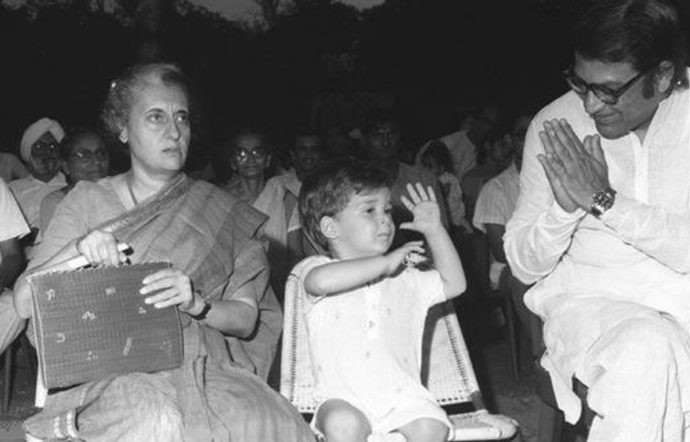
Siddhartha Shankar Ray (Right), CM of West Bengal from 1972 – 1977, pictured with Indira Gandhi. Photo Credit: Twitter.
Calcuttans did not just have to plough through the darkness; the mayhem on the city’s roads made travel an agonising ordeal. The city was being turned upside down to build India’s first and Asia’s fifth underground metro railway; its faltering, chaotic construction went on for years. People dreaded hitting the roads, which looked like they had been bombed. Traffic was a crazy maze in which buses and cars would stay knotted for hours on end, without moving an inch. Work went on endlessly inside trenches dug at crucial traffic junctures, where the tangle of vehicles was especially thick. Through the pile of mud and rubble people would make their way. Suddenly the rains would come, flooding the trenches, leaving the ground slushy. Metro traffic cops, the kind we see around Delhi’s Metro construction sites, standing to attention and waving road diversion signs, did not exist. There were no signboards indicating what lay ahead on the jagged stretch of road. Anyway Calcutta never had the luxury of road space like Delhi to flag off endless diversionary routes. So traffic mayhem raged unchecked.
In Freedom Song author Amit Chaudhuri describes a deadly traffic jam, which was fast becoming to Calcutta what local trains were to Mumbai and DTC (Delhi Transport Corporation) buses to Delhi.
But repairing the badly damaged system took time… The backlog was stunningly high. The results almost never came on time. It was not just the education system that was mangled—essential services like electricity supply were in a complete mess.
`It took them forty-five minutes to negotiate Circular Road, Chowringhee, the junction before Bentinck Street and finally to pass Mahajati Sadan and to arrive at the small lane on the left. By then, they felt they’d come to what was probably another city. Just on the right what looked like a deep ditch had been dug in Central Avenue, where actually unfinished work for the underground had been begun and then interrupted. Although the ditch almost looked fearful, there were in fact two children playing and rushing upon it, climbing from one side to the other and then disappearing again’. This ‘jam’ as it was called in popular parlance, became the emblem of Calcutta long before any of the other metropolises had even heard of it.
The genesis of Calcutta Metro went back to 1949 when West Bengal’s first Chief Minister Bidhan Chandra Ray planned it. Two decades later in 1972, Prime Minister Indira Gandhi laid the foundation stone. It took almost another two years for the work to start. Dogged by lack of funds, court injunctions, shifting of underground facilities, the work continued with long pauses in between. After the Left Front government came to power the people waited another seven years for the Metro to start even a partial service. And meanwhile the Calcutta Metropolitan Development Authority, which really had nothing to do with the digging, became in popular rendering khurchhi maati dekhbi aaye (come, watch us digging earth).
*
Jyoti Basu had inherited a badly messed up state from his Congress predecessor, which had to be cleaned up fast. Expectations were running high. Communists, yet to metamorphose into ‘power junkies’, had a clean and pro-poor image, unlike their predecessors, known to be a refuge for the rich and influential.
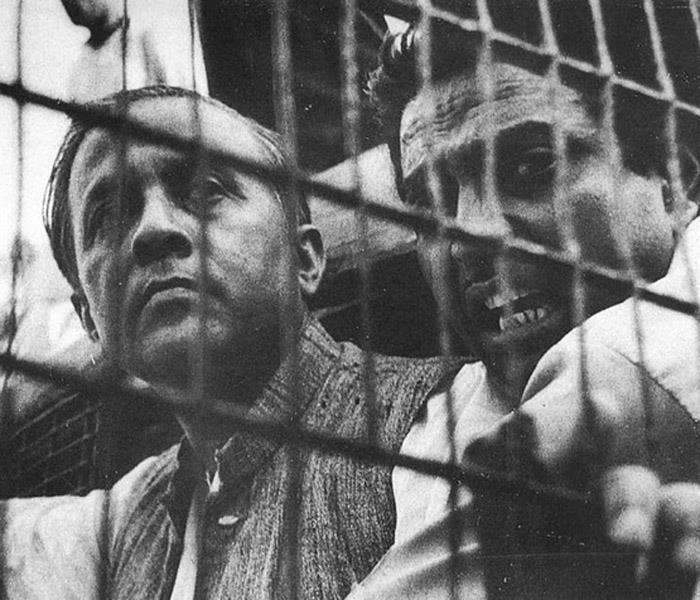
Jyoti Basu (Left) during his days of activism. Photo Credit: Communist Party of India (Marxist), Facebook.
The educational system had to be overhauled on a priority basis. Bit by bit university examinations reclaimed their schedules on the academic calendar. Students received degrees in time for them to appear in competitive examinations outside the state. The power situation started improving. Summers became bearable as fans and lights stopped playing whimsical pranks. Street lights came on and stayed that way. Lanterns were tucked away; candles were brought out only on special occasions. Calcutta moved from ‘darkness to light’ and the term ‘load shedding’ gradually lost its currency in conversations. It took the Left Front government time but it finally managed to retrieve the power sector from the depths of darkness; effectively enough to provide West Bengal with a surfeit of electricity. However, an apprehension that load shedding could return with a vengeance once factories started functioning, lurked somewhere at the back of the mind.
The raw political violence that lashed Calcutta for more than a decade ebbed. The macho aggression displayed by the Congress in the early 70s disappeared with the Assembly election results. Parts of Calcutta that had been swathed in smoke from explosions of crude bombs, ‘off-limits’ for youngsters, reclaimed their normal rhythm. But the spirit of violence, like the spirit of resilience, has a way of surviving. The oxygen of violence on which the politics of that decade survived and flourished never ran out of reserves; not even after the Left Front government brought enduring stability to the state. Violence was merely tamed and brought under control. West Bengal till today has the highest incidence of political violence.
But the spirit of violence, like the spirit of resilience, has a way of surviving. The oxygen of violence on which the politics of that decade survived and flourished never ran out of reserves; not even after the Left Front government brought enduring stability to the state. Violence was merely tamed and brought under control.
How do I describe this city of dreams, madness and desire?
On the body of each city are etched the marks of identification by which it wants to be recognised and known. Suketu Mehta writes in his book Maximum City: Bombay Lost and Found, ‘The history of each city is marked by a catalytic event just like each life has a central event around which it is organised. For New York it is now September 11, 2001, attacks on the World Trade Center. For the Bombay of my time it is the riots and the blasts of 1993. Bombay was spared the horrors of Partition in 1947’. He then adds, ‘But there was an earlier trauma in the psychic life of the city, which marked the before and after for old-timers: the explosion of the Fort Stikine on 14 April 1944…. Fort Stikine, a ship carrying bales of cotton, a secret cargo of gold and silver and wartime explosives caught fire and went up in smoke as it stood in the harbour waiting to be docked. The sky over Bombay was filled with gold and silver, masonry, bricks, steel girders and human limbs and torsos flying through the air as far as Crawford Market,’ writes Mehta.
When I try to think of the catalytic events that made Calcutta what it is today, simply too many of them jostle for attention: the stormy agitation against the one paise hike in tram fare in the heart of Calcutta, killings of CPI-M activists by the Siddhartha Shankar Ray government, the slaughter of Marxist-Leninist cadres by the men of the CPI-M and the Congress, the birth of the Left Front government, the announcement of Operation Barga and then the hail of bullets putting to death resisting peasants at Nandigram…
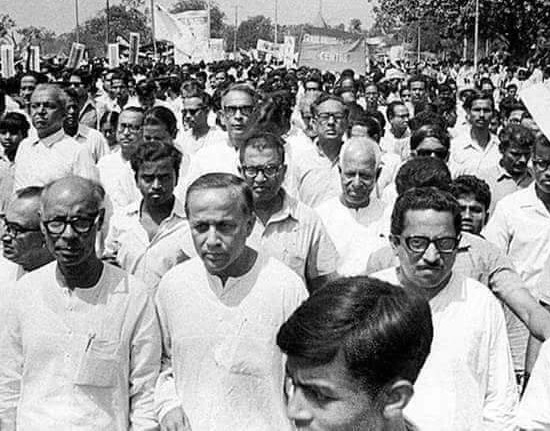
Jyoti Basu at the head of a march along with other leaders of the Left Front government. Photo Credit: Surjya Kanta Mishra, Twitter.
The Left Front’s raison d’etre, which actualised itself with Operation Barga, was lost forever at the barricades of Nandigram. The two developments were woven by a special bond – a history of land reforms, initiated in 1977. Later in the book, I will talk about how the reforms were derailed a decade later, how the ruling CPI-M lost the will to carry them to their logical conclusion. For the moment let me return to 1977 and the landmark Operation Barga. Few people, even dyed-in-the-wool supporters of the Left, would have believed the Marxists would preside over the state for more than three decades. Given its past experience of President’s Rule and sudden dismissals of state governments by the Congress at the Centre, the Left Front was looking at a short run on the pitch. Its aim was simple: initiate landmark policies carving out a political and electoral niche as a buffer against storms in the future; an investment necessary to reap dividends later.
Not the first instance of land reforms in the state, the Left’s ascendancy definitely unleashed for the first time a sincere effort to implement them.
The Left Front’s raison d’etre, which actualised itself with Operation Barga, was lost forever at the barricades of Nandigram. The two developments were woven by a special bond – a history of land reforms, initiated in 1977.
Between 1972 and 1977 the Congress regime of Siddhartha Shankar Ray had listlessly dabbled in land reforms without any serious inclination to implement them. The Land Reform Act was amended as far back as 1955. The Congress government had even passed legislation to introduce a three-tier panchayat system. The decisions, which would have significantly changed the power structure in rural Bengal, remained on paper till the Left Front government won the elections. The Front had gone to the Assembly polls with a 36-point programme which included promises of land reforms, reorganisation of Panchayati Raj, improvement in agriculture, new roads, better irrigation system, safer drinking water, improvement in health and education systems. When the CPI-M came to power in 1977, it did not anticipate the destiny that would unfold over the next three decades; never did it perceive itself as running a State government year after year. The leadership readied itself for a short stint in power—at best a five-year term, at worst a sudden guillotine by the Centre. Undoubtedly the party was under pressure to bring about, in what it perceived as borrowed time, a qualitative change in the balance of power, fulfil its ideological commitment as well as build a solid reservoir of political and electoral support. The CPI-M gave land reforms top priority, combining its ideological belief with the need for a mass social base. It must be remembered that even during the earlier United Front governments in the late 1960s, the CPI-M had made agrarian reforms its main plank. The food movement, the engine of change, created a groundswell of support for the party, enhancing its credibility and image as an ally of the poor. Under the leadership of Land Reform Minister Harekrishna Konar, the party had seized large tracts of benami land, tilting the power balance in favour of the poor in the countryside. But once the United Front governments collapsed, retaining these gains became difficult. After coming to power this time round, the Left Front wanted to ensure that the changes would endure: Operation Barga was a milestone in this direction, a wise strategic political investment, which, as time passed, became the fulcrum of the Left Front’s continued existence at the helm of power.
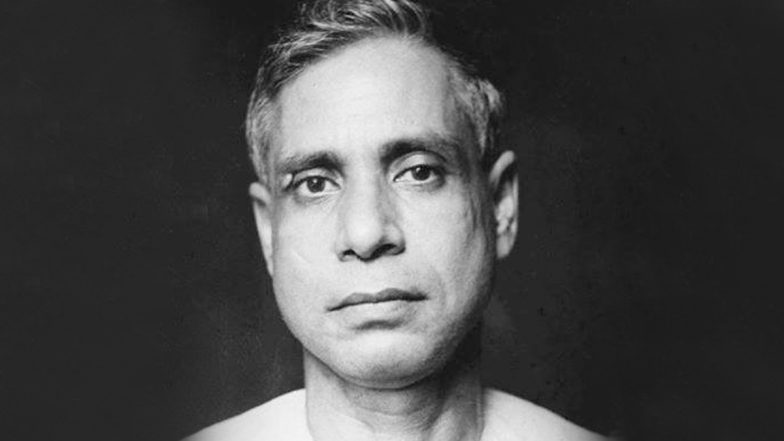
Ajoy Mukherjee, leader of the Bangla Congress and Chief Minister of Bengal in the United Front government.
Operation Barga set in motion this process of building the indispensable political tools the party used to electorally preserve itself so well. An expansive, well-knit network, politicised to the hilt stood at the beck and call of Alimuddin Street, ready to execute every command. The sharecroppers registered under the programme were provided with protection from eviction and given their due share of crop under the Land Reform Act. The Left Front government mobilised the bureaucracy and the party cadres on a war footing to put the programme in place. Side by side the CPI-M organised elections to the country’s first three-tier panchayat structure. ‘Prior to 1977, only some 275,000 sharecroppers had bucked the rural power structure and registered. By December 1985 as many as 1.3 million of the estimated 2 million West Bengal sharecroppers-96 per cent of all `tenants’—were recorded,’ writes T J. Nossiter of Operation Barga. Later I will talk at length about the CPI-M’s manipulation of the institution of panchayati raj and its subsequent abandonment of land reforms.
The leadership readied itself for a short stint in power—at best a five-year term, at worst a sudden guillotine by the Centre. Undoubtedly the party was under pressure to bring about, in what it perceived as borrowed time, a qualitative change in the balance of power, fulfil its ideological commitment as well as build a solid reservoir of political and electoral support. The CPI-M gave land reforms top priority, combining its ideological belief with the need for a mass social base.
Before June 1977 the world of constitutionality and governance was far removed from the CPI-M’s concerns. If anything, the party was engaged in direct conflict with that world. Inside the secretariat it was time to shift to Plan B. Disengaging itself bit by bit from the path of struggles the new ruling elite, in the beginning, leveraged the state machinery to provide relief to the people but gradually that gave way to something else: being in power became the means to endlessly reproduce itself. Cynical manipulation of power saw an end to the romantic age of innocence as the CPI-M lost that distinctive edge which had once set it apart from the rest of the political class. Plan B was not something that the CPI-M had in mind when it came to power. It was crafted bit by bit over the years as the CPI-M struggled with its internal contradictions—moving away from its ideological axis. Once it became clear that the party would have to rule and produce results and not just for a brief period, the strategies diversified, some conflicting with the CPI-M’s essential political philosophy. Matters started becoming complicated. In fact in 1984-85 after the party suffered serious electoral losses, following the assassination of Prime Minister Indira Gandhi, there seemed to have been some sort of disquiet within the party. Paragraph 112 of the party constitution allowed the CPI-M to run state governments, but with the rider that in this process, it should impact and change the state machinery, as well as mobilise the people. The paragraph was added to the new constitution of the CPI-M in 1964 when, in the light of the 1957 experience of the Namboodiripad government, the party debated whether it should form a government in case the possibility arose. In a sense, it was the CPI-M’s Plan B.
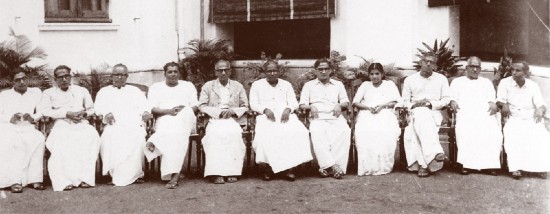
Kerala’s Council of Ministers, 1957, led by EMS Namboodiripad. One of the first democratically elected state governments of the world, it was dismissed in 1959 by the Central Government.
In the 1980s M. Basavapunnaiah, in an article in Desh Hitaishi raised certain questions about the spirit of Para 112 and whether the ruling CPI-M in West Bengal was being true to it. The questions he posed were: How much has the CPI-M been able to do in West Bengal? Has the party been able to provide relief, rally the people and scale up their political consciousness? Without being overly critical, the tone of the article suggested that all was not well. A discussion followed in the party but it was muted. The fall of the socialist bloc subsequently lent weight to the debate on whether socialism can flourish in a multi-party democracy, a debate that found a lively platform in the 1992 party congress in Chennai.
As Operation Barga got off the ground, its impact could be seen in the outcome of the 1978 panchayat elections. The Left Front won 69 per cent of seats and polled 54 per cent of votes. The dominance of landlords, rich peasants and moneylenders, which had been the bedrock of Congress support, broke. ‘For the first time in West Bengal, democratic devolution of powers took place. The new leaders of the panchayats were not moneylenders or rich peasants. They were marginal farmers, primary or secondary teachers, unemployed young men, or landless agricultural labourers’, writes Sudhir Ray. ‘During the panchayat elections of 1993 and 1998, it was found that Marxist parties could retain their support base in the rural areas. The reason for these successive victories is to be found in the changed co-relation of classes. The landlords, rich peasants and moneylenders no longer dominate in the rural areas,’ he continues. The panchayats included a large number of the rural poor, marginal peasants, teachers, women and Dalits.
Disengaging itself bit by bit from the path of struggles the new ruling elite, in the beginning, leveraged the state machinery to provide relief to the people but gradually that gave way to something else: being in power became the means to endlessly reproduce itself.
Even as rural Bengal was coming to life, West Bengal’s straggling, moribund industries were still gasping for breath, Outlining the historic backdrop stunting the state’s industrial growth T J. Nossiter writes, ‘At partition in 1947 West Bengal was deprived of its hinterland; its key industries, in key instances have been overtaken by technological innovation; communications are poor, and from the point of view of available investors, private, public, international, other areas of India have seemed more attractive, in some measure because of the uncertainty of the political situation at least prior to 1977 and because of industrial agitation.’
Political unrest and violence that crippled the state in the 60s and 70s deepened the severity of industrial depression. Small scale industries located on Calcutta’s outskirts, the hotbed of clashes between Naxals and men of the CPI-M and the Congress, disappeared one after another. Militant trade union activities led by the CPI-M’s trade union wing, Centre of Indian Trade Unions (CITU), which continued even after 1977, did not help matters. Employers retaliated with lockouts. Shutters were downed, gates padlocked. Lockouts happened in the blink of an eye. The industrial belt along the Hoogly river became a haunted expanse of dilapidated buildings, their padlocked gates corroded by rust and moss. The responsibility for the corrosive decay lay in multiple quarters: at the door of the party and the government—for pretending to look the other way even as industries were vanishing overnight; with managements for their flightiness and financial corruption; with the CITU — for sticking to old strategies. Ostrich-like, the trade union had a habit of walling itself in, every time workplaces reinvented themselves, keeping pace with technological changes, launching modernisation drives. Failing to anticipate the rush of technological innovations, CITU in the 1980s slammed the door on computers and modernisation of factories, chanting instead the tired old slogans.
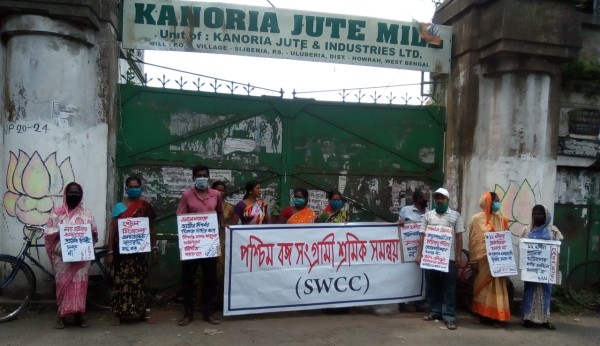
Workers protesting outside Kanoria Jute Mills in 2020. Photo Credit: Workers’ Unity Bengali, Facebook.
There was no single cause behind the stagnation. Post 1977 the workers were virtually left to fend for themselves as the CPI-M and the CITU tried to fulfil the economic mandate thrust on them by liberalisation. But the working class in Bengal, with its tradition of militant activism in the late 60s and 70s, had come to regard the notion of work not simply as a source of income and material incentive, but also of rights and entitlements. ‘It was a potent political construct for all workers,’ writes Nandini Gooptu. The Left Front could not turn its back on the electoral support of workers but the transformation of the CPI-M from a party of struggles to the ruling elite hit them hard as the CITU, cutting corners, tried moulding itself to suit the government’s new economic plans. Labour militancy had to be contained and eventually snuffed out. Functioning within the neo-liberal system the Left Front government started distancing itself from the concerns of the working class, thrown into a state of anxiety, as liberalisation sounded the death knell for traditional industries like textile and jute. Unwilling to support labour agitations, the government and the CITU hastened to clinch deals with employers. Pushed to the wayside by the party and the trade union, workers struck out on their own. Through the 1990s, labour unrest assumed different forms. Violence broke out at Victoria Jute Mills in 1992 as workers turned on trade union leaders, attacking the union office and policemen. One person lost his life. In Howrah’s Kanoria Jute Mills the workers adopted a different path, declaring autonomy from the party and the trade union. They instituted the Sangrami Shramik Union, an independent non-party trade union in February 1993, sending a clear message of their loss of trust in the CPI-M and the CITU. Rather than in vain for a successful negotiation with the management, the union occupied the closed mill and resumed production. The unusual and spontaneous workers’ movement taking off without trade union banners created a ripple, even though the experiment did not translate into enduring results. Many middle-class members, including artistes, allied with Kanoria workers who hoped to turn the mill into a workers’ cooperative. Despite public support to the notion of workers’ participation in the management, the CPI-M-led government offered the union no help, sealing the fate of a Kanoria workers’ cooperative. The mill was turned over to the management. Though short-lived and unsuccessful, the Kanoria Jute Mills experiment pointed to a new direction in the labour movement, not adopting the most practiced form of resistance like striking work.
The Left Front could not turn its back on the electoral support of workers but the transformation of the CPI-M from a party of struggles to the ruling elite hit them hard as the CITU, cutting corners, tried moulding itself to suit the government’s new economic plans. Labour militancy had to be contained and eventually snuffed out.
The transformation of the CPI-M from a livewire, organic party to a vote-spinning machine became more and more evident from the 1980s, when the party and the government became virtually one. Without a demanding opposition breathing down its neck, it was easy to get away with poor governance; easy to win a two-thirds mandate in election after election. The democratic cycle of elections, the principle of rewards and punishments came to a halt.
Writers’ Building on Kolkata’s bustling B. B. D. Bagh stood as indelible proof to the sloth that had crept in and settled on the government. Nothing in the secretariat—the Left Front’s nerve centre—seemed to have changed in the last three decades. As if the grand old building had settled into an inexorable time warp. In thirty-three years of Left Front rule, Jyoti Basu alone ruled for 23 years (1977-2000). The babus of Writers’ Building have been taking orders from the same cabinet and implementing them desultorily, unlike their predecessors during colonial rule who worked long and hard. The first inhabitants of Writers’ Building, which started functioning as early as 1690, worked under tough conditions. Employed by the East India Company, the clerks lived in mud hovels at the present site of the brick-red structure. In 1965 a storm destroyed the huts. A second Writers’ Building was built followed by a new structure—from where the state secretariat now functions.
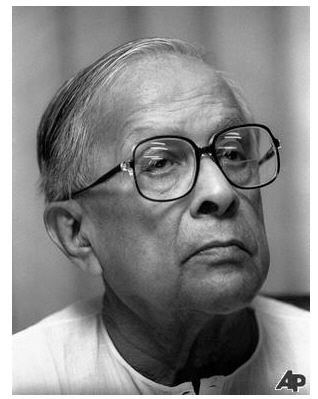
Jyoti Basu was West Bengal’s CM for 23 years (1977 – 2000).
The ‘modern’ Writers’ Building inhabitant is the quintessential babu, who rarely keeps office hours but seldom forgets to take his chhata (umbrella) and jhola (cotton bag) to work. He goes through the motions of a daily routine: gets off a jam-packed local train at Howrah station, boards an equally packed, rickety state bus, steps down at Dalhousie Square, ambles into the secretariat after the clock has ticked well past the hour of reporting for work.
The area around the secretariat has the lazy somnolence of a holiday. Stalls cluttering the footpath outside the building sell a variety of food, from toast to fish curry, rice, pakoras and phuluris. Famous for its street food, Calcutta is a hedonist’s paradise and a nutritionist’s nightmare. For the babus the food mart outside the secretariat is a place to ‘pass time’ when the files get too boring. Every once in a while they stroll out for a bite. Rows of honey jars stand at one corner and the air hangs heavy with the aroma of frying and cooking. Not surprisingly Jyoti Basu found the ‘eating disorder’ annoying and detrimental to the efficiency of his government. Hemming and hawing for a long time, the exasperated chief minister finally slapped a curfew on food vendors, restraining them from camping out on the footpath and tempting the Writers’ Building staff through the day. You can find them engaged in brisk business only between one and two-thirty now.
The transformation of the CPI-M from a livewire, organic party to a vote-spinning machine became more and more evident from the 1980s, when the party and the government became virtually one. Without a demanding opposition breathing down its neck, it was easy to get away with poor governance; easy to win a two-thirds mandate in election after election.
Like he would pull up the CITU, Basu, from time to time lectured Writers’ Building employees—also unwavering supporters of his party—on reporting to work on time, resisting the temptation of leaving the building before the sun went down. But counsel and caution came late when the employee was secure in the CITU’s protection. As liberalisation settled in and the economic environment became competitive, the Marxists felt the nudge to shed sloth and instil an efficient work culture. They had been ‘efficient’ in capturing political, educational and cultural institutions; taking them over systematically, appointing in key positions persons loyal to them, regardless of qualification or merit. From the very beginning, people inhabiting the world of the CPI-M were split into two categories: ‘aamader lok’ (our people) and ‘amader lok na’ (not our people). True, the Left Front government had ended the anarchy of the past that was destroying educational institutions. But in that process it also appropriated them, striking at the autonomy of academia. The universities and institutions had already begun to lose their shine and intellectual vibrancy in the early 1970s, the years of anarchy, and the decline continued after the takeover by the Left. Presidency College, a centre of excellence, caught in the throes of violence between the CPI-M and the Congress, later by the Naxal upsurge, deteriorated further during the Left Front government. Law College, a site of political violence in the 1970s, never regained its academic eminence. In place of intellectual autonomy reigned a dull culture of patronage, a relentless search for amenable, loyal appointees who would intone the party’s position on every issue of consequence. The challenge of a lively intellectual debate of contesting beliefs, in which the proponents heard each other out, was strictly absent. Those who played the game of passive compliance were rewarded; the ‘deviants’ who refused to extend intellectual endorsement were subtly and often not so subtly punished.
Moving from one election to the other, emerging a clear victor each time, the CPI-M over the decades came-to acquire the status of a ‘feel-good’ party. In the past the Congress had exuded a similar aura, before people started delivering fractured mandates, stripping the party of its monopolistic rule over India. We had journalistic slang for those drawn like a magnet to a party in power, regardless of its creed and politics. We called it the Opportunistic Party of India (OPI)! Its members were forever ready to do a 180-degree turn and switch loyalties to the party at the steering wheel at any given time!
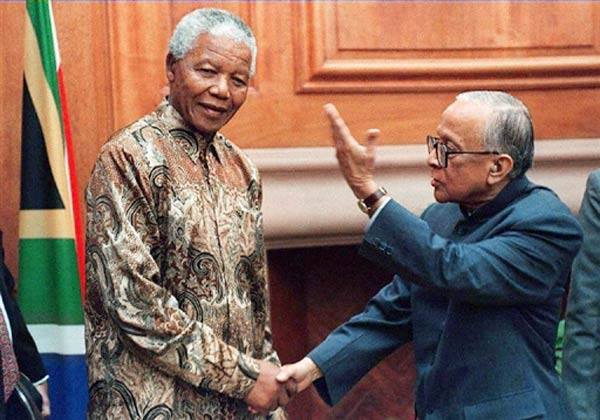
Jyoti Basu with Nelson Mandela. Photo Credit: Communist Party of India (Marxist), Facebook.
West Bengal had more than its share of OPI members. In the political context of the state it ensured loyalty to only one party—the CPI-M. No other political party in India, or for that matter in the rest of the world, has held on to ‘absolute’ power electorally, without a break for so long. The people of West Bengal, some who would never have ordinarily crossed the path of communists, suddenly found in them a safe and lucrative refuge. The CPI-M appeared to offer the incentives of an attractive investment policy. The ‘jholawala shabby Marxist’ suddenly became the cynosure of all eyes. Joining the party was like signing up with a football club that unfailingly kicked the winning goal in the goalpost. The party’s membership in West Bengal galloped even as it floundered and lost whatever faltering base it had in the Hindi heartland to the Mandal parties. The irresistible pull of power worked wonders for the CPI-M when it came to a headcount of its members.
They had been ‘efficient’ in capturing political, educational and cultural institutions; taking them over systematically, appointing in key positions persons loyal to them, regardless of qualification or merit. From the very beginning, people inhabiting the world of the CPI-M were split into two categories: ‘aamader lok’ (our people) and ‘amader lok na’ (not our people).
Hunter Thompson in Kingdom of Fear said: ‘Res ipsa loquitur’ (Let the good times roll). Good times indeed were rolling for the CPI-M. In that heady process however, the inherent democratic principle propelling change ended up as the casualty. The withering of a credible opposition perpetuated the stagnation of the political status quo. For a while Trinamool Congress leader Mamata Banerjee seemed to rattle the Left Front’s composure, especially around 1999, when she called for a mahajot or a Grand Alliance with the Congress against the Left Front and did draw significant popular response. However, she lost that moment, oscillating between opposing and supporting the Bharatiya Janata Party (BJP)-led National Democratic Alliance (NDA) government and quitting her cabinet post as Railway Minister. It took the Nandigram-Singur developments for the Trinamool Congress leader to return to West Bengal’s political centre stage.
How does the CPI-M’s balance sheet look at the end of thirty-three years?
A graph of losses and gains would show the party neck-deep in bankruptcy following the drain of ‘ideological wealth’. A comfortable existence of political dominance without resistance worth its name broke the party’s ideological spine. Driven by prospects of easy opportunity, all shades of people invaded the CPI-M. Once discerning, exacting in its choice of members, the party’s gruelling `rite of passage’, mandatory and inflexible in the past, became loose and flexible. The party loomed like a powerful corporation beckoning one and all, political and social climbers, ideological ignoramuses, rank opportunists, tantalising them all with possibilities that had nothing to do with the ideology of politics.
Before the ‘feel good times’ set in, becoming a card-holding member of the CPI-M wasn’t easy. It was like sitting for a test, one that went on for years. Only after passing through that critical wringer could you be certified as a card holding member – the term itself not part of the CPI-M language, but a quaint leftover from the days of the united CPI. There were no shortcuts and few lateral entries from the top. It was a little like the way journalists functioned before the onset of the internet and easy news gathering through wires. Editors then were tough, ensuring by the time the afternoon sun rose high, that reporters would be out of their air-conditioned offices; no short cuts. Bracing the heat and the cold was clubbed under `leg work.’ In the CPI-M’s terminology ‘leg work’ meant organising, mobilising students, youths, workers, peasants, women, teachers. You had to prove your skills as a ‘mass worker’ in any one of the party’s mass organisations and get at least a minimal idea of Marxist-Leninist philosophy. In fact it was considered infra dig to graduate to membership within a short time. Since I joined the party in West Bengal in the early 1980s – when the Left Front had its feet firmly planted in Writers’ Building – I knew myself to be part of that ‘non rigorous,’ maybe a trifle ‘looked-down upon’ membership, with an easy entry.
But even in those days of laxity you could not barge in like you could in the 1990s, the period of confusion and disenchantment when members started dropping out, disillusioned with the emerging face of socialism. These were also the times when the CPI-M further lowered its ideological guard and drafted new members without making too much of a fuss. The ‘nouveau’ communist—the ‘Marxist come lately’—strutted about, brandishing the ‘party card,’ using ‘brand CPI-M’ to further his/her interests. Gone was the Spartan communist epitomised by Harekrishna Konar or Promode Dasgupta—almost Gandhian in frugality, honed razor sharp in political battles, far removed from the labyrinthine power games of the establishment. The new lot went about ‘doing’ their politics like unscrupulous businessmen; bullying, extorting, terrorising became part of the ‘ideology.’ The West Bengal party leadership regularly carried out ‘cleansing’ operations to weed out the rot. But it ran too deep, too thick.
A graph of losses and gains would show the party neck-deep in bankruptcy following the drain of ‘ideological wealth’. A comfortable existence of political dominance without resistance worth its name broke the party’s ideological spine. Driven by prospects of easy opportunity, all shades of people invaded the CPI-M.
The CPI-M’s organisational documents circulated at its congress every three years routinely regretted the ideological downturn, but the slide, too rapid by then, could not be halted. Here lies one of the keys to the transformation of the CPI-M machine. For it was the machine that was supposed to cleanse, that itself got mired in a whole range of corrupt nexuses – with builders, contractors, police and local anti-socials. Try as they might, the state leaders never managed to control these new nexuses. Media and human rights groups regularly revealed the involvement of CPI-M members – often district level leaders – in incidents of rape and murder. Alimuddin Street almost unfailingly responded by scoffing at the allegations as part of a political conspiracy, or promising an inquiry, which invariably made its way into the files of unresolved crimes. This expressed more than anything else, Alimuddin Street’s helplessness rather than its complicity. Eventually, one can say, it was the leadership that was dependent on the monster it had created.
II
Anatonia was living in a communal apartment where the house elder was an ardent Stalinist, widely suspected as an informer, who made her suspicions of Anatonia clear. On one occasion, when a neighbour showed off her new pair of shoes, Anatonia had let her guard down by saying that her father would have made them better because he had been a shoemaker (a trade associated with the `kulaks’ in the countryside). Frightened that she would be exposed, it was a huge relief for Anatonia when Georgii Znamensky asked her to marry him. Marriage to Znamensky, an engineer and a citizen of Leningrad, would give her a new name and a new set of documents to let her stay in Leningrad.
Orlando Figes, The Whisperers
Fear, Suspicion and the Third Eye
The CPI-M presides over a Kafkaesque world mapped by an `invisible third eye’—tracking, recording, filing. Communists have been known to make good, though not artful snoops. In West Bengal, under their thumb for more than thirty-odd years, comrades keep an eagle eye not just on each other, but on each other’s families and friends. ‘Guilty by association’, a dictum practiced by and consummated in communist regimes across the world, still carries with it a frightening respectability.
Chandrayee Gupta, daughter of Sadhan Gupta, among the six Lok Sabha MPs fielded by the undivided Communist Party in the first general elections of independent India in 1953, found herself condemned under the CPI-M’s ‘guilty by association’ fiat. Chandrayee’s was a classic ‘communist family’, bound intrinsically to the communist movement for at least two decades before its romance with Writers’ Building had bloomed. Her mother Manjari Gupta was the first president of the CPI-M backed All India Democratic Women’s Association. ‘I grew up in the party. I remember participating in the 1965 khadya andolan (food movement), civil liberties movement, in every election from 1967 to 1991,’ said Chandrayee. A member of Indian People’s Theatre Association (IPTA) since 1971, Chandrayee became active in the SFI from 1974. She joined the party in 1977.
The CPI-M presides over a Kafkaesque world mapped by an `invisible third eye’—tracking, recording, filing. Communists have been known to make good, though not artful snoops. In West Bengal, under their thumb for more than thirty-odd years, comrades keep an eagle eye not just on each other, but on each other’s families and friends.
Her whole-timer husband Badshah Alam had been in active Left politics since the 1967 general elections. Two years later he became a member of the CPI-M, and then Democratic Youth Federation of India’s (DYFI) Calcutta district secretary. In 1983 Badshah was elevated to the post of the first CPI-M secretary of Padmapukur local committee, which included Beck Bagan and Bhowanipur – areas with highly diverse economic, religious and linguistic populations. His conflict with the party began after the Left Front, completing its second term in power, started shifting its priorities from the poor to the powerful vested interest groups – the land mafia and realtors. ‘The so-called class enemies were being wooed by key personalities in the party. Badshah’s differences grew with party leaders who wanted him to yield to money power. The strained relations exploded in 1990,’ said Chandrayee.
Following a brutal attack on Mamata Banerjee on 16 August 1990 by CPI-M workers in Calcutta, an influential section of the Calcutta District Committee wanted Badshah to make statements according to their diktat, contradictory to the truth. Already in an uneasy co-existence with the party, Badshah’s refusal led to his expulsion in 1991. `We knew if we compromised nothing would happen but we were determined not to. We were also aware that the party was making an example of Badshah’s expulsion to rein in other restless workers,’ said Chandrayee. The party accused Badshah of making money from the Muslim-dominated area of Padmapukur – an important one on the CPI-M’s list of local committees.
A visit to Chandrayee’s flat inside an alley in the Bek Bagan area would leave you wondering why Badshah and his family would choose to inhabit such a cramped place, when they, according to the CPI-M, had stockpiled such wealth. A narrow flight of tacky, ill-lit stairs takes you upstairs. For additional space Badshah had turned the roof into a kind of a make-shift room where you could cook in one cornet In the middle lay a few chairs. Sitting here Chandrayee and I chatted, returning to the events that changed the drift of her life.
‘After Badshah was expelled someone close to the party visited us. As he entered our home, he could not hide his surprise. He asked me “Is this where Badshah Alam lives?”’ since nothing in that humble flat suggested a hidden stash. With the expulsion began the party’s hounding of the family, economically and emotionally. `The party attempted to disrupt our family life. It spread rumours of our divorce. Badshah’s siblings were all party members. The party engineered a rift within the family,’ said Chandrayee. ‘We went through hard times. Could not send our two sons to the best schools. Virtually overnight people we were familiar with and knew for ages stopped recognising us,’ she added. Though she had not expressed any wish to sever association with the CPI-M, the party refused to renew her membership, throwing her into the ‘guilty by association’ lot.

Mamata Banerjee was attacked in 1991 by communist party goons. Photo Credit: AITC Official
That was not all. The CPI-M began to squeeze Chandrayee out of the court where she practiced. ‘The party stopped giving references for the public sector cases that used to come to me from different districts. State government briefs which had been dwindling from 2000, finally stopped in 2004. These have again begun to come to me after Nandigram in 2007.’
‘We went through hard times. Could not send our two sons to the best schools. Virtually overnight people we were familiar with and knew for ages stopped recognising us,’ she [Chandrayee] added. Though she had not expressed any wish to sever association with the CPI-M, the party refused to renew her membership, throwing her into the ‘guilty by association’ lot.
A year following his expulsion, Badshah and some of his ‘axed’ comrades formed a group, Marxbadi Kendra, trying to consolidate other Left forces in a common platform against the Left Front’s misrule. It did not take long to realise that the CPI-M would not allow them to function democratically. By-elections to Calcutta’s Ballygunge Assembly seat were held that year. The CPI-M fielded Rabin Deb, and Marxbadi Kendra, Swapan Chakraborty, once a popular CPI-M councillor, later thrown out by the party. ‘That election experienced unprecedented rigging, resulting in a CPI-M victory by a vote margin of 30,000. The sitting CPI-M MLA, however, had won by just 1500 votes,’ said Chandrayee. She described the way cadres from all parts of Calcutta poured into the constituency and the violence that followed. `Badshah protested when voters of Swinhoe Lane were prevented by the police from entering the polling station. In retaliation the police threw him into the van took him into “safe custody”. When the deputy superintendent came he found Badshah sleeping. Throwing him on the floor, he began hitting him, opening his eyes with his boot. All along the DSP shouted: “Take dekhte hobe, police manusher upore (you have to concede police is above the common man).”‘ ‘At about 9.00 p.m. I went to the barracks and found Badshah with boot marks on his face, injured and unattended. After my written complaint, he was given medical attention at 1.00 a.m.,’ she added. A case is still pending against Badashah, the trial continuing since 1996.
Marxbadi Kendra, however, proved a short lived experiment as Badshah joined the BJP in 1997, which seemed to him the only party capable, at that time, of taking on the CPI-M. ‘I cannot say the decision made me happy. But he needed a political platform,’ said Chandrayee. Quitting the BJP in 2007, Badshah joined the land movement led by Siddiqullah Chowdhury, secretary of the People’s Democratic Conference of India (PDCI). He found the agitation for land more effective.
After more than a decade Chandrayee went with her father Sadhan Gupta to Alimuddin Street following the death of Nripen Chakraborty. The veteran communist leader expelled by the party had been taken back a day before his death. His body was kept at the CPI-M headquarters. `Nripen Chakraborty had lived at our 47 Theatre Road residence for some time. He enjoyed being with the family, playing with the kids. When he passed away, Baba wanted to go to the party office. I went with him. It was strange. Nobody would talk to us. We just stood there. After some time Anil Biswas came and spoke with me. As if on cue others followed, though not Buddhada (Buddhadeb Bhattacherjee). He did not even bother to speak to baba,’ said Chandrayee.
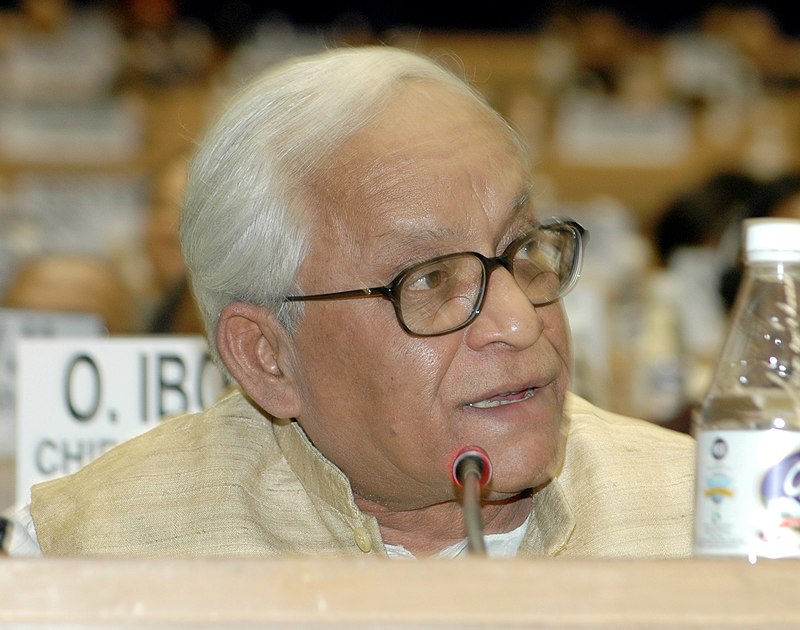
Buddhadeb Bhattacharjee was the Chief Minister of West Bengal from 2000 to 2011.
Within a year of taking over the reins, the CPI-M had become a ubiquitous presence in West Bengal, sometimes with open aggression, but more often a lurking shadow — a snooping, hovering third eye.
Maimoona, an acquaintance of Chandrayee, tells of how her husband, a party member in Beck Bagan, was a victim of the snooping brigade. `The Municipal Corporation was proposing to hand over Park Circus Market to Reliance. Siddiqullah of PDCI had organised a meeting protesting the move. My mother wanted to listen to Siddiqullah. So I took her to the meeting. We sat at the back’.
Within a year of taking over the reins, the CPI-M had become a ubiquitous presence in West Bengal, sometimes with open aggression, but more often a lurking shadow — a snooping, hovering third eye. Maimoona, an acquaintance of Chandrayee, tells of how her husband, a party member in Beck Bagan, was a victim of the snooping brigade
‘At the party’s local committee office the next day a CPI-M leader asked my husband if he had attended yesterday’s meeting. My husband said no. The leader promptly fished out a photograph of me sitting with my mother at the meeting! Party workers were actually present at the meeting, snooping, taking photographs,’ said Maimoona.
`The CPI-M is calling us communal. But a day before the meeting party cadres went around Beck Bagan saying Sidiqullah was going to hold a meeting of Muslims and the Hindus should stay away,’ said Chandrayee.
*
Since the 1980s much of the party machinery was wielded through suspicious means. One of these important ‘bonding’ activities was party ‘collection’. No longer were party members assessed by their organisational skills, and the ability to attract new members. The CPI-M now seemed to measure the political worth of its members from their fund-raising skills.
Every unit of the party – student, youth, women and trade union – was caught up in the collection drive, ‘Collecting funds and mobilising people for rallies and meetings are two of my main political activities,’ said Aparna De, a former attendant in Calcutta’s Modern High School. A member of the party and the Ganatantrik Mahila Samiti since 1982, Aparna went around with her comrades on house-to-house, shop-to-shop fund collection. ‘We have shops allotted to us and the collections can range between Rs 5 to Rs 100. We also visit people at home and at clubs. No, there is no coercion. They give the money because they love our party’.
If this is the state of affairs with those who are the party’s ‘own’, one can easily imagine what happens to those who do not belong there. Often, they simply disappear.
The list of missing persons has grown too long to be dismissed or taken lightly. West Bengal, in the last two decades, has been home to many mysterious deaths and inexplicable disappearances, explained by theories of political conspiracy.
I remember Manisha Mukherjee from my years in the Department of Archaeology. Most students on the campus knew her – a slim, attractive student, who sat on the steps and joined our addas. An active member of the SFI, I guess it was part of Manisha’s ‘mass work’ to chat with the students. But she had a genuine, endearing friendliness, and it came as a shock more than a decade later to learn about her disappearance. In December 1994, Manisha, then Calcutta University’s deputy controller of examinations, suddenly vanished from her house. As of May 2010, there is still no word of what happened to her. Manisha’s mother, Chinu Devi, knocking on every possible door, trying to get news of her daughter, is believed to have told the police where she could be hiding. Said a news report, ten years after her disappearance: ‘Calcutta University’s deputy controller of examinations Manisha Mukherjee disappeared from her house in December 1994. Her mother, Chinu Devi, initially gave the police a lot of information about the possible places where she could be hiding, apparently to save herself from “some university people” who wanted to kill her, as she knew about a lot of corrupt deals on for her all over eastern India, and amidst talk of political “fixing”, Manisha remained untraced. But the case file, the thickest with the Calcutta Police, hasn’t been opened for a while.’
The list of missing persons has grown too long to be dismissed or taken lightly. West Bengal, in the last two decades, has been home to many mysterious deaths and inexplicable disappearances, explained by theories of political conspiracy.
Or take for example, this story: On 30 October 1993, a police team led by Harmanprit Singh, then Additional Superintendent of Police in Hoogly, picked up Bhikari Paswan, a jute mill worker from his residence. That was the last that people heard of Bhikari Paswan. The case was handed over to the Central Bureau of Investigation (CBI) but the inquiry resolved nothing. Why was the jute mill worker picked up from his home? Where did he disappear to?
Bhikari Paswan was a casual worker in Victoria Jute Mill in Telinipara, in the Hoogly district, which witnessed massive workers’ unrest following unpaid wages, Provident Fund and bonus dues. The workers’ anger was directed, in large part, against the unions. Following the outbreak of clashes and the police crackdown on agitating workers, Bhikari Paswan was allegedly one of the workers picked up and sent to police custody. Though the police denied arresting Paswan, the Association of Protection of Democratic Rights, investigating the case, concluded in its report, ‘in the light of the facts which have come to light during the investigations, it can be concluded that Bhikari Paswan was indeed picked up by the police party from his residence on the night of 30/31 October 1993 at about 12.30 a.m. His whereabouts since then are not known.’
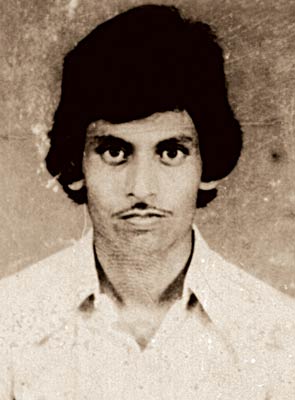
Bhikari Paswan was a worker at the Victoria Jute Mill.
In an earlier incident in the mid eighties, CPI-M goondas attacked, molested and murdered a senior officer of United Nations Children’s Fund (UNICEF), severely hurting another officer of the Central government in Bantala, on the outskirts of Calcutta. ‘The reason was that these two lady officers had detected huge embezzlement of UNICEF funds and relief materials by CPI-M functionaries. When the matter was reported to the then Chief Minister Jyoti Basu, he reacted saying: “Such incidents happen, don’t they?” And that was the end of the matter.’
In 2009 the sessions court at Ranaghat in Nadia convicted four persons in connection with the looting of a marriage party in February 2003, in which the driver of the bus was killed and six women passengers raped. However the court let off 17 others, including two local CPI-M leaders Subal Bagchi and Saidul Islam, for lack of evidence. ‘Bagchi was then a member of the CPI-M zonal committee from Ranaghat and Islam was the pradhan of Kamalpur gram panchayat. A large number of witnesses had turned hostile in the case affecting the prosecution. Ninety per cent of the witnesses out of the 158 turned hostile, said Dilip Chatterjee, the counsel of the state government.’
In an earlier incident in the mid eighties, CPI-M goondas attacked, molested and murdered a senior officer of United Nations Children’s Fund (UNICEF), severely hurting another officer of the Central government in Bantala, on the outskirts of Calcutta… ‘When the matter was reported to the then Chief Minister Jyoti Basu, he reacted saying: “Such incidents happen, don’t they?” And that was the end of the matter.’
In fact membership has become so easy that a person like Subal Bagchi, and many more like him nesting with the party, could not only enter the membership ranks but elevate their stature to that of a ‘leader’. These incidents speak volumes for the slackening of the political and ideological rigour that had perhaps once given a place of distinction to the CPI-M, setting it apart from the wider political class.
*
The stories of political murders and disappearances in West Bengal are endless. And they do not usually come out into the open. But sometimes they do. To be more precise, of late they have started coming out. This is no doubt due to the winds of change blowing in the state, where the domination of the CPI-M and the Left Front is breaking. For the first time the effect of the ‘fear factor’ is declining. The well-known Rizwanur Rehman case was a turning point.
Sujato Bhadra—member of the Association for Protection of Democratic Rights (APDR) and a key person to blow the whistle on the Rizwanur murder case—can, by the mere whisper of his name, raise Buddhadeb Bhattacharjee’s blood pressure by several notches. Given the CPI-M’s chilling disregard for transparency and democratic norms, Buddha’s revulsion towards Sujato is predictable. But the genesis of the bad blood between the two individuals, the omnipresent chief minister and the much vilified human rights activist, goes back to an incident that begs to be told.
In 1992 Jyoti Basu hosted a conference as a prelude to instituting a Human Rights Commission in West Bengal. Ironic, since the comrades have a human rights record humiliating enough to make them hang their heads in shame. Custodial deaths stand at a record high under the Left Front’s vigilant eye. The state government bears the infamy of extricating the police whenever they are in deep trouble. Thirty-three years of uninterrupted rule gave the CPI-M ample time and expansive leverage to make ‘party cadres’ out of the state police, waiting to be co-opted. Arrogance running high, the party’s writ turned into commands to which every ancillary of the state bowed its head. The party feared no one.
Custodial deaths stand at a record high under the Left Front’s vigilant eye. The state government bears the infamy of extricating the police whenever they are in deep trouble. Thirty-three years of uninterrupted rule gave the CPI-M ample time and expansive leverage to make ‘party cadres’ out of the state police, waiting to be co-opted.
Before instituting the State Human Rights Commission the government put out a notification in newspapers about a conference on human rights—an open meeting anybody could participate in. `We decided to attend the meeting and made the necessary preparations,’ says Sujato. APDR members charted out a list of human rights violations in West Bengal, distributing it among the speakers a day before the conference. ‘I even gave one to Buddhadeb Bhattacharjee’s secretary, who happens to be my cousin,’ says Sujato.
The next day APDR members turned up at Shishir Mancha, the venue of the meeting. Naranarayan Gooptu was delivering the inaugural address, in the course of which he denounced the manner in which the Congress government in Tripura had hushed up reports on mass killing probed by a judicial commission. I raised my hand. Jyoti Basu was on the podium. He did not want to allow me my question. But Dr Bela Dutta Gupta (former chairperson, West Bengal Women’s Commission) sitting next to him, allowed, me. I drew the speaker’s attention to similar instances in West Bengal in which the state government had swept judicial commission reports under the carpet.’
Buddhadeb Bhattacharjee, then minister in charge of the police, information and culture (a pungent cocktail!) was not on the podium. The moment the question rang out he rushed to the dais, took the mike, and asked the person asking the question to meet him outside the hall. ‘This sparked a furore. APDR members scattered in the hall rose to their feet, protesting the muzzling of questions at a seminar. We walked out.’

Buddhadeb Bhattacharjee after the 2006 Assembly Elections Victory.
‘The moment I stepped out of the hall Buddha came towards me—rolling his sleeves and asking who had raised the question. When I identified myself he asked me to repeat the question. As I did so there was an altercation. Buddha signalled to the police who started to thrash me.’
Amid all this, unnoticed by most in the audience, was Maitreyo Ghatak, well-known litterateur. ‘None of us saw him,’ says Sujato. When he was being whisked away from the seminar hall Ghatak voiced his protest. Raising his hand, he stood up and kept repeating in a well-mannered tone: `Seminare prashna kora to anyay noi’ (It is not a crime to raise questions at a seminar).
It was rather funny. This man who had just casually walked into the meeting got caught in the fracas. As Buddha ordered the police to arrest us, he also gave an order, to arrest Ghatak, who passed off unrecognised in the ruckus. We were in the police van when we noticed the author sitting with us. I asked him “Aaapni ekhane ki korchhen?” (What are you doing here?) He looked at me and said: “All I said was that it’s not a crime to ask questions at a seminar!”‘
The police van disgorged the APDR members and Ghatak at the Lai Bazaar headquarters. Here the police discovered they had messed up by rounding up Ghatak in the melee. The police then would not register a case. They just asked us to leave their headquarters. We refused, insisting our names had to be recorded since we were arrested,’ narrates Sujato.
‘The moment I stepped out of the hall Buddha came towards me—rolling his sleeves and asking who had raised the question. When I identified myself he asked me to repeat the question. As I did so there was an altercation. Buddha signalled to the police who started to thrash me.’
The arrest could not be stamped out of the public glare. The state government was in a spot. It was learnt Buddhadeb later attempted a conciliatory meeting with APDR. It was also subsequently learnt that as chief minister he refused to meet any delegation that had Sujato in it.
III
‘Mothers and Sisters’
Of its many baffling, conflicting cultural traits, Bengal’s attitude towards women is worth a discussion. Bengalis like to believe they are intrinsically ‘superior’ vis-a-vis other communities in the way they treat their women. A popular myth in wide circulation propagates that the women in this state are treated with unique respect, absent in most ‘uncivilised’ parts of the country. Marxists would like to claim a large share of this glory, combating patriarchy in addition to being the most deserving inheritors of the legacy of the ‘Bengal Renaissance’ and the participation of women in the national movement. The Left movement, according to the communists, humanised gender relations. The ground situation, however, testifies to a different fact: patriarchy is as native to Bengal as its inalienable Rabindrasangeet; male chauvinism as deeply entrenched as the roots of Left politics.
The qualities that Bengal in general and the CPI-M in particular would like to bestow on themselves are rather imaginary – fond illusions in the light of the collective experience of Bengal’s women. The tragedy is compounded by the fact that the ruling Communist Party, which perhaps could have initiated a different culture, is itself yet to break free from male chauvinism.
During my years in Calcutta as an SFI activist I remember my exasperation over the sexist division of labour that would invariably mark organisational conclaves. In 1982, preparations were underway for the SFI conclave in Dum Dum. We were meeting in Calcutta University, deciding on delegation of responsibilities. The dadas instructed us women to come in Bengal’s traditional red-bordered white sarees; it was also our duty to put tikas on foreign delegates and shower flower petals on them. As if this were not galling enough we were also given the duty of distributing water! Questioning such stereotypical division of labour would usually brand me a `feminist’ – as if it were a curse!
The idea of respect for women goes with the expectation of conforming to a stereotypical image of womanhood – women primarily as mothers and nurturers – as a necessary pre-requisite for earning any form of social regard. Essentially conservative, the CPI-M unfailingly stays away from critiques of the patriarchal family, let alone from controversial issues like gay rights, sexuality – now dominant strands of feminist discourse. Like much of our political and social class, the CPI-M too fights shy of discussing, much less taking a decisive position on the rights of marginalised groups, lesbians, homosexuals, transgender persons. Instances of this crippling reluctance are many.
Let’s take a look at some of the scenes witnessed on the floor of Parliament. The somewhat desultory protests in a somnolent post-lunch session of Lok Sabha, following the attack on Deepa Mehta’s Fire, indicate the social psyche of our secular political class.
The idea of respect for women goes with the expectation of conforming to a stereotypical image of womanhood – women primarily as mothers and nurturers – as a necessary pre-requisite for earning any form of social regard. Essentially conservative, the CPI-M unfailingly stays away from critiques of the patriarchal family, let alone from controversial issues like gay rights, sexuality – now dominant strands of feminist discourse.
The Congress and Left MPs jointly criticised attackers from the Hindu fringe groups – but that criticism was articulated solely in political party terms; an attack on the sangh parivar and BJP which in no way added up to a defence of the right to sexual preference. Whenever such cultural/gender issues have surfaced in and outside Parliament nothing has really distinguished the CPI-M from the rest of the political class. Congress and BJP governments in succession banned dancing in Maharashtra’s bars, putting thousands of bar dancers out of jobs, pushing them into the sex trade. The imposition of the fiat was an exercise in morality. Not surprisingly the CPI-M did not take a vocal stand defending the rights of bar dancers – probably fearing such a stand could be interpreted as defence of the right to choose a ‘dishonourable’ livelihood.
In Jotodur Mone Pore Jyoti Basu provides a glimpse into the conservative, brahmanical culture of the CPI-M. ‘I got married on 5 December 1958. This was my second marriage. The leadership at the Centre and state then felt I was unwilling to go underground. This was not at all true. The party’s instruction to me was to stay out and continue as far as possible to work in public.

Jotodur Mone Pore by Jyoti Basu.
`I received a letter from the party’s secret cell, seeking an explanation as to why I was not going undercover. The letter also raised questions about my marriage [Italics added]. In reply I informed them that it was at the instruction of the party that I was working in public. I was ready to go undercover even at one-hour notice if the party issued a new instruction. I requested the secret cell to circulate my reply within the party. The letter sent to me by the secret cell was circulated, I do not know if my reply was,’ he writes [Italics added].
Basu made two interesting revelations: The puritanical Communist Party ‘raised questions’ about his second marriage, which it did not seem to approve. That cryptic one line indicated the party’s disapproval of a personal choice made by Basu—one which, in the CPI-M’s view was somehow detrimental to the institution of marriage; a view often shared by hardcore conservatives in right-wing organisations like the RSS. Sexual orientation, free/subversive love, non-traditional personal choices are derided by both the Left-and Right-wing-under the worn-out rubric of ‘Indian culture and values.’ Within the organisation the CPI-M is known to intrude into the personal lives of its leaders and cadres. This conservatism manifests itself in the party’s attitude towards women, the sanctimonious glorification of ‘Mother’ and ‘Sister’, and the exclusion of the modern, radicalised woman.
Basu also pointed to an endemic organisational flaw ingrained in the Communist Party culture. He said the secret cell’s critical letter to him was circulated but he did not know whether his reply was. I would like to recollect here Tapas’s criticism that while the CPI-M would widely circulate its official stand on a controversial issue, it would invariably sweep under the carpet the views contradicting the dominant line (Chapter 1).
Basu also pointed to an endemic organisational flaw ingrained in the Communist Party culture. He said the secret cell’s critical letter to him was circulated but he did not know whether his reply was. I would like to recollect here Tapas’s criticism that while the CPI-M would widely circulate its official stand on a controversial issue, it would invariably sweep under the carpet the views contradicting the dominant line.
Historian Tanika Sarkar believes the Leftist and radical imagination is uneasy about the ‘will of the woman to appropriate the world or even to move freely within it. Tribal or peasant women have been the main repositories of class militancy, not so much the middle class urban women’. Even the CPI-M’s women’s organisation speaks a patriarchal language. Ironic indeed for the Ganatantrik Mahila Samiti to address its gatherings as Mayera aar Bonera (Mothers and Sisters); implicit in such a form of address is the exclusion of other categories – particularly women of ‘loose character’ (a term in great currency in Bengal)!
The tone and tenor of Marxist speak on women and culture has been distressingly moralistic and puritanical, the arguments full of references to the West’s cultural invasion, its debilitating influence on Indian morals. The CPI-M, much of the time, has joined in demands for greater control and banning of TV channels promoting ‘degenerate’ values. If there were one issue on which MPs across the spectrum have struck a unanimous chorus it would be banning ‘wild’, ‘corrupting’ Western channels. One of the CPI-M’s common arguments against allowing foreign universities in India has been grounded in the threat perceived to Indian ‘values’. Western academic syllabi, according to the party, would destroy India’s unique values.
Perhaps the long-standing complaints of women in the party are reflected in an organisational document in which the CPI-M pulled up its male comrades: ‘Communist families should discourage conformity to stereotypical roles expected of women, particularly of newly-wed women, of covering heads, taking to purdah, shouldering the main burdens of domestic responsibility,’ said Women’s Issues and Tasks, adopted by the Central Committee in 2005 and circulated in 2006. ‘There have been many cases of two active comrades in the party deciding to get married. In some cases, the marriage then becomes a barrier for the woman’s advance, because … she is expected to give up her political life and become a housewife…. By not intervening, the party actually loses a talented and committed cadre, apart from having a negative impact on the woman….The woman comrade is expected to find a job to support the family although both may be equally qualified in terms of the party’s assessment,’ it pointed out, urging the members to end discrimination between sons and daughters.
Despite its active support to the Women’s Reservation Bill, the CPI-M has been stingy towards its own women comrades. The party’s decision-making bodies – Central Committee, Politburo – are packed with men, with only a handful of women. Protesting the skewed gender balance, Brinda Karat had even once quit the Central Committee, though without much impact.

Brinda Karat, first woman to be a member of the CPI-M Politburo and Vice-President of AIDWA.
Like political violence, gender violence has been executed at a range of levels. Few would forget the brutal, broad daylight lynching and killings at Bantala in May 1990 in a public space and subsequently Jyoti Basu’s insensitive comments, blithely transferring culpability of the crime to unidentifiable ‘anti-socials’. Two months later that year, following the rapes of three Bangladeshi women in Birati, a senior woman leader of the party and its women’s wing made a statement: ‘A group of anti-socials attacked and raped Sabitri Das, Reba Sen and Shanti Sen, the three women who stayed in the unauthorised hutments along the railway tracks…. Although so many women of that area, including Shanti Das, the mistress of a notorious anti-social, were involved in foul professions and such honeymoons of these women with the anti-socials were an open secret, that day’s event appeared to be a sequel to the rivalry between these anti-socials with Pradip Sarkar, of whom Sabitri Das was a mistress,’ wrote Shyamali Gupta, in no less a forum than the party mouthpiece (Italics mine). This was no wild, personal statement shot off by an individual. In the party mouthpiece, the statement conveyed the CPI-M’s official position on the Birati rapes. Even more shocking is the fact that the comments came from the general secretary of the Ganatantrik Mahila Samiti!
Despite its active support to the Women’s Reservation Bill, the CPI-M has been stingy towards its own women comrades. The party’s decision-making bodies – Central Committee, Politburo – are packed with men, with only a handful of women. Protesting the skewed gender balance, Brinda Karat had even once quit the Central Committee, though without much impact.
A crude attempt indeed, to whitewash the crimes, to stave off the responsibility of the party and government by situating the rapes within the boundaries of law and order and morality: the CPI-M was employing an age-old tactic used by men in power. Use of words like mistress, honeymoon, anti-socials, foul professions and unauthorised hutments were significant pointers to the party’s mindset. ‘The only relevance for such description resides in the unstated assumption that there are degrees of culpability in a crime like rape, that women require certain sexual, property qualifications to be classified as fully legitimate victims,’ observed Tanika Sarkar. She pointed out that apart from gender, the comments were even more ‘unexpected’ from the class angle with their emphasis on ‘unauthorised hutments’. ‘It was precisely among refugees clinging to unauthorised hutments that the Left movement had found a major base in Calcutta in the 1950s,’ wrote Sarkar.
Through the years top CPI-M leaders have been on record, making statements smacking of male chauvinism and making a mockery of the party’s official stand on gender. Eight years after the Bantala incident, E. K. Nayanar, then Kerala chief minister, responded to the revelations of the Kozhikode call girl racket with this: ‘As long as there are women, there will be sex scandals’. On increasing crimes against women, rape and molestations, Nayanar, defending Kerala’s record, said, ‘In the US, rape is like drinking a cup of coffee’. On denying Susheela Gopalan the chief minister’s post, his comment was, ‘If you want to run after women you are free to do so. I will not’.
Like the administration, the police and different institutions, gender too is expected to faithfully serve the party and its interests. Seen in this context it is hardly surprising that the CPI-M and its women’s wing situated the Nandigram rapes within the familiar rhetoric of ‘anti-socials, conspiracies and opposition propaganda.’ In fact every organisation of the party ostensibly protecting the rights and interests of women – Ganatantrik Mahila Samiti, All India Democratic Women’s Association and National Commission for Women – pooled their resources to do a cover-up job on the Nandigram rapes.
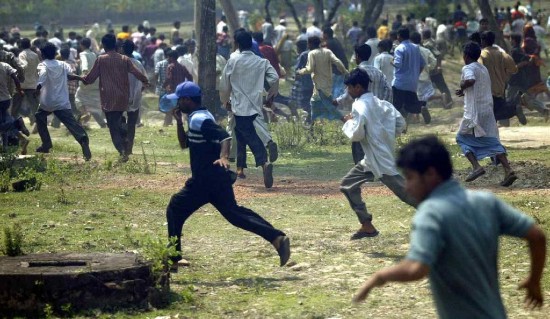
Villagers run as police fire teargas shells in Nandigram, 15 March 2007. Photo Credit: Reuters.
The ‘serve the party’ mindset also takes an upper hand when confronted with complaints of domestic violence – especially when the aggressor happens to be a party fund-raiser or leader. Pratyush Kumar (‘Bachhu’) Dutta, secretary of the Padma Pukur local committee, a former CPI-M councillor, took full benefit of this political immunity. For two decades Bachhu had been abusing his wife Rita. After running from pillar to post, finally abandoning her faith in the party, Rita decided to go public with her story. A meeting against domestic violence was organised by the UN-backed Institute of International Social Development on 27 September 2008, deliberately held in the heart of Padma Pukur – the local committee secretary’s preserve of influence. ‘The party had even tried hinting that Rita was mentally unstable,’ said Chandrayee Gupta, addressing the meeting as a lawyer. ‘I met Shyamali Gupta, president of Ganatantrik Mahila Samiti to talk about Rita’s case. Bachhu turned up at the meeting and called Shyamali Gupta aside. I can guess what he said. After returning to her room Shyamali mumbled something about the heat and left,’ said Chandrayee.
When I met Rita that day, far from revealing any signs of dormant or raging insanity she seemed in perfect control, greeting the guests, introducing them to each other. You could hear her despair and frustration at the party’s shoddy treatment, when she took the mike. ‘I have been physically, mentally and financially abused by Bachhu – a dada in this locality for 20 years. Every night he came home drunk, beat me up. He threatened my family, threatened to kill me. I was scared for my life and for my daughter Pamela.’
Like the administration, the police and different institutions, gender too is expected to faithfully serve the party and its interests. Seen in this context it is hardly surprising that the CPI-M and its women’s wing situated the Nandigram rapes within the familiar rhetoric of ‘anti-socials, conspiracies and opposition propaganda.’
Moving out of their shared flat Rita took up separate lodgings in the same locality. Bachhu went around using his clout with rickshaw pullers, and shopkeepers, harassing her. ‘I thought a party with Left ideology, friend of the people would help me. I knocked on the door of every possible leader. But they refused to intervene. It encouraged Bachhu to become more abusive,’ Rita told the meeting.
Apprehensive for her life, Rita registered a case under section 498 A-506 at the Bhowanipur police station on 21 June 2008. ‘Under the ruling party’s thumb and the benefit of Bachhu’s money the police did not take action,’ said Rita. She petitioned the deputy commissioner of police (South Division), the assistant commissioner, informing the Human Rights Commission of the police’s refusal to act on her FIR. ‘Today I stand before you after being turned away by every individual, every forum in the party,’ Rita told the meeting.
The public shaming did work after all. Last I heard was that the party had finally suspended Bachhu.
This excerpt has been carried courtesy the permission of Monobina Gupta. You can buy Left Politics in Bengal: Time Travels Among Bhadralok Marxists here
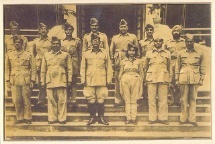
An excerpt from the book My Memories of I.N.A. and Its Netaji by Major General Shahnawaz Khan, where he documents how Bose formed the INA, inspired disillusioned Indian soldiers to revolt, and challenged British rule with Axis support.
Major General Shahnawaz Khan
__
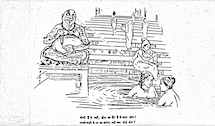
In the colonial period, the threat of the lecherous male gaze was used by the new patriarchy to restrict access to employment and public space for women, maintaining a patriarchal division of labour. Read how this process unfolded in our newest excerpt.
Saurav Kumar Rai
__

Was Lala Lajpat Rai's Hindu nationalism congruent with the principles of secularism? Explore our latest excerpt from Vanya Vaidehi Bhargav's fresh off-the-press book - Being Hindu, Being Indian: Lala Lajpat Rai's Ideas of Nation for more.
Vanya Vaidehi Bhargav
__
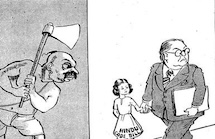
Popularly, we think that political cartoons question the powerful but what if this was not the case? What if political cartoons, replicated structures of the socially dominant? Read how in our new excerpt on political cartoons featuring Dr. Ambedkar.
Unnamati Syama Sundar
__

On Martyrs' day 2024, read the poet Sarojini Naidu's tribute to Gandhi given over All India Radio two days after his assassination.
Sarojini Naidu
__
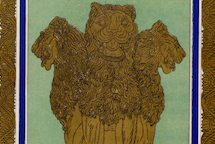
On Republic Day, the Indian History Collective presents you, twenty-two illustrations from the first illustrated manuscript (1954) of our Constitution.
Indian History Collective
__
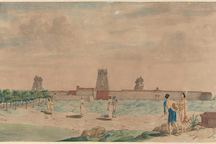
One of the key petitioners in the Ayodhya title dispute was Bhagwan Sri Ram Virajman. This petitioner was no mortal, but God Ram himself. How did Ram find his way from heaven to the Supreme Court of India to plead his case? Read further to find out.
Richard H Davis
__
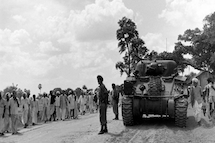
Labelled "one of the shortest, happiest wars ever seen", the integration of the princely state of Hyderabad in 1948 was anything but that. Read about the truth behind the creation of an Indian Union, the fault lines left behind, and what they signify
Afsar Mohammad
__
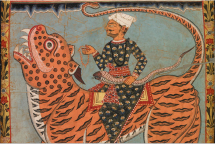
How did Bengal get a large Muslim population? Was it conversion by ruling elites was there something deeper at play? Read Dr. Eaton's classic essay to find out.
Richard Eaton
__
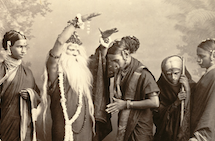
An excerpt from Shailaija Paik's new book 'Vulgarity of Caste' that documents the pivotal role Tamasha (the popular art form) has played in reinforcing and producing caste dynamics in Marathi society.
Shailaja Paik
__
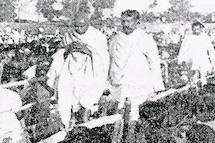
In 1942, two sub-districts in Bengal declared independence and set up a parallel government. The second part of our story brings you archival papers in the form of letters, newspaper reports, and judicial records documenting this remarkable movement.
Indian History Collective
__
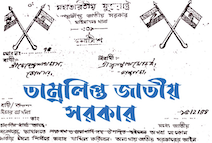
In 1942, five years before India was independent, two sub-divisions in Bengal not only declared their independence— they also instituted a parallel government. The first in a new series.
Indian History Collective
__
TIMELINE
-
2500 BC - Present 
2500 BC - Present Tribal History: Looking for the Origins of the Kodavas -
2200 BC to 600 AD 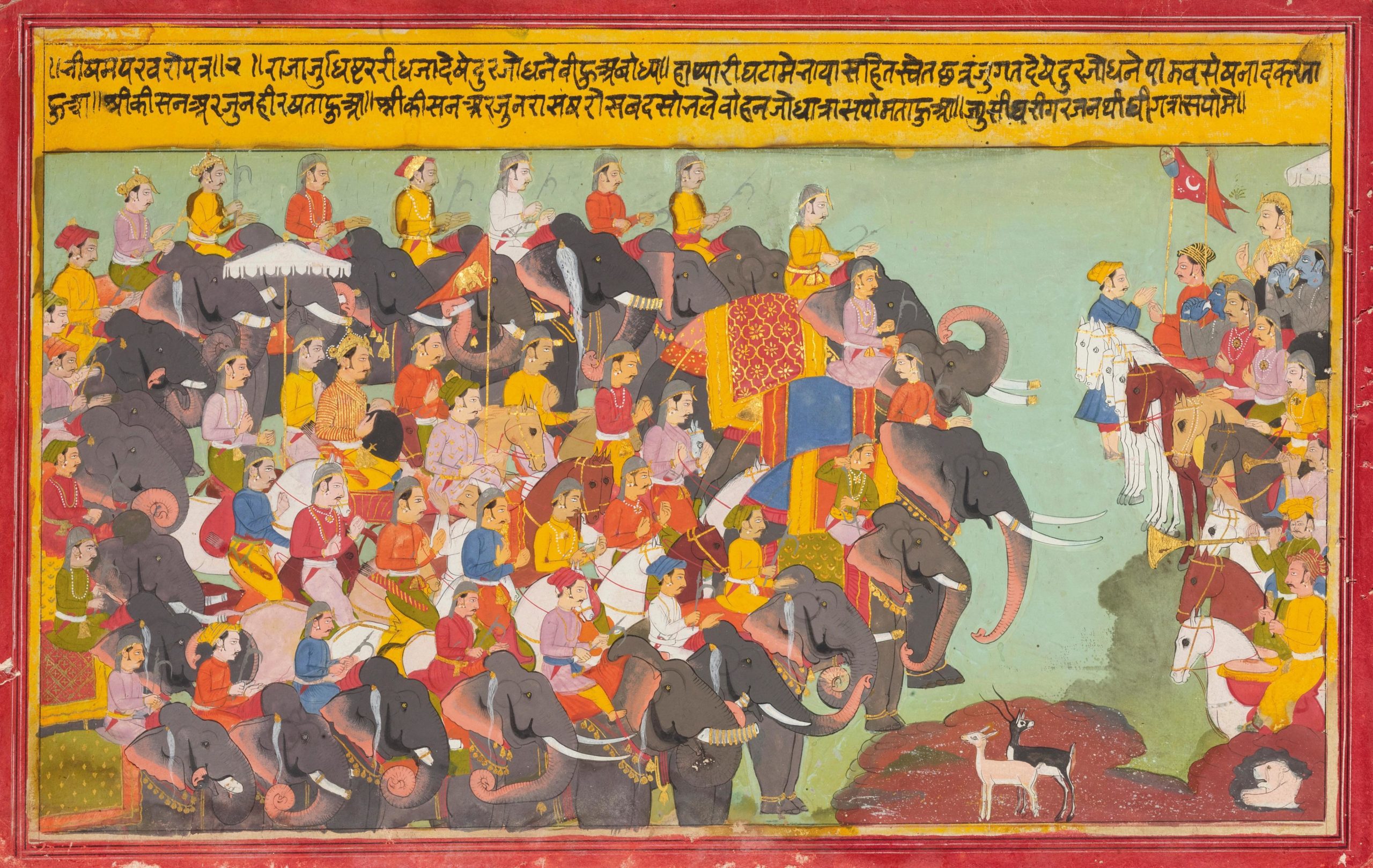
2200 BC to 600 AD War, Political Violence and Rebellion in Ancient India -
400 BC to 1001 AD 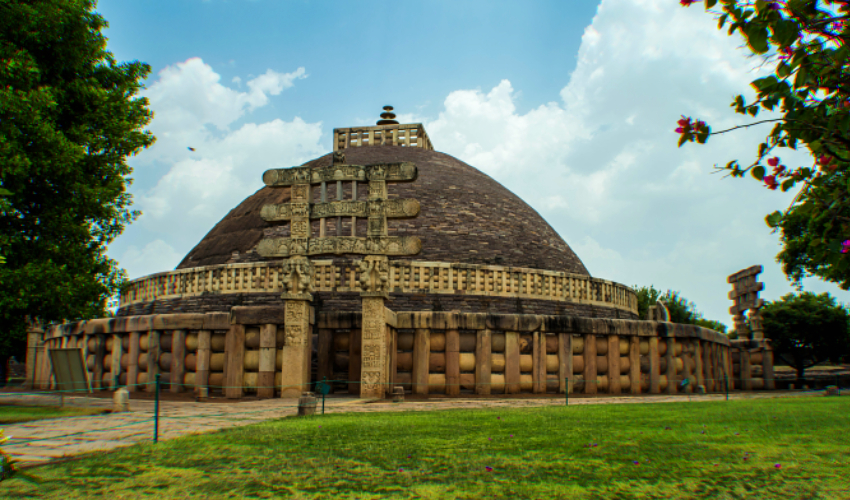
400 BC to 1001 AD The Dissent of the ‘Nastika’ in Early India -
600CE-1200CE 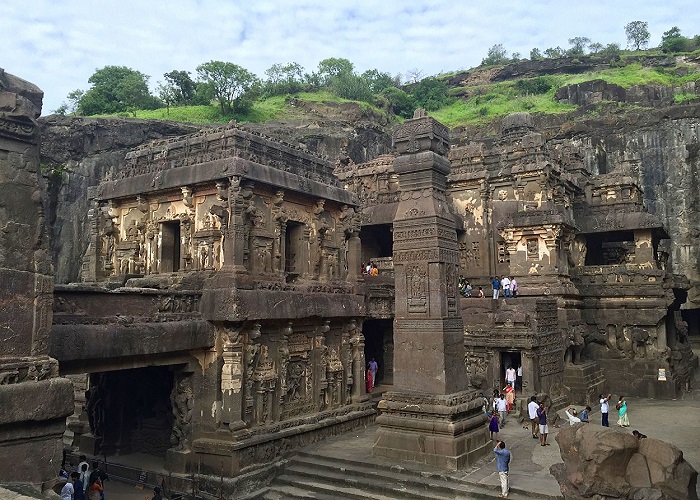
600CE-1200CE The Other Side of the Vindhyas: An Alternative History of Power -
c. 700 - 1400 AD 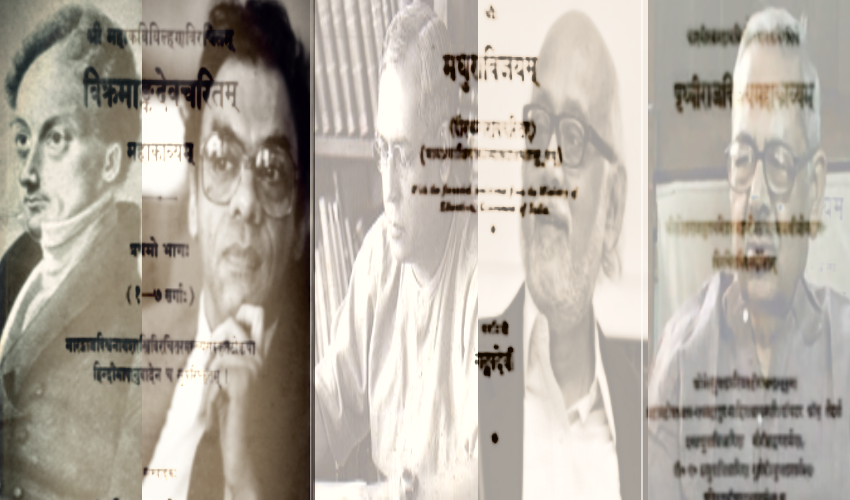
c. 700 - 1400 AD A Historian Recommends: Representing the ‘Other’ in Indian History -
c. 800 - 900 CE 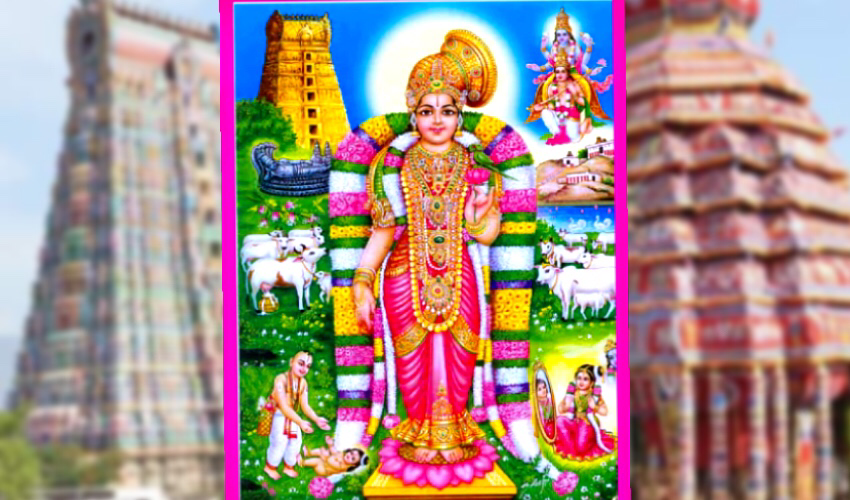
c. 800 - 900 CE ‘Drape me in his scent’: Female Sexuality and Devotion in Andal, the Goddess -
1192 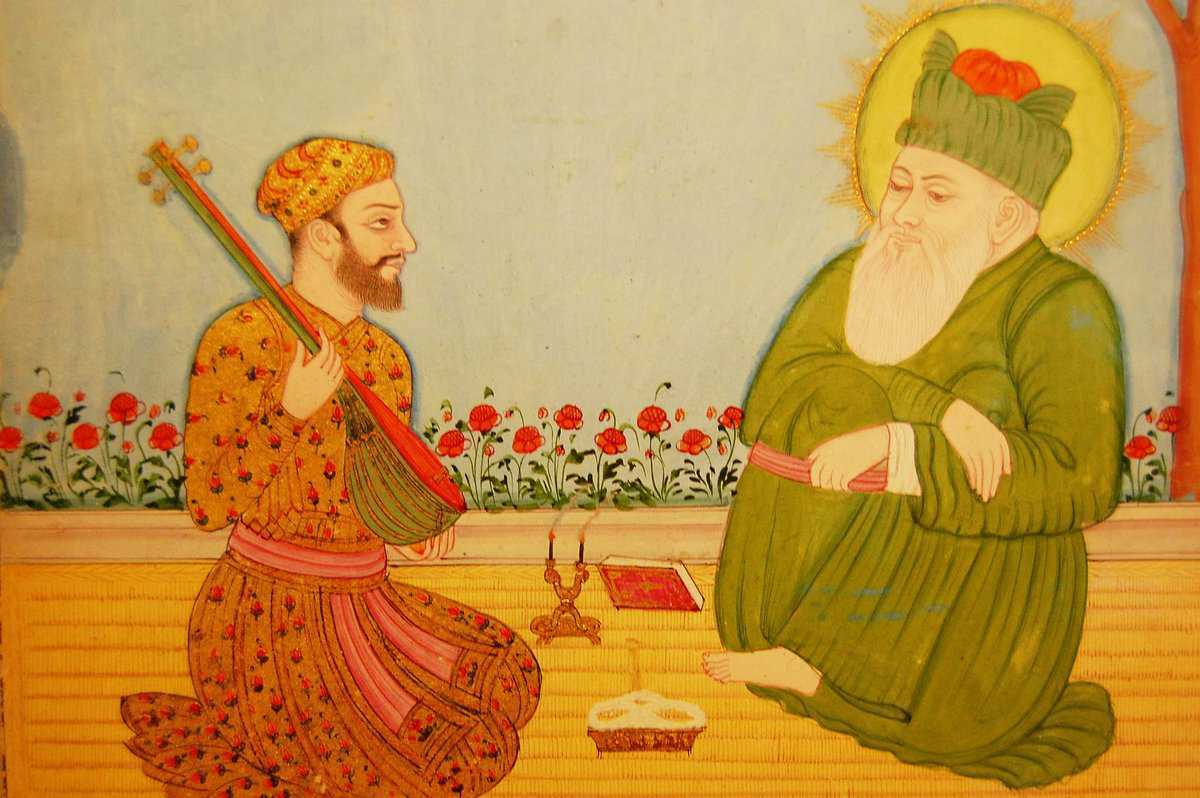
1192 Sufi Silsilahs: The Mystic Orders in India -
1200 - 1850 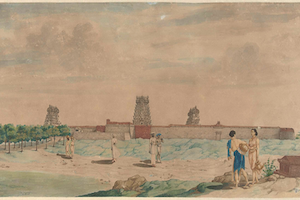
1200 - 1850 Temples, deities, and the law. -
c. 1500 - 1600 AD 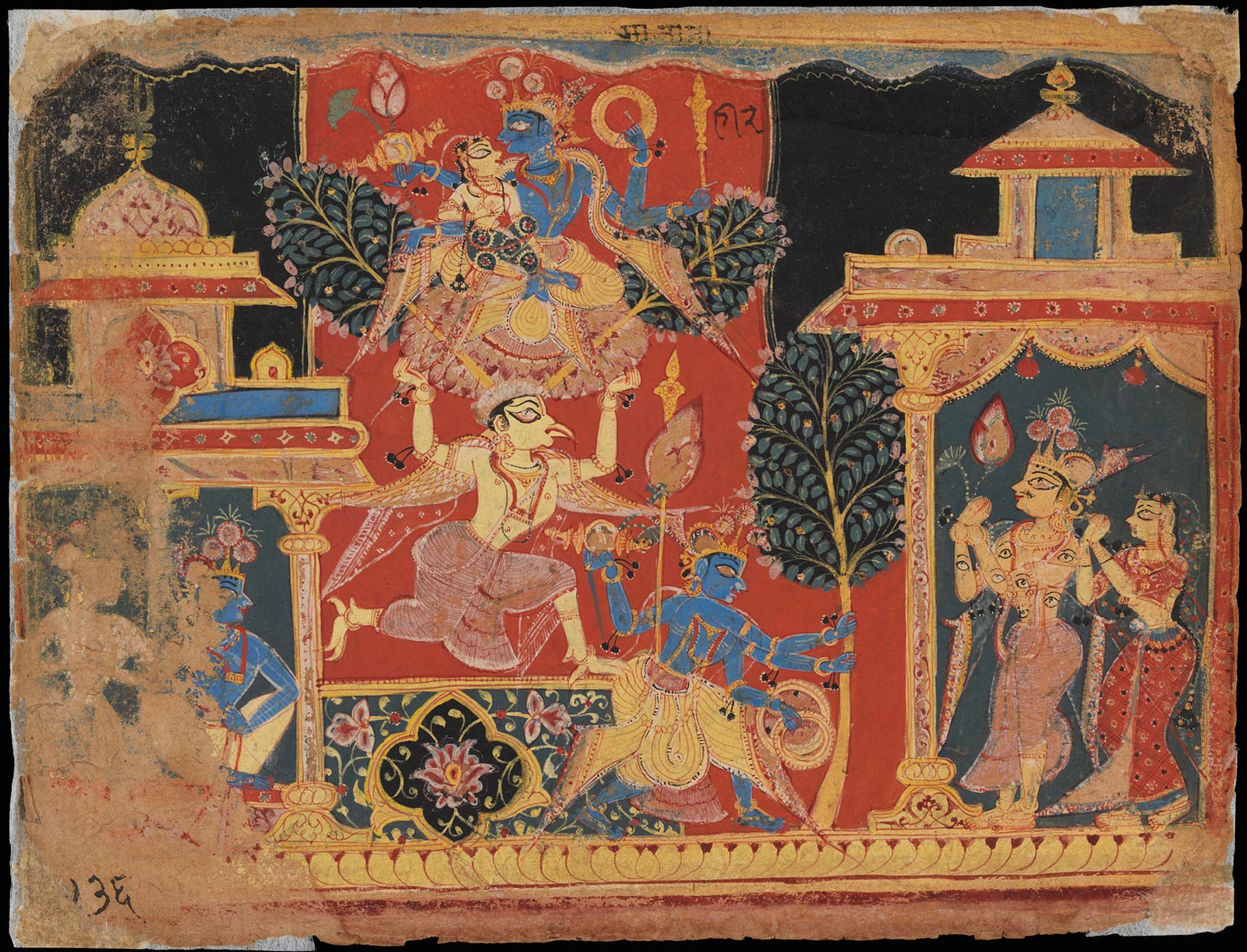
c. 1500 - 1600 AD A Historian Recommends: Religion in Mughal India -
1200-2020 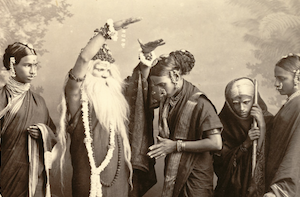
1200-2020 Policing Untouchables and Producing Tamasha in Maharashtra -
1530-1858 
1530-1858 Rajputs, Mughals and the Handguns of Hindustan -
1575 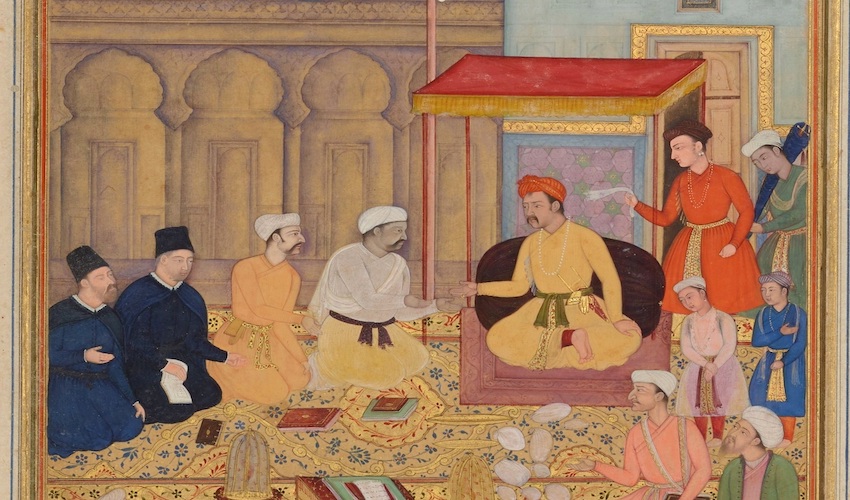
1575 Abdul Qadir Badauni & Abul Fazl: Two Mughal Intellectuals in King Akbar‘s Court -
1579 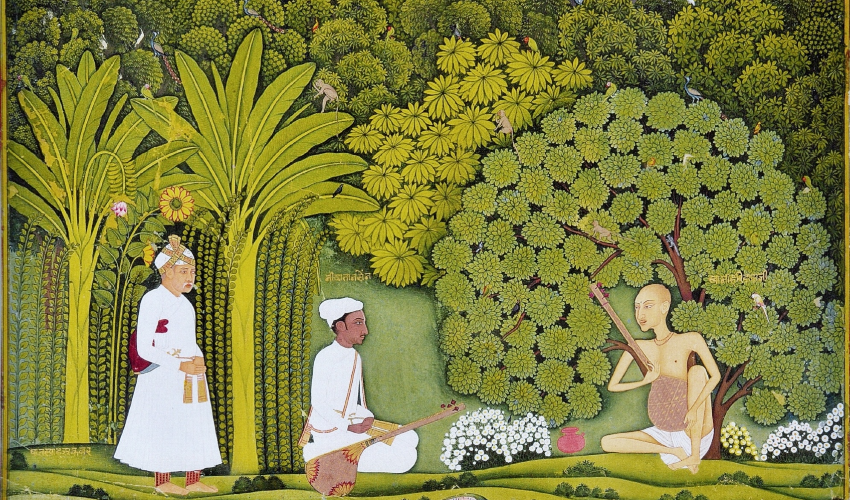
1579 Padshah-i Islam -
1550-1800 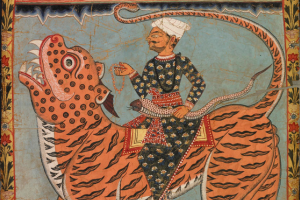
1550-1800 Who are the Bengal Muslims? : Conversion and Islamisation in Bengal -
c. 1600 CE-1900 CE 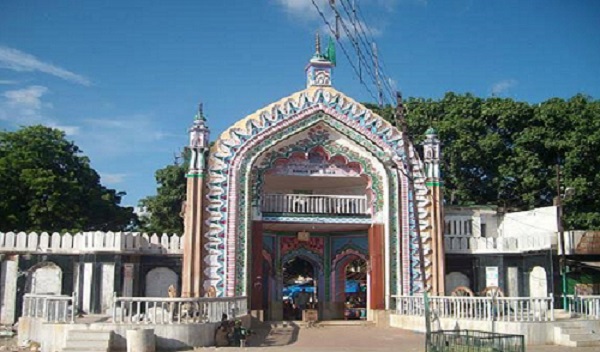
c. 1600 CE-1900 CE The Birth of a Community: UP’s Ghazi Miyan and Narratives of ‘Conquest’ -
1553 - 1900 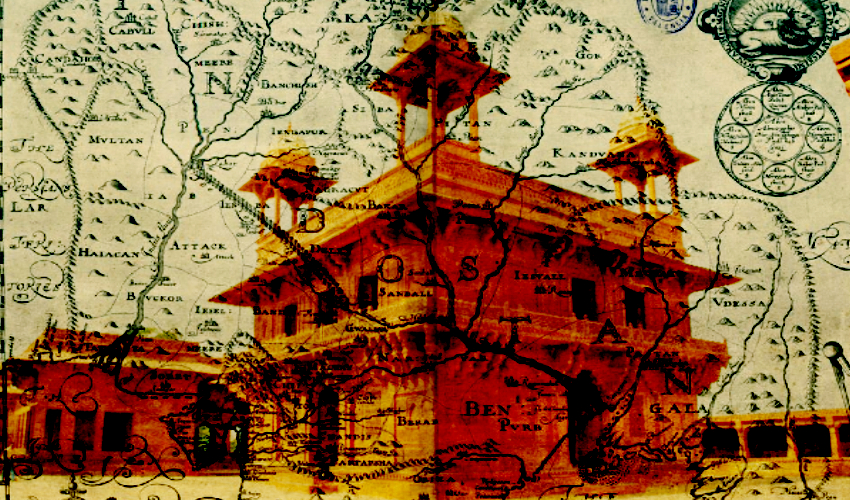
1553 - 1900 What Happened to ‘Hindustan’? -
1630-1680 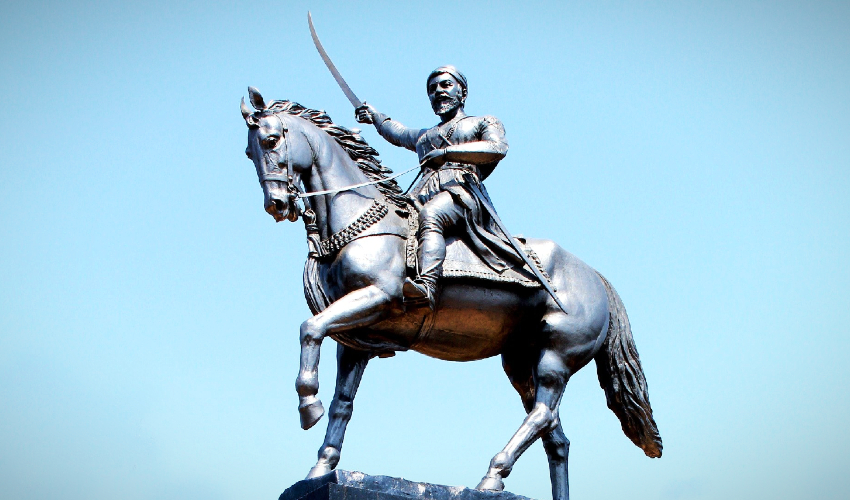
1630-1680 Shivaji: Hindutva Icon or Secular Nationalist? -
1630 -1680 
1630 -1680 Shivaji: His Legacy & His Times -
c. 1724 – 1857 A.D. 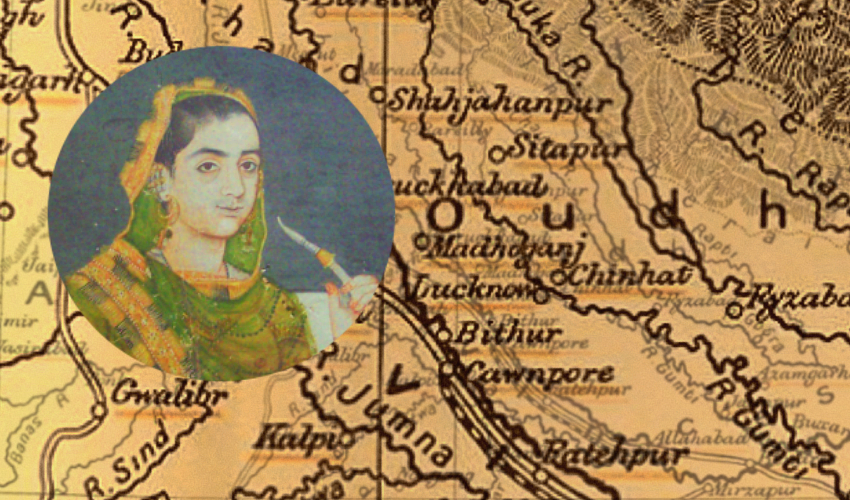
c. 1724 – 1857 A.D. Bahu Begum and the Gendered Struggle for Power -
1818 - Present 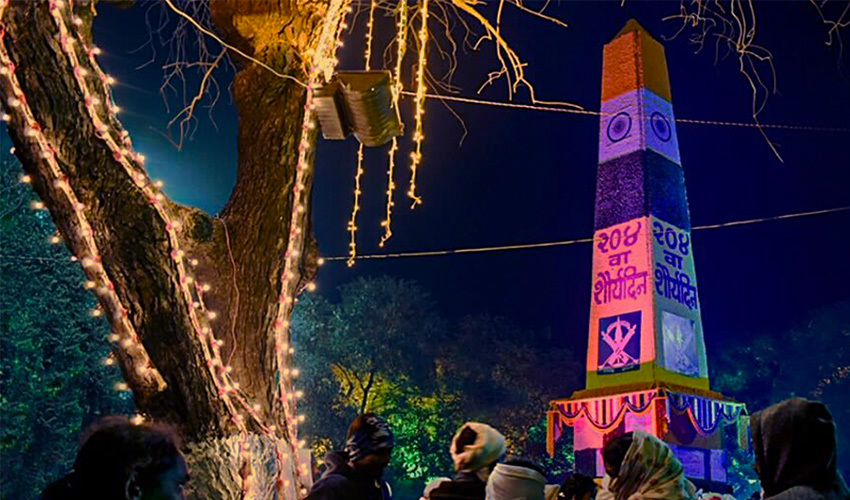
1818 - Present The Contesting Memories of Bhima-Koregaon -
1831 
1831 The Derozians’ India -
1855 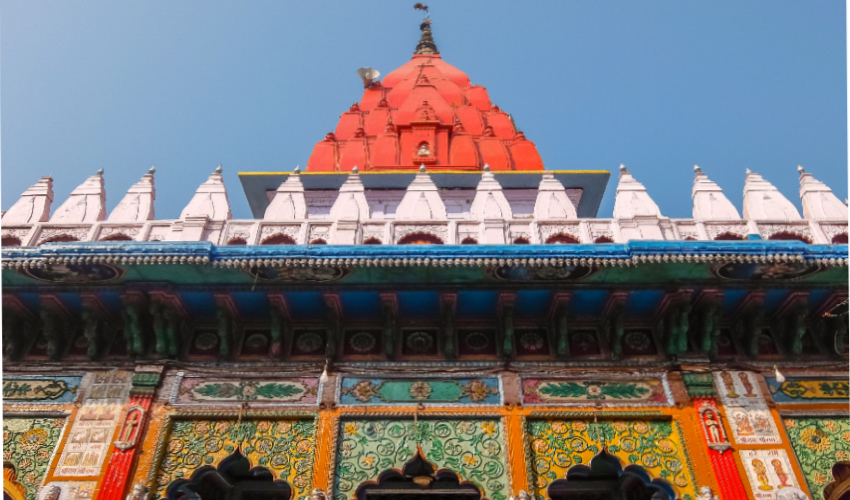
1855 Ayodhya 1855 -
1856 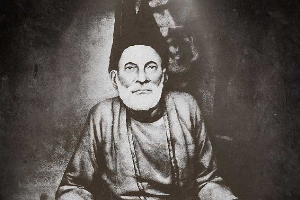
1856 “Worshipping the dead is not an auspicious thing” — Ghalib -
1857 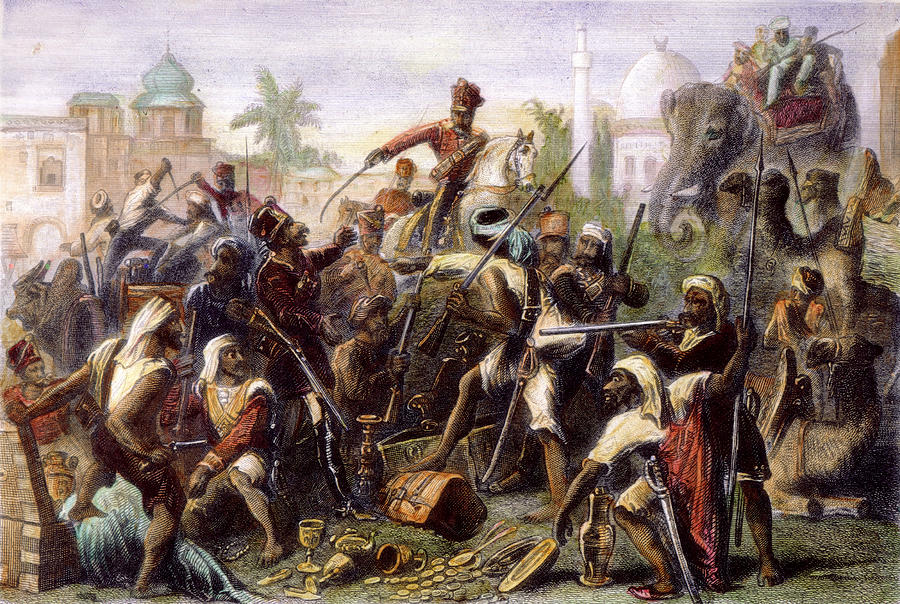
1857 A Subaltern speaks: Dalit women’s counter-history of 1857 -
1858 - 1976 
1858 - 1976 Lifestyle as Resistance: The Curious Case of the Courtesans of Lucknow -
1883 - 1894 
1883 - 1894 The Sea Voyage Question: A Nineteenth century Debate -
1887 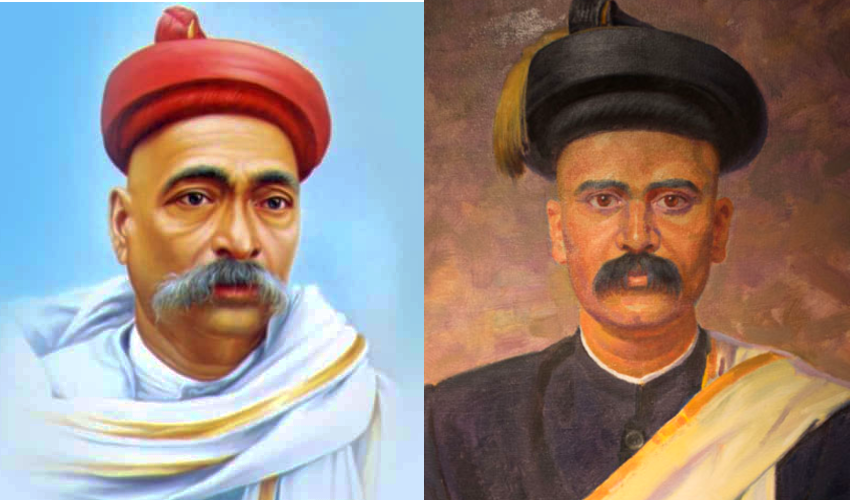
1887 The Great Debaters: Tilak Vs. Agarkar -
1893-1946 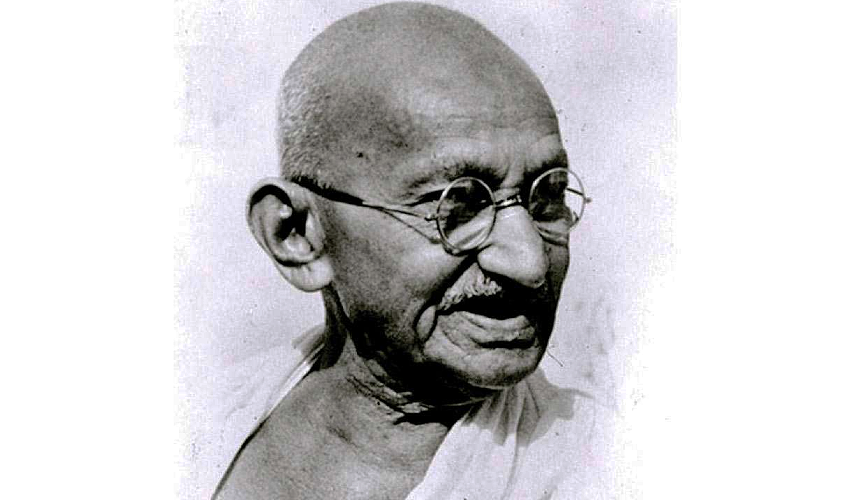
1893-1946 A Historian Recommends: Gandhi Vs. Caste -
1897 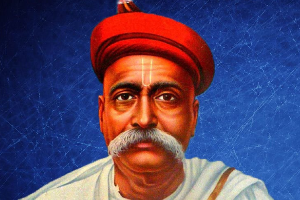
1897 Queen Empress vs. Bal Gangadhar Tilak: An Autopsy -
1913 - 1916 Modern Review 
1913 - 1916 A Young Ambedkar in New York -
1916 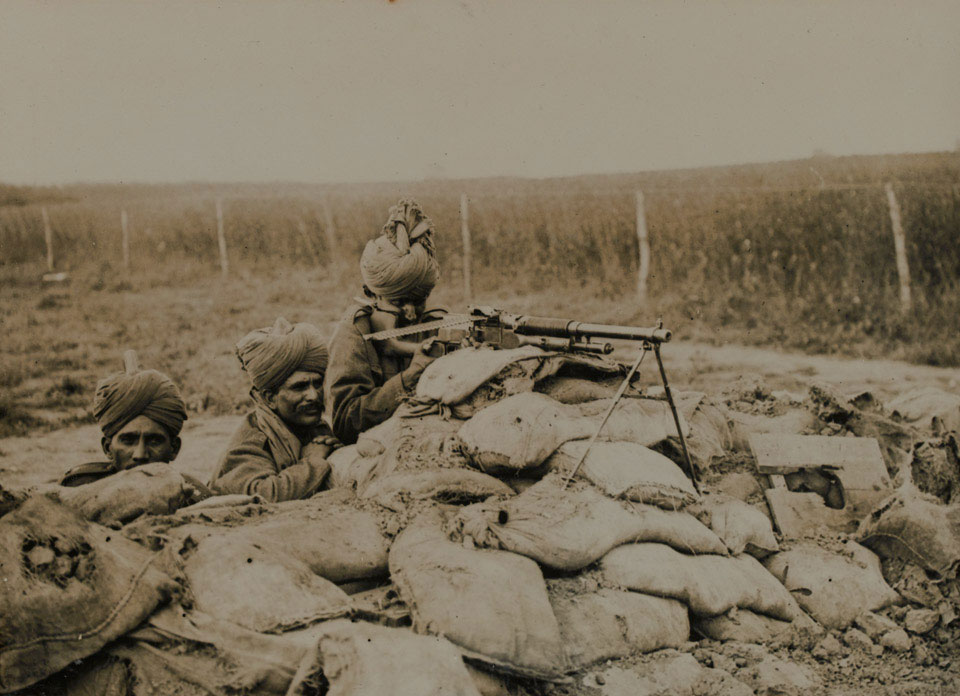
1916 A Rare Account of World War I by an Indian Soldier -
1917 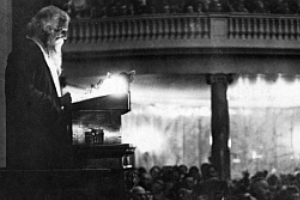
1917 On Nationalism, by Tagore -
1918 - 1919 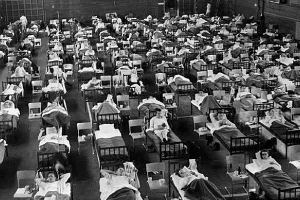
1918 - 1919 What Happened to the Virus That Caused the World’s Deadliest Pandemic? -
1920 - 1947 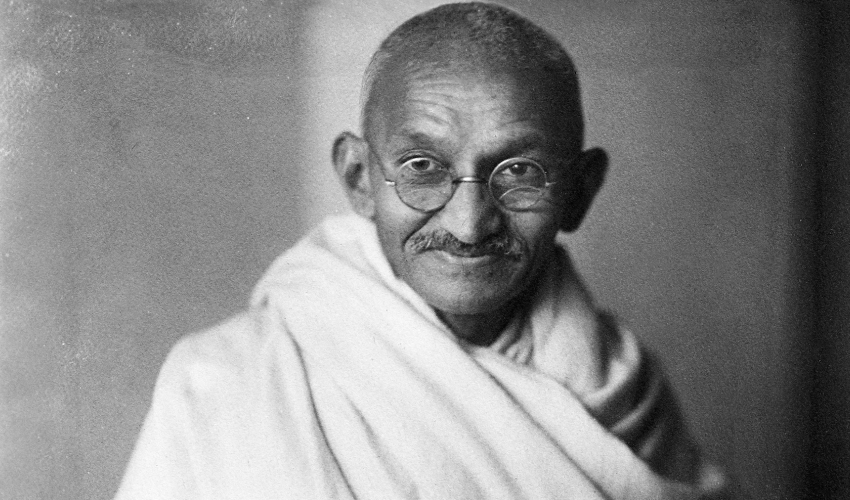
1920 - 1947 How One Should Celebrate Diwali, According to Gandhi -
1921 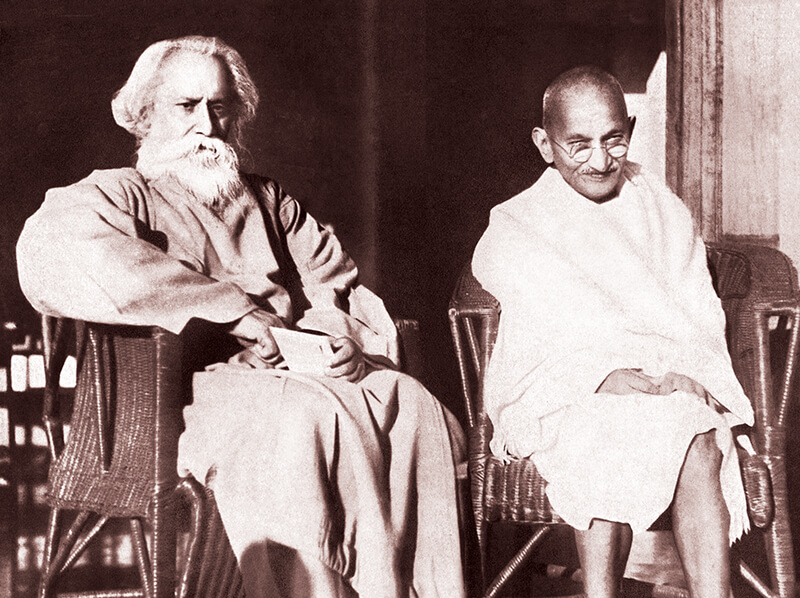
1921 Great Debates: Tagore Vs. Gandhi (1921) -
1921 - 2015 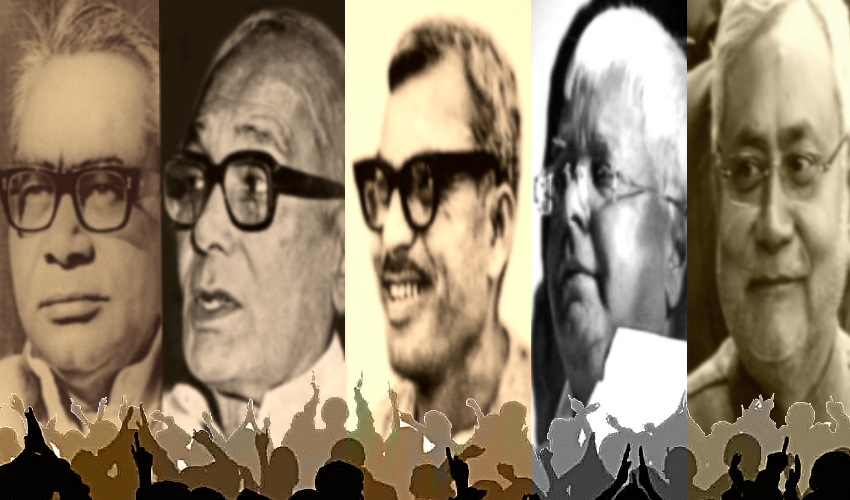
1921 - 2015 A History of Caste Politics and Elections in Bihar -
1915-1921 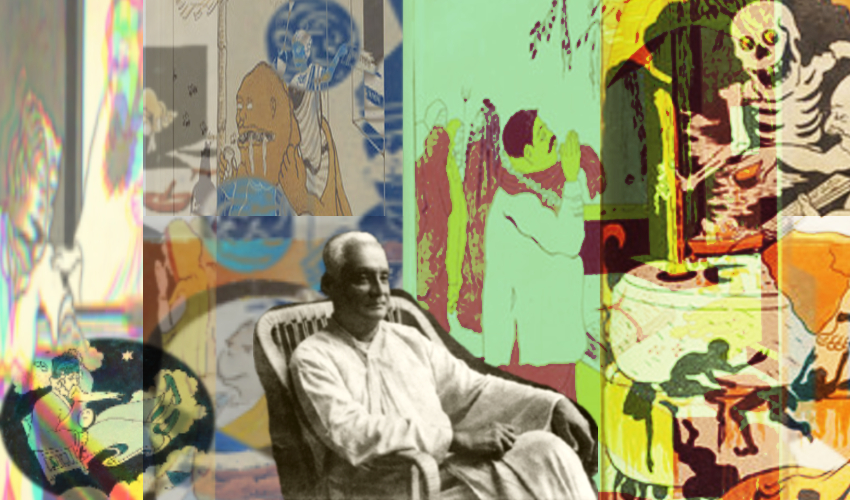
1915-1921 The Satirical Genius of Gaganendranath Tagore -
1924-1937 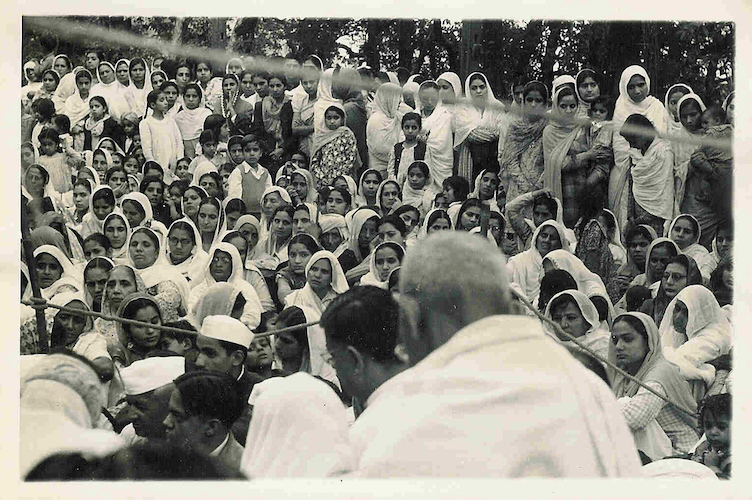
1924-1937 What were Gandhi’s Views on Religious Conversion? -
1900-1950 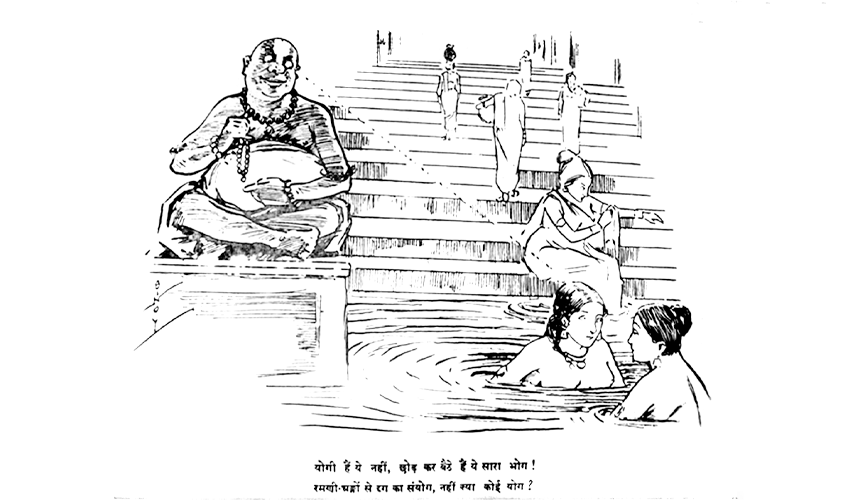
1900-1950 Gazing at the Woman’s Body: Historicising Lust and Lechery in a Patriarchal Society -
1925, 1926 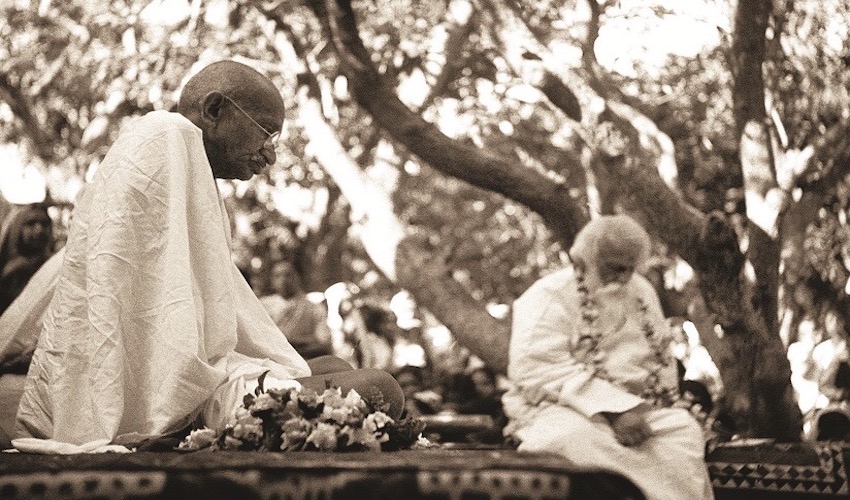
1925, 1926 Great Debates: Tagore vs Gandhi (1925-1926) -
1928 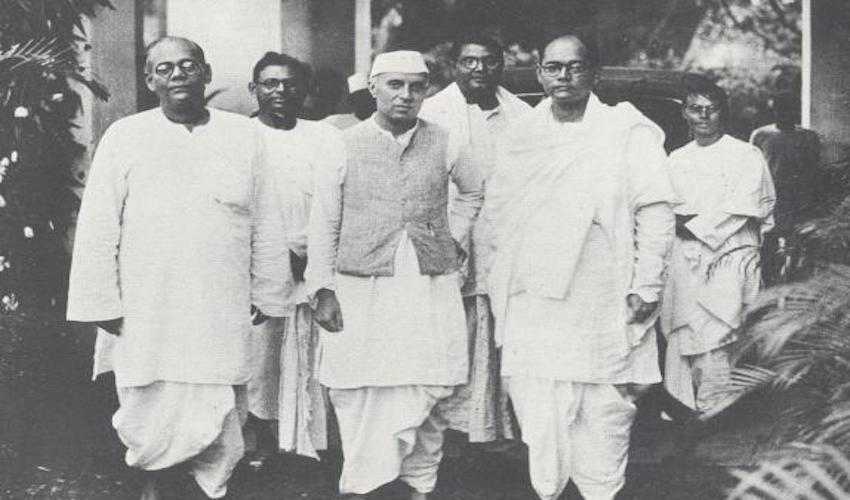
1928 Bhagat Singh’s dilemma: Nehru or Bose? -
1930 Modern Review 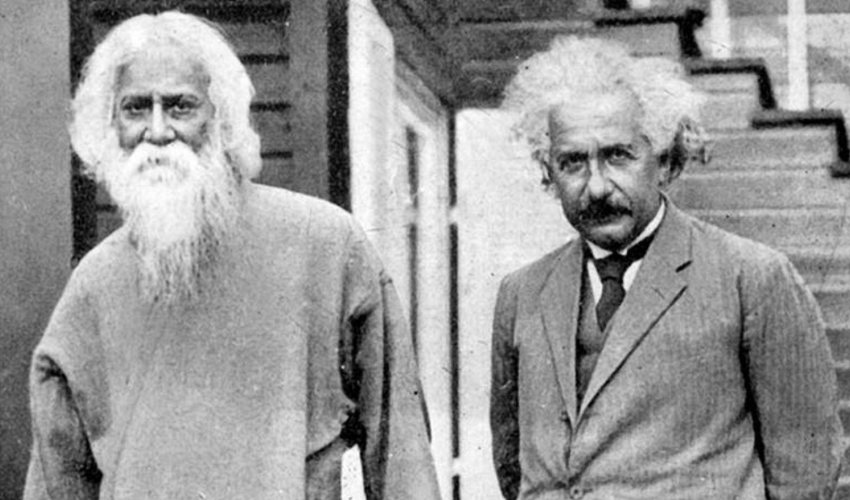
1930 The Modern Review Special: On the Nature of Reality -
1932 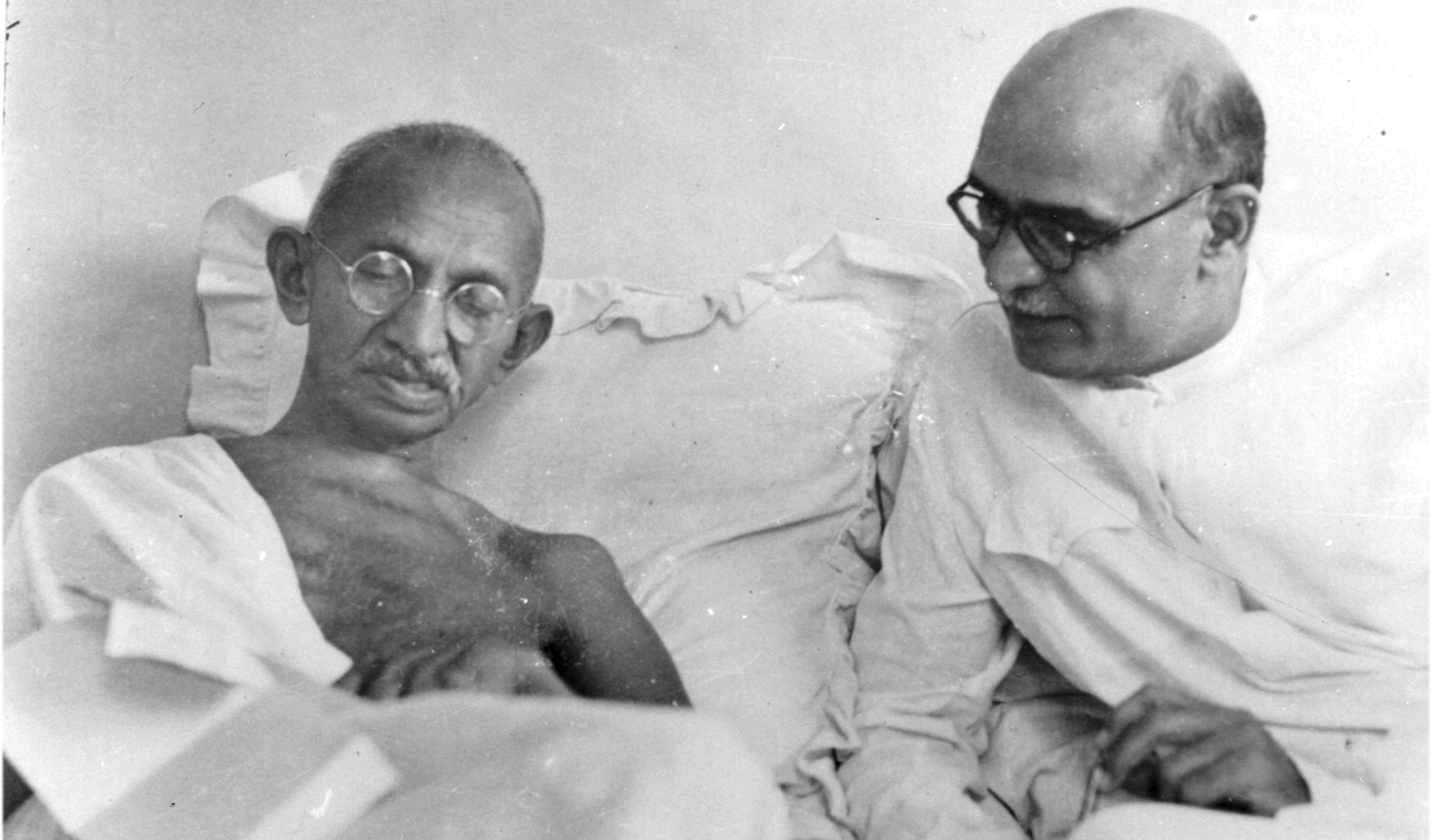
1932 Caste, Gandhi and the Man Beside Gandhi -
1933 - 1991 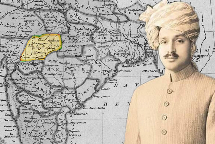
1933 - 1991 Raghubir Sinh: The Prince Who Would Be Historian -
1935 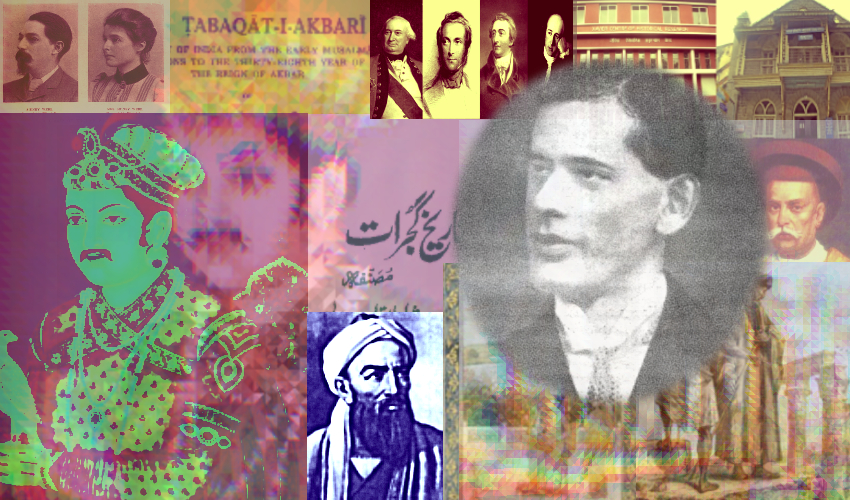
1935 A Historian Recommends: SA Khan’s Timeless Presidential Address -
1865-1928 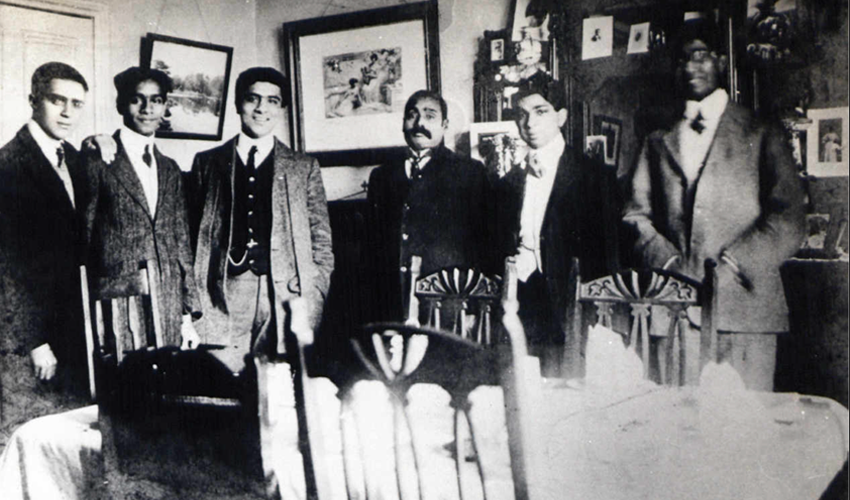
1865-1928 Understanding Lajpat Rai’s Hindu Politics and Secularism -
1935 Modern Review 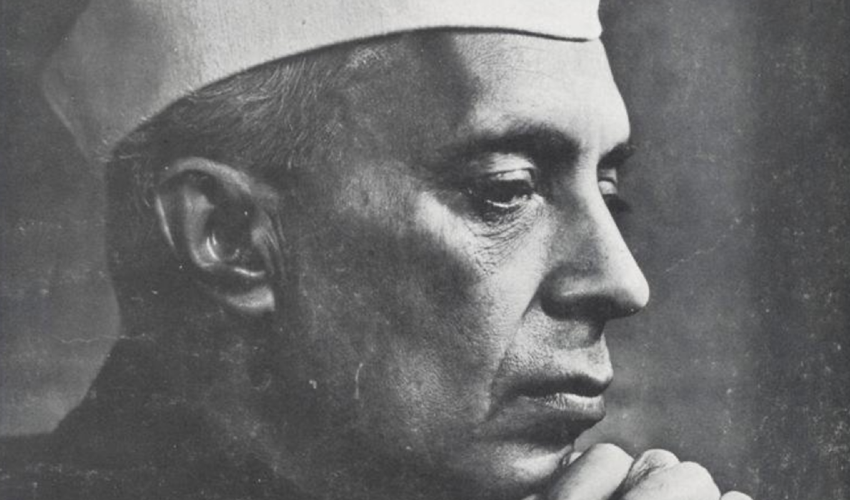
1935 The Modern Review Special: The Mind of a Judge -
1936 Modern Review 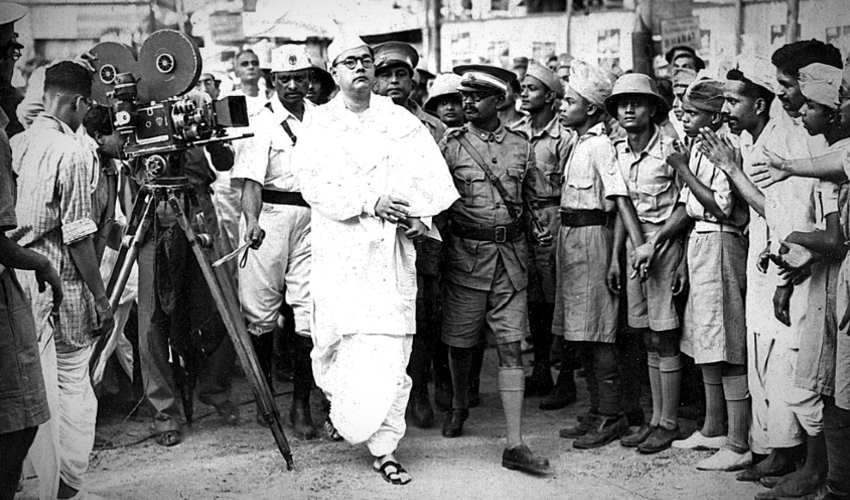
1936 The Modern Review Special: When Netaji Subhas Bose Was Wrongfully Detained for ‘Terrorism’ -
1936 
1936 Annihilation of Caste: Part 1 -
1936 Modern Review 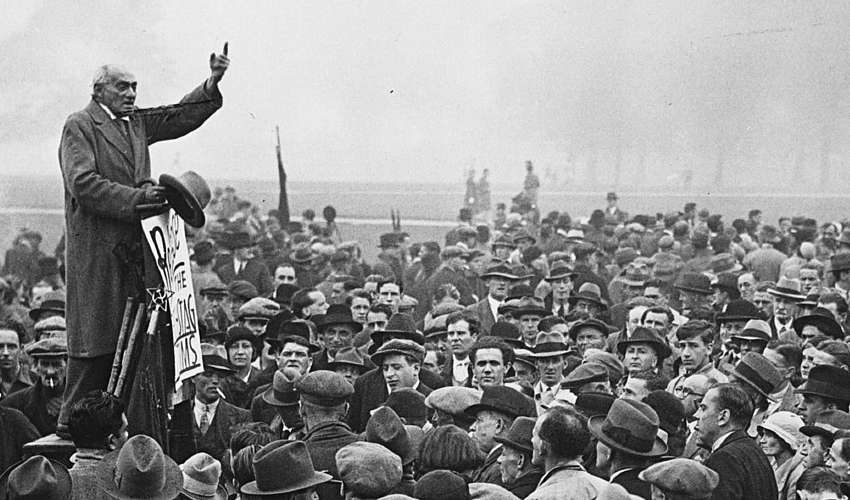
1936 The Modern Review Special: An Indian MP in the British Parliament -
1936 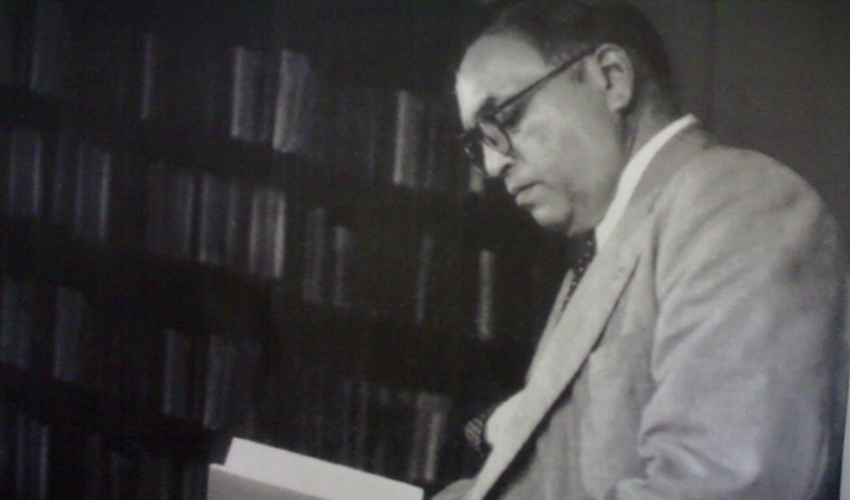
1936 Annihilation of Caste: Part 2 -
1936 
1936 A Reflection of His Age: Munshi Premchand on the True Purpose of Literature -
1936 Modern Review 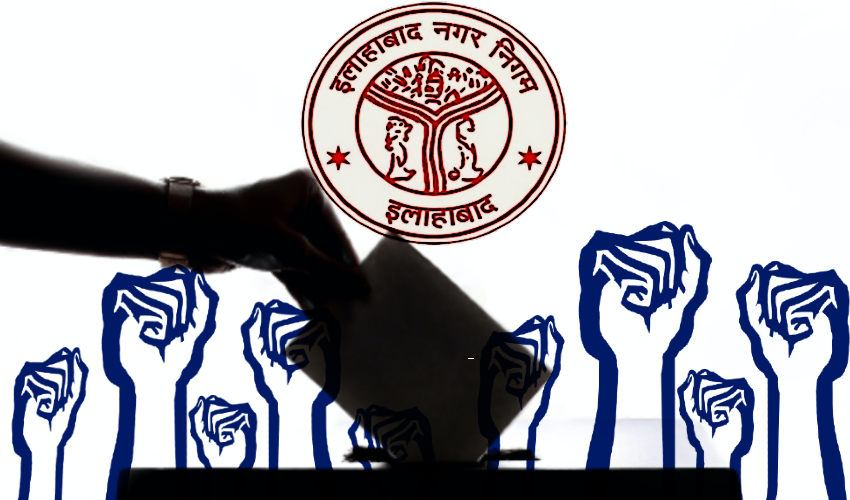
1936 The Modern Review Special: The Defeat of a Dalit Candidate in a 1936 Municipal Election -
1937 Modern Review 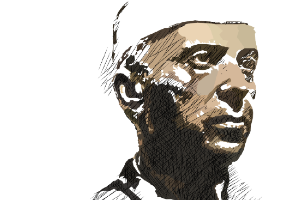
1937 The Modern Review Special: Rashtrapati -
1938 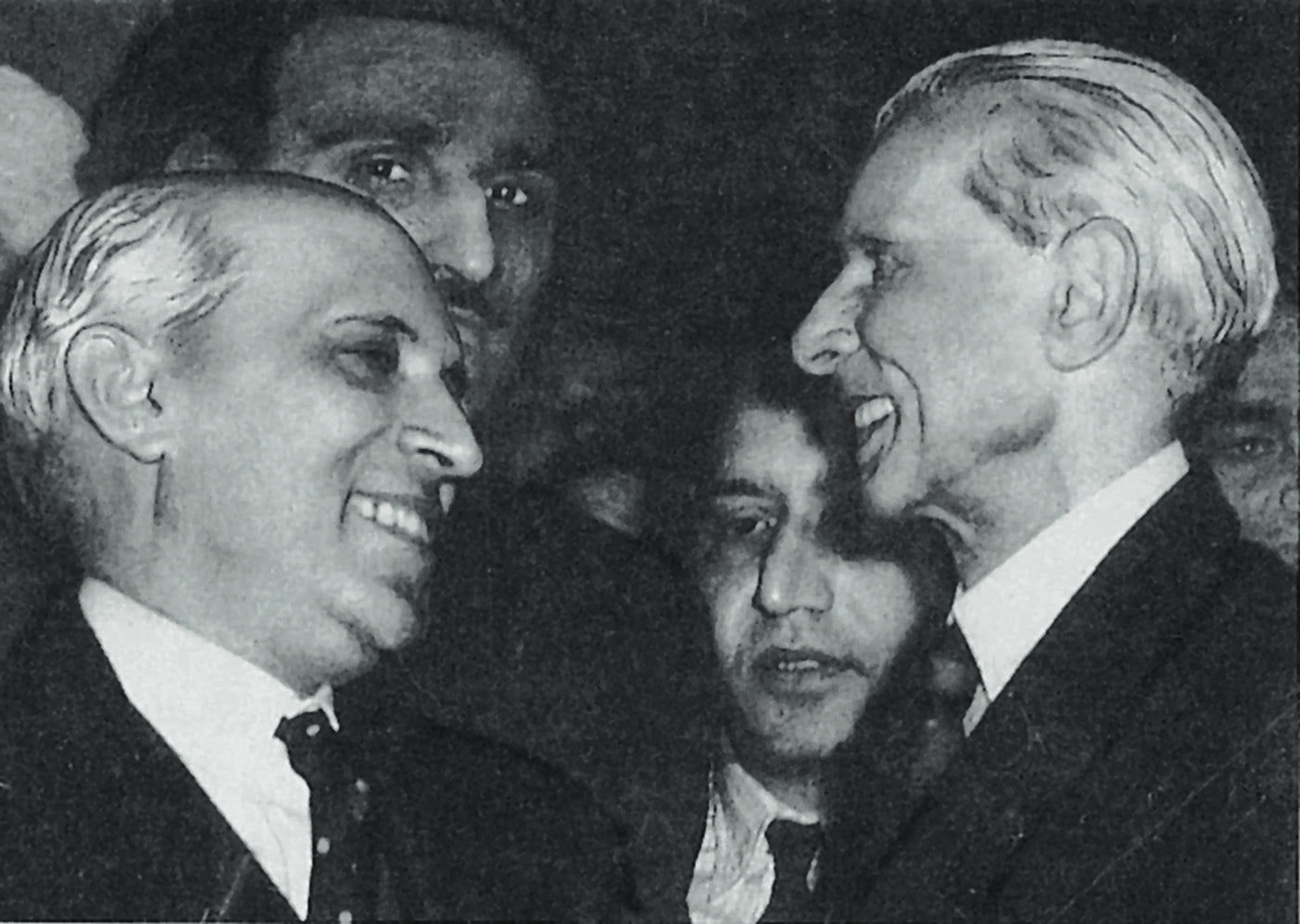
1938 Great Debates: Nehru Vs. Jinnah (1938) -
1942 Modern Review 
1942 IHC Uncovers: A Parallel Government In British India (Part 1) -
1943-1945 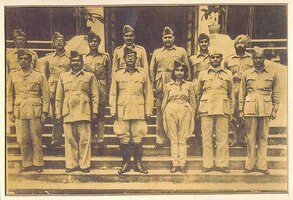
1943-1945 Origin Of The Azad Hind Fauj -
1942-1945 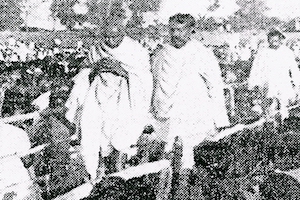
1942-1945 IHC Uncovers: A Parallel Government in British India (Part 2) -
1946 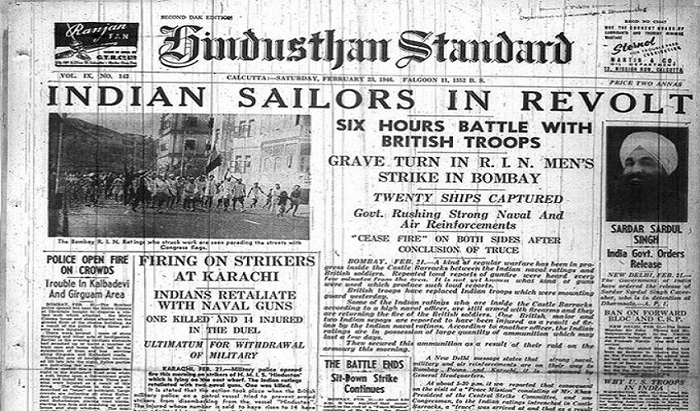
1946 Our Last War of Independence: The Royal Indian Navy Mutiny of 1946 -
1946 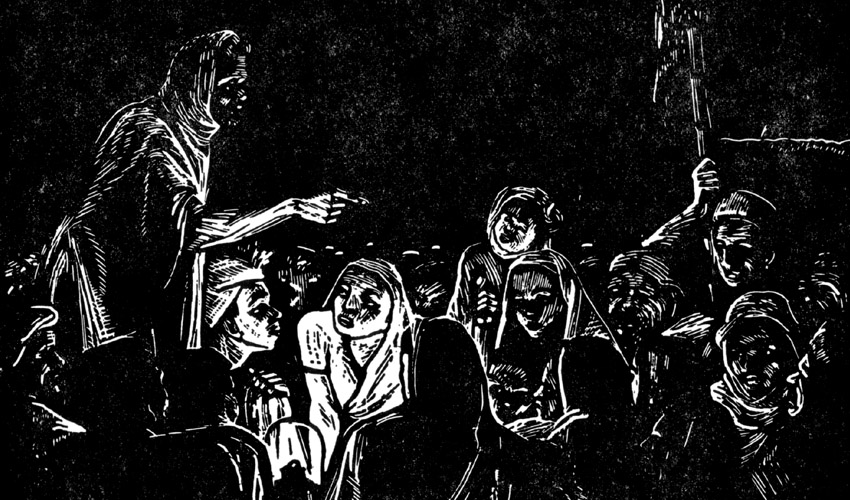
1946 An Artist’s Account of the Tebhaga Movement in Pictures And Prose -
1946 – 1947 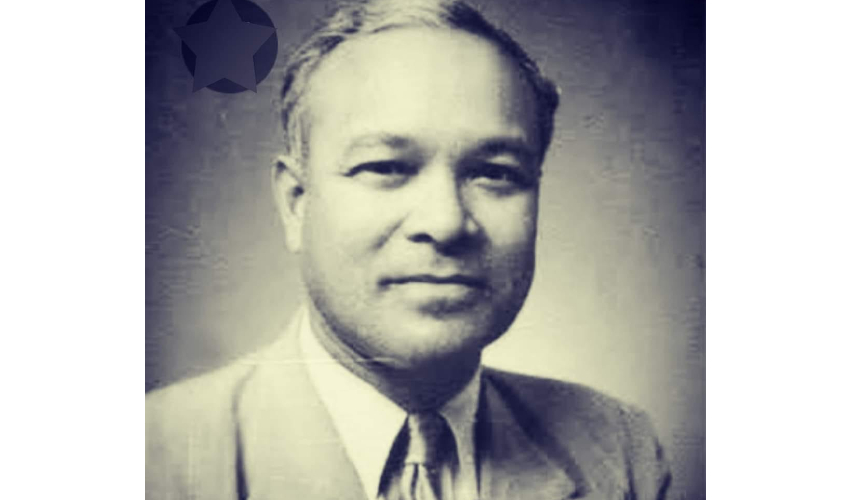
1946 – 1947 “The Most Democratic People on Earth” : An Adivasi Voice in the Constituent Assembly -
1946-1947 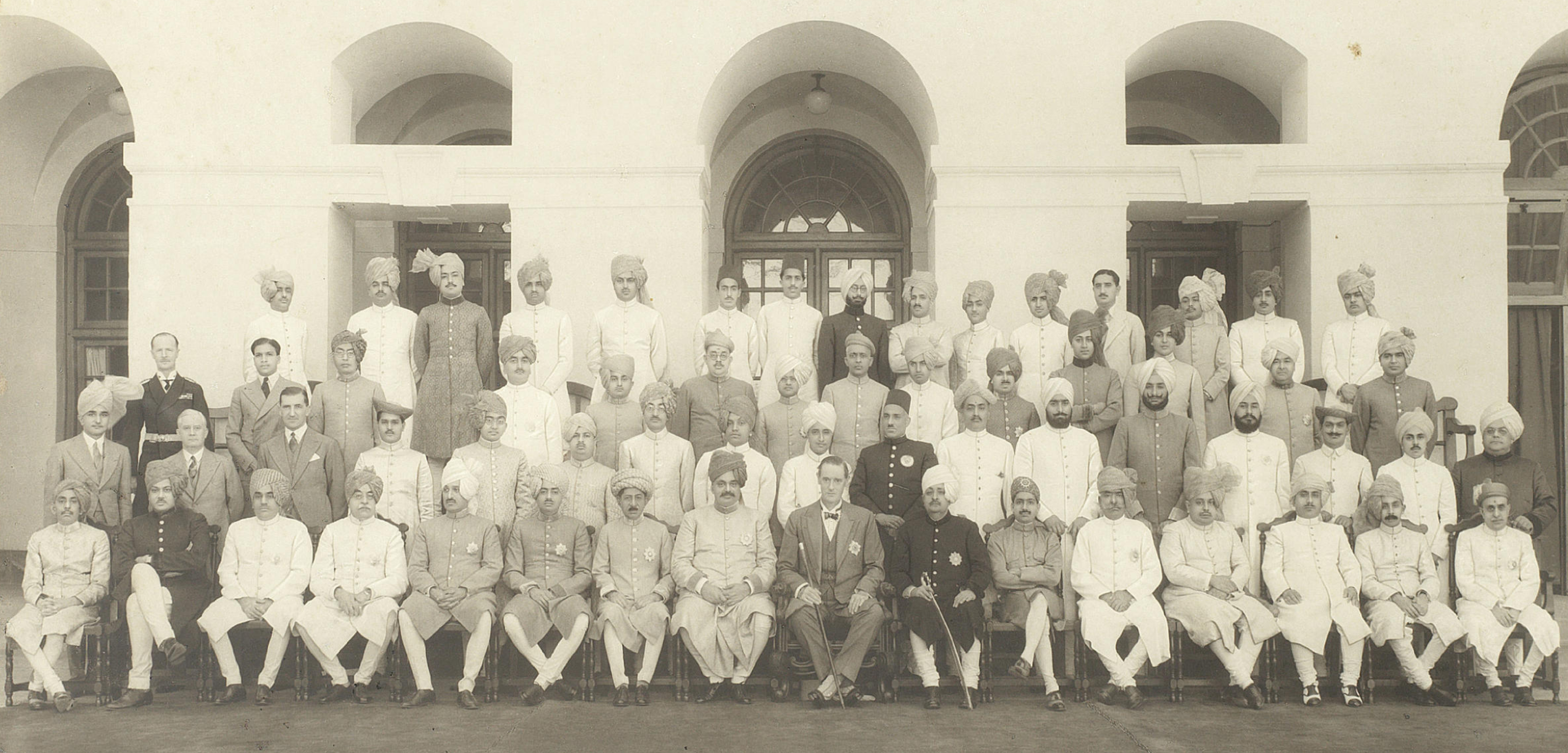
1946-1947 VP Menon and the Birth of Independent India -
1916 - 1947 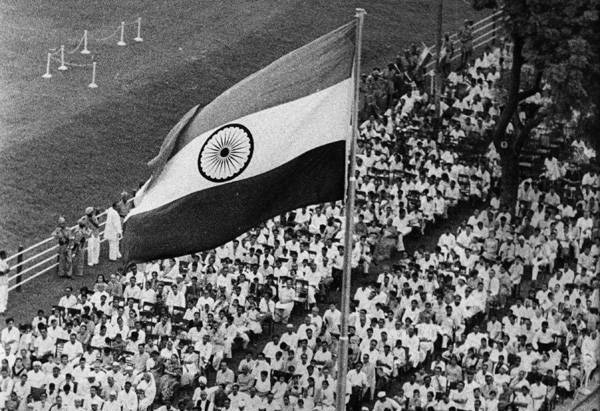
1916 - 1947 8 @ 75: 8 Speeches Independent Indians Must Read -
1947-1951 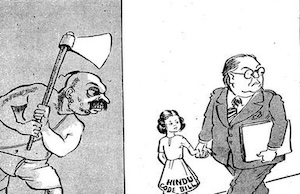
1947-1951 Ambedkar Cartoons: The Joke’s On Us -
1948 
1948 “My Father, Do Not Rest” -
1940-1960 
1940-1960 Integration Myth: A Silenced History of Hyderabad -
1948 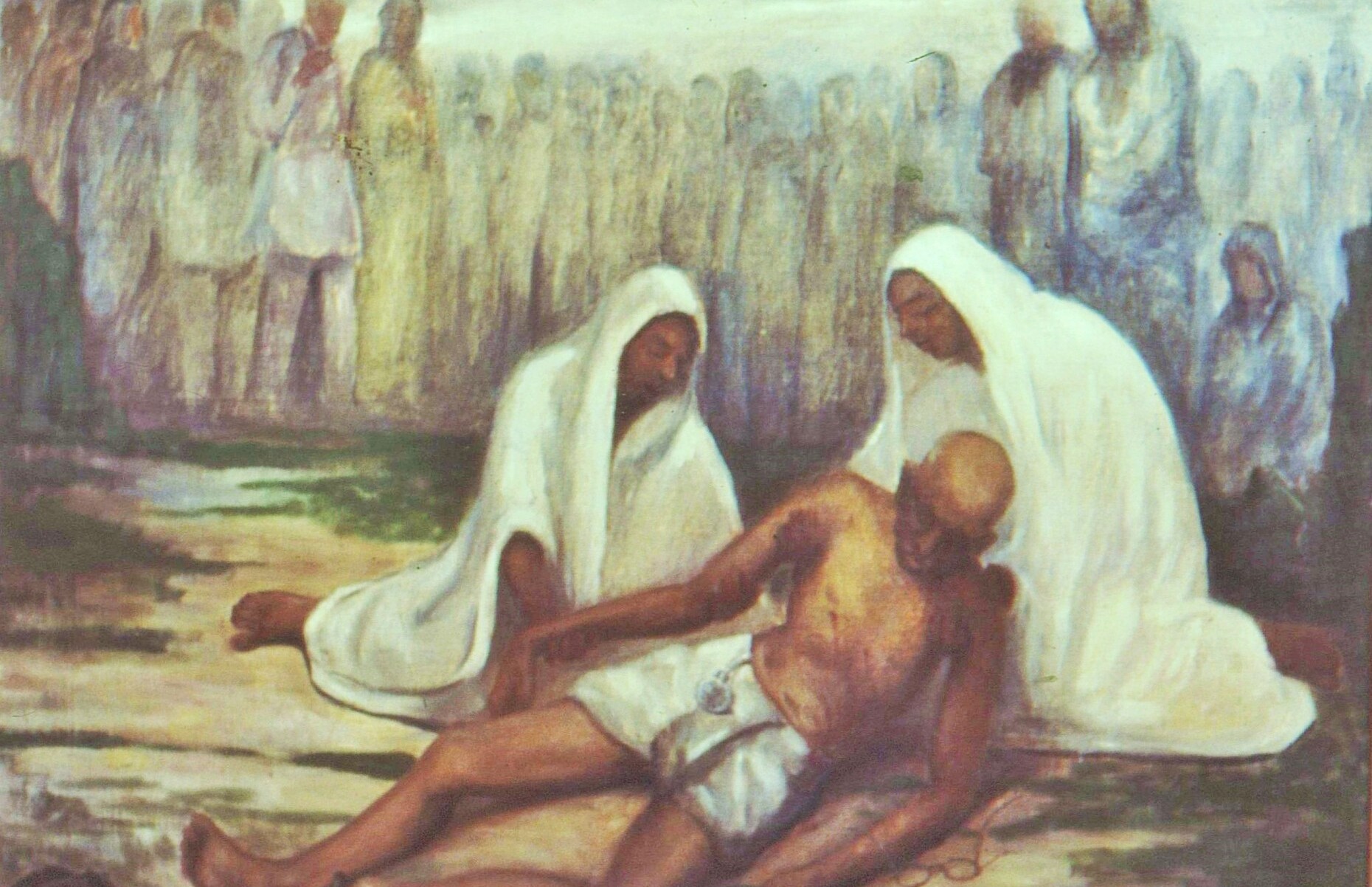
1948 The Assassination of a Mahatma, the Princely States and the ‘Hindu’ Nation -
1949 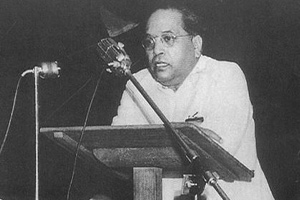
1949 Ambedkar warns against India becoming a ‘Democracy in Form, Dictatorship in Fact’ -
1950 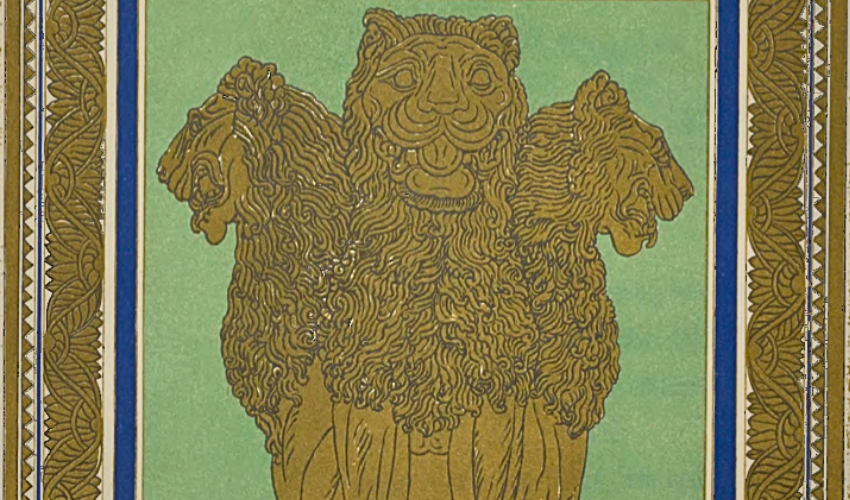
1950 Illustrations from the constitution -
1951 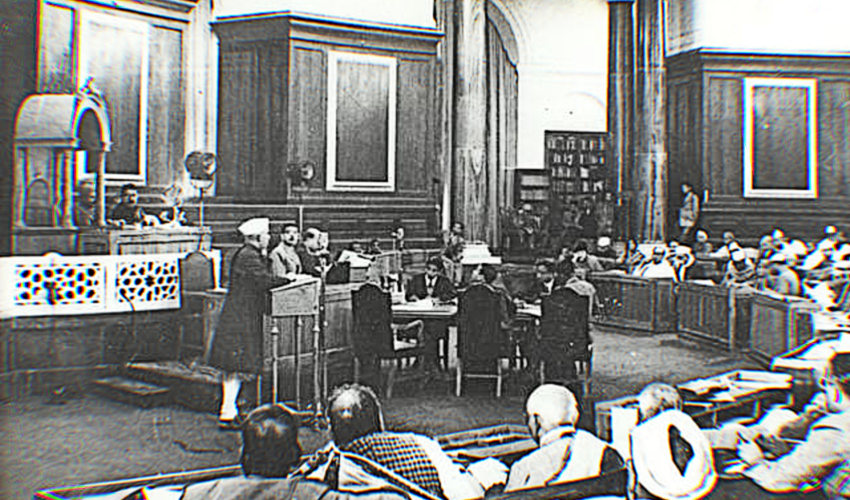
1951 How the First Amendment to the Indian Constitution Circumscribed Our Freedoms & How it was Passed -
1967 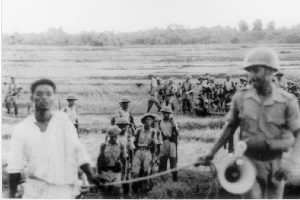
1967 Once Upon A Time In Naxalbari -
1970 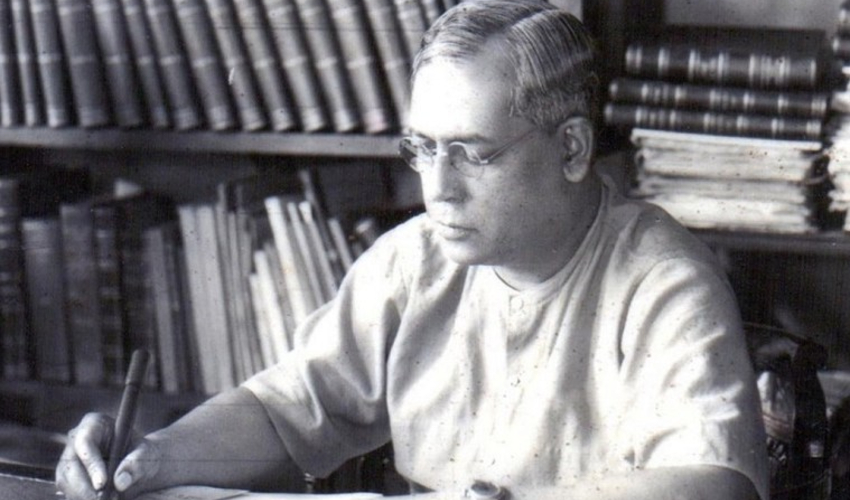
1970 R.C. Majumdar on Shortcomings in Indian Historiography -
1973 - 1993 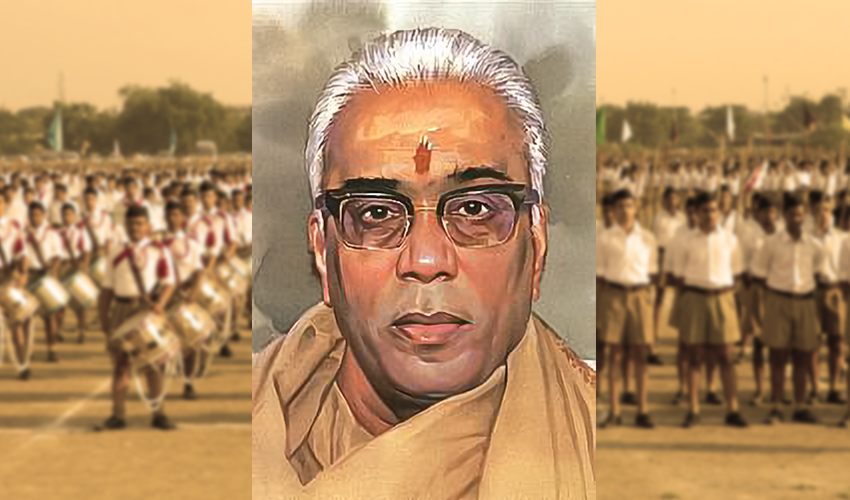
1973 - 1993 Balasaheb Deoras: Kingmaker of the Sangh -
1975 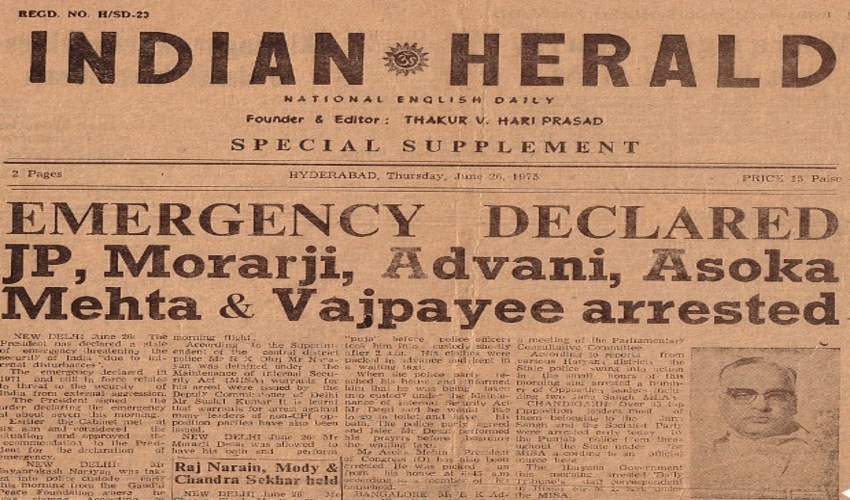
1975 The Emergency Package: Shadow Power -
1975 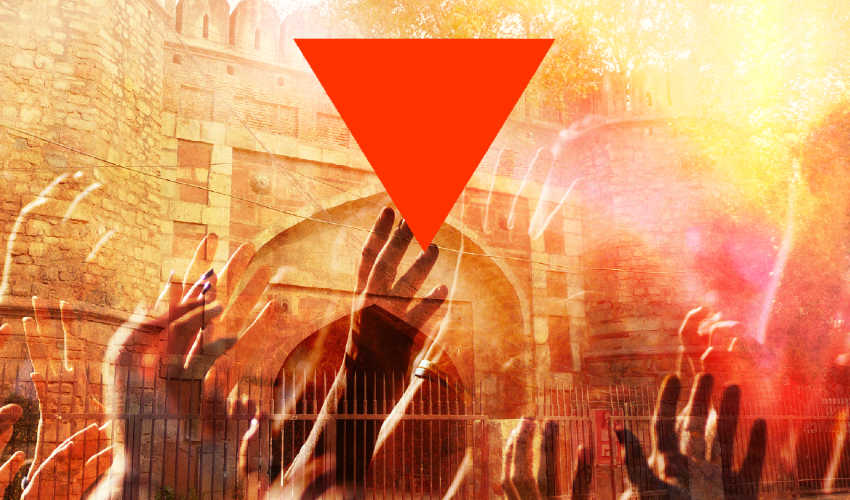
1975 The Emergency Package: The Prehistory of Turkman Gate – Population Control -
1977 – 2011 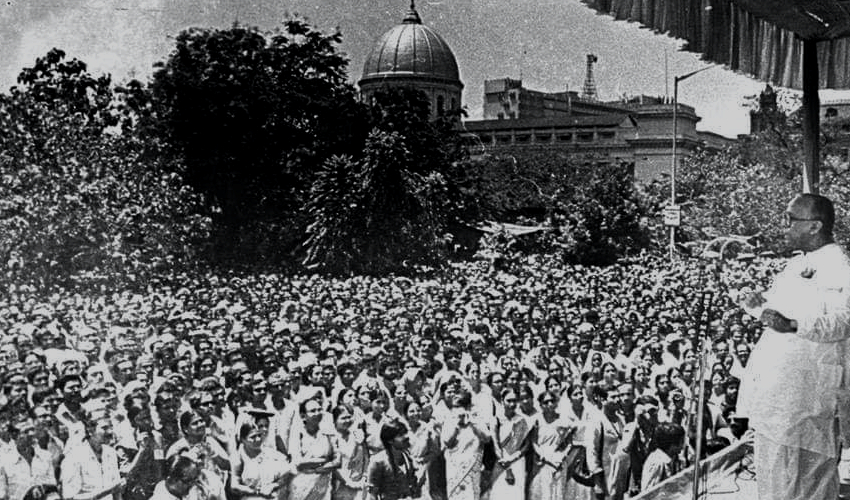
1977 – 2011 Power is an Unforgiving Mistress: Lessons from the Decline of the Left in Bengal -
1984 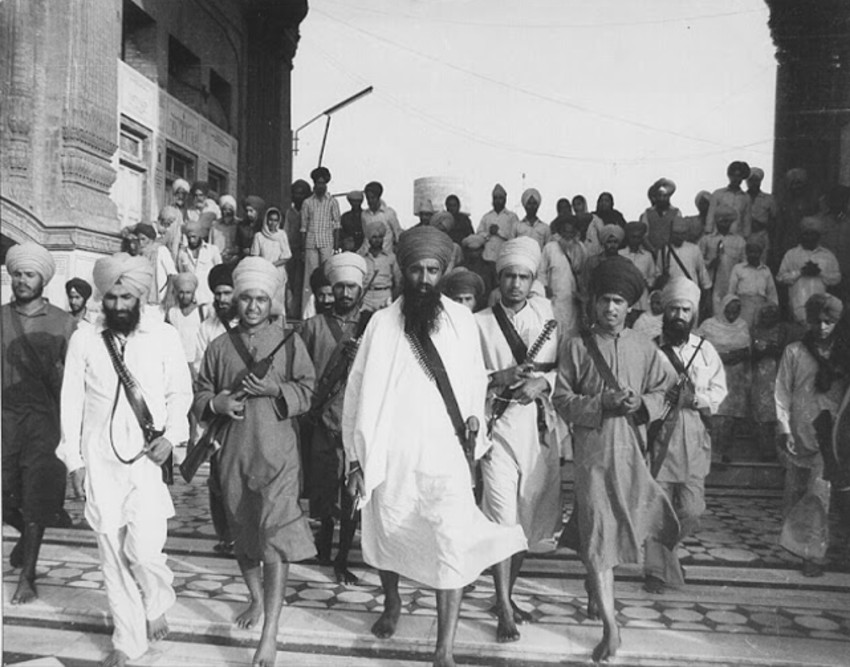
1984 Mrs Gandhi’s Final Folly: Operation Blue Star -
1916-2004 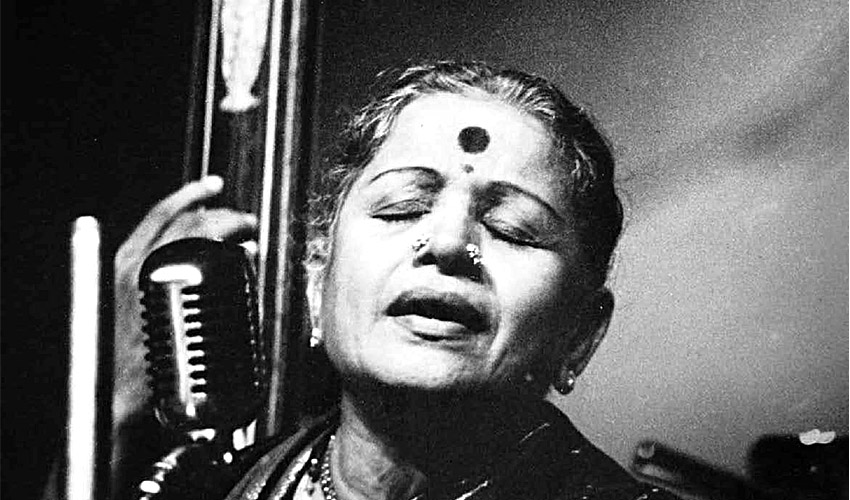
1916-2004 Amjad Ali Khan on M.S. Subbulakshmi: “A Glorious Chapter for Indian Classical Music” -
2008 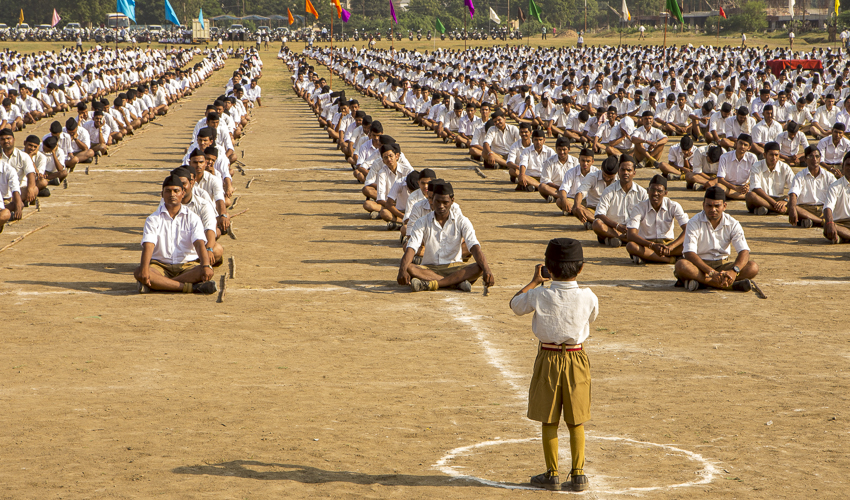
2008 Whose History Textbook Is It Anyway? -
2006 - 2009 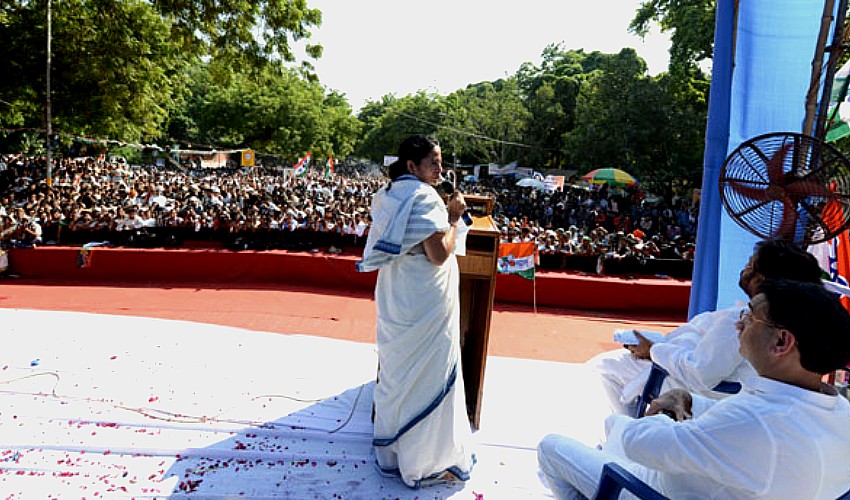
2006 - 2009 Singur-Nandigram-Lalgarh: Movements that Remade Mamata Banerjee -
2020 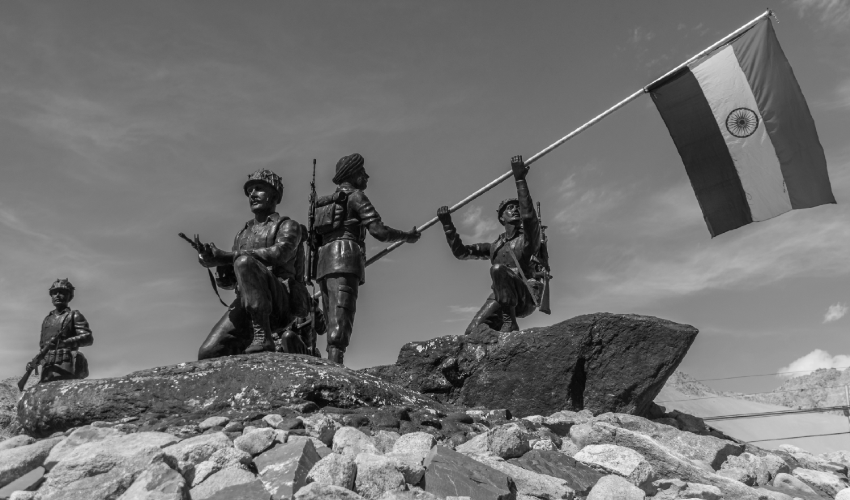
2020 The Indo-China Conflict: 10 Books We Need To Read -
2021 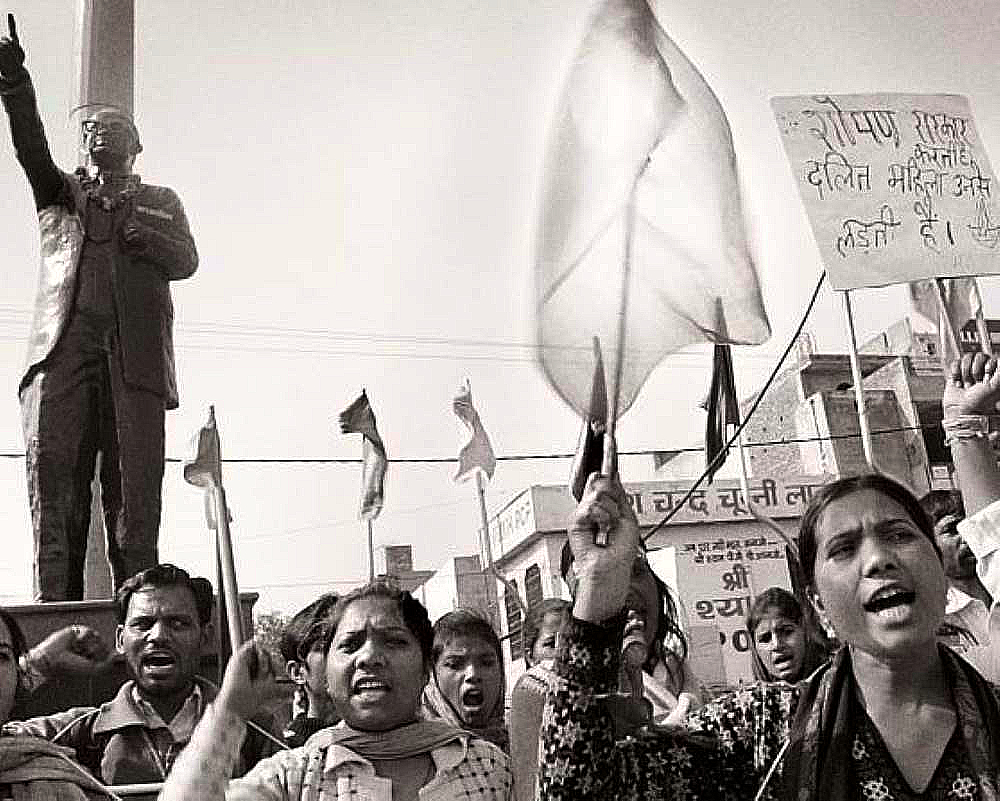
2021 Singing/Writing Liberation: Dalit Women’s Narratives

